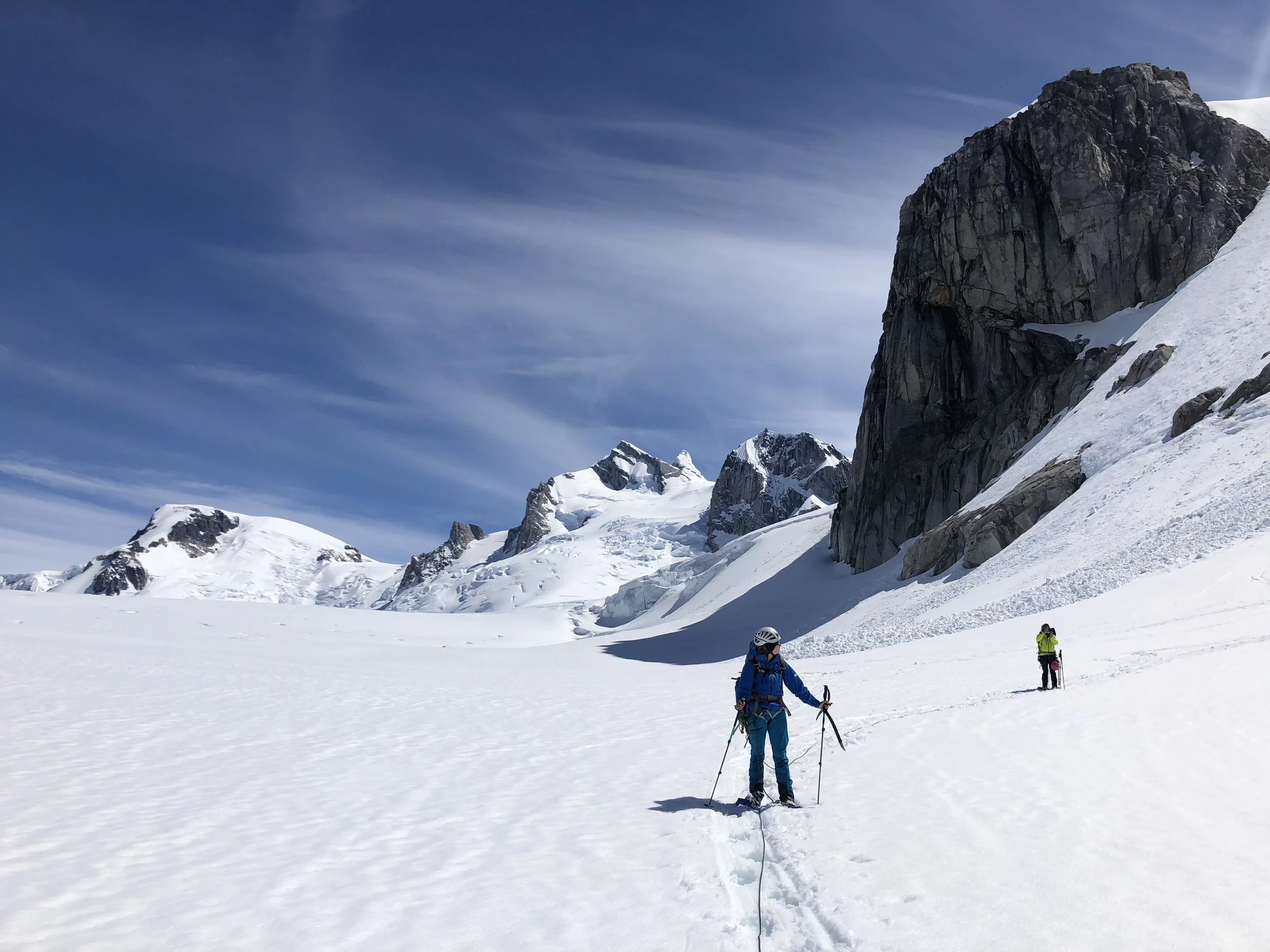
The North Patagonian Icefield Crossing
Discover the remote wilderness of the North Patagonian Icefield, where crevasse-riddled glaciers, tempestuous weather, and stunning mountain scenery await. This challenging, self-supported expedition takes you into one of the least explored corners of Chilean Patagonia.
An Expedition Through Patagonia’s Wild Heart
The North Patagonian Icefield offers an adventure like no other—a crossing that requires physical endurance, technical skill, and a deep appreciation for the raw beauty of the environment. Starting at Lago Leones, this expedition takes you through lenga forests, up glaciated valleys, across creaking icefields, and down the mighty San Rafael Glacier to the Pacific coast.
Over three weeks, you’ll navigate some of the most remote and rugged terrain on earth, testing your limits while gaining invaluable mountaineering experience. Snowshoes or crampons, ropes, and ice axes will become second nature as you move through this untouched expanse, surrounded by towering peaks and the timeless, unforgiving beauty of the icefield.

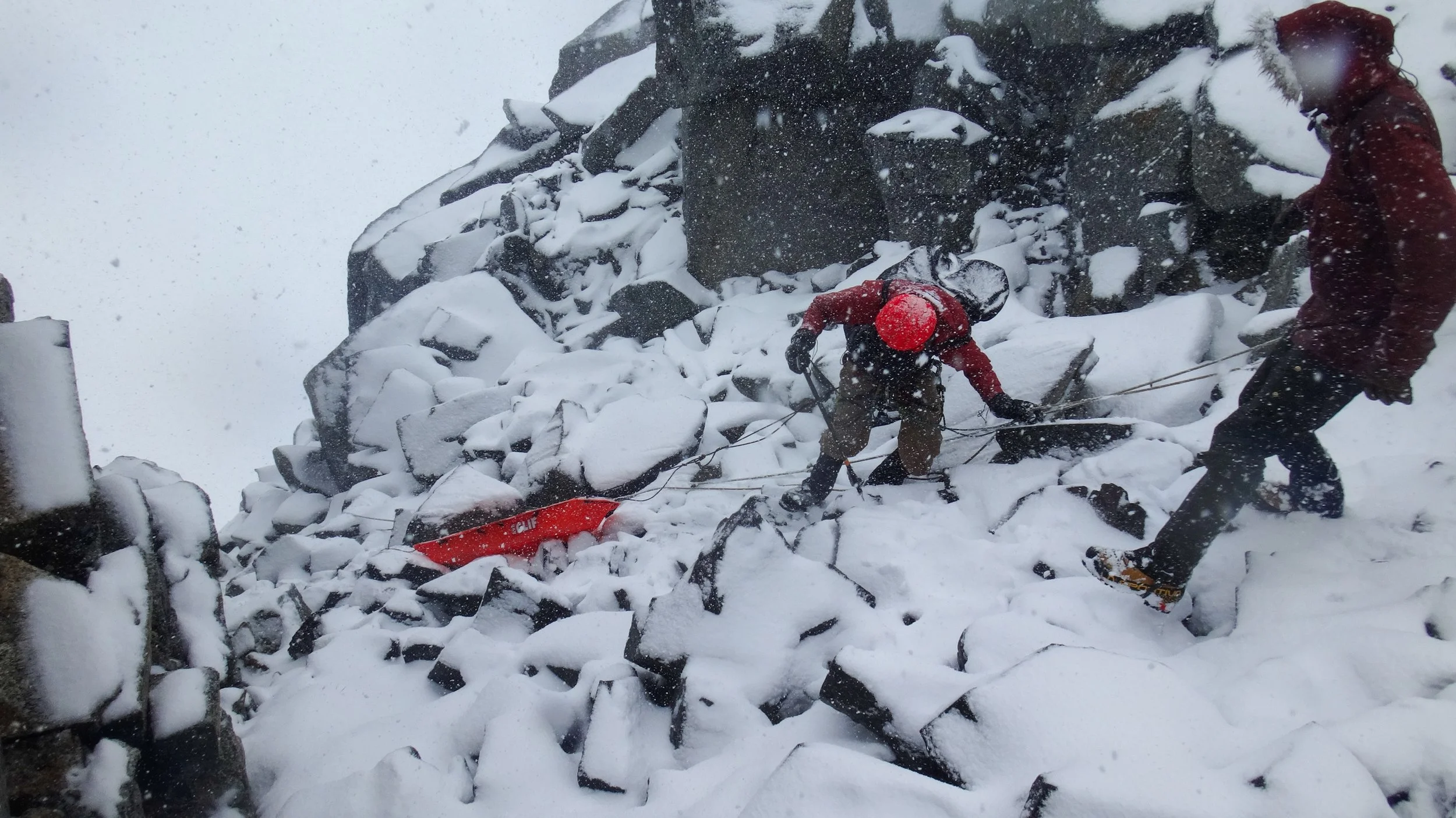
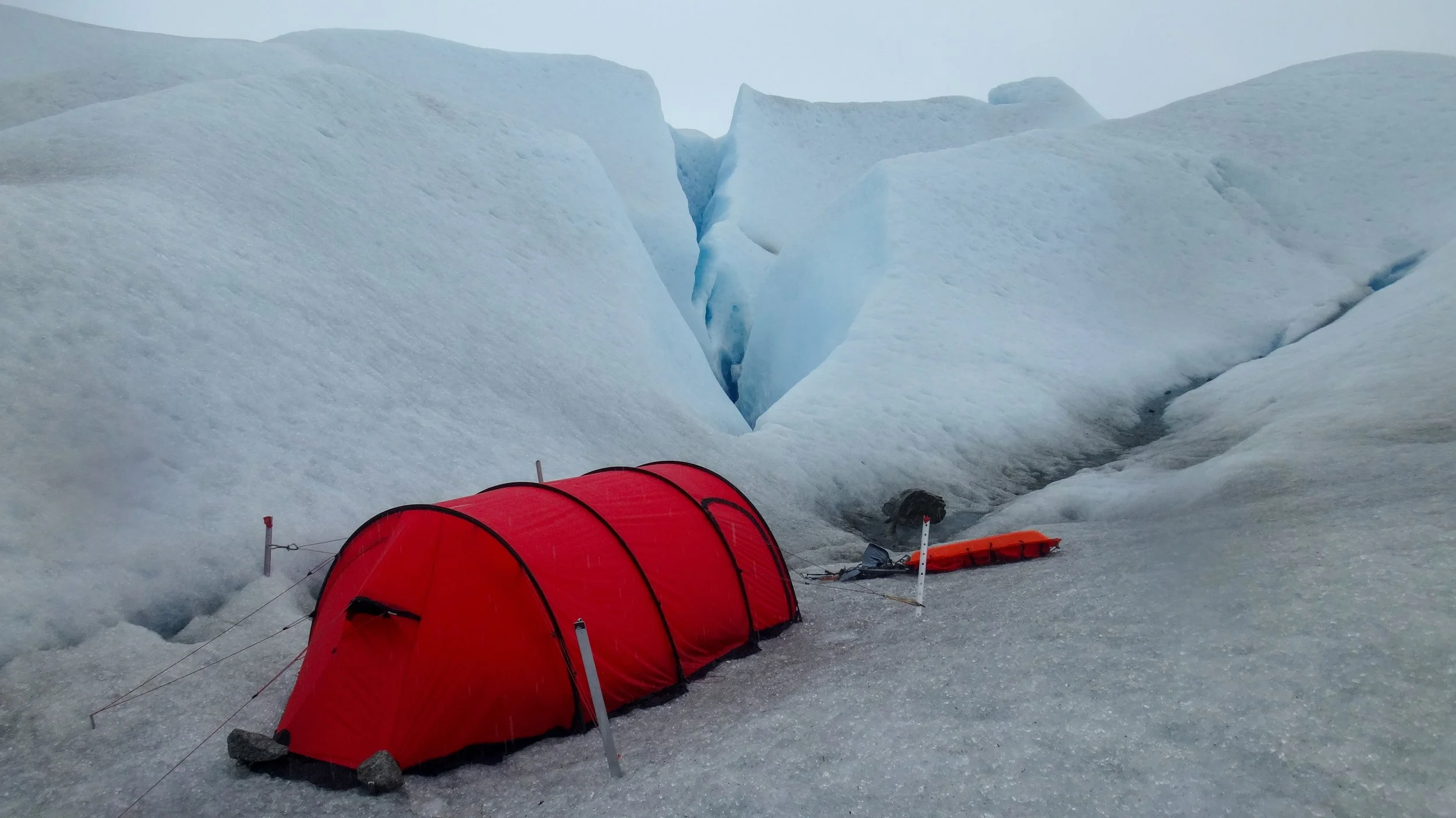

Cerro Manquini Views: Summit Cerro Manquini (2,387m) for panoramic vistas stretching across the icefield to distant lakes and valleys, offering a profound sense of achievement and perspective.
Lago Leones and the Leones Glacier: Begin your journey at the serene Lago Leones, a turquoise lake fed by glacial waters, surrounded by snow-capped peaks. Ascend through dense lenga forests and rugged trails to reach the Leones Glacier, where the true adventure commences.
The Crossing Highlights
The Ice Cap Proper: Traverse the vast, white expanse of the icefield, experiencing the isolation and grandeur of this frozen desert. The endless horizons of snow and ice provide a surreal and humbling backdrop to your journey.
San Rafael Glacier Descent: Navigate the intricate maze of crevasses and ice formations as you descend the formidable San Rafael Glacier, culminating at the Pacific coast where the glacier meets the sea.
Wild Patagonian Weather: Embrace the full spectrum of Patagonia’s infamous weather—from radiant sunshine to fierce storms—testing your resilience and adaptability in this unpredictable environment.
Below is the map of our route through the mountains

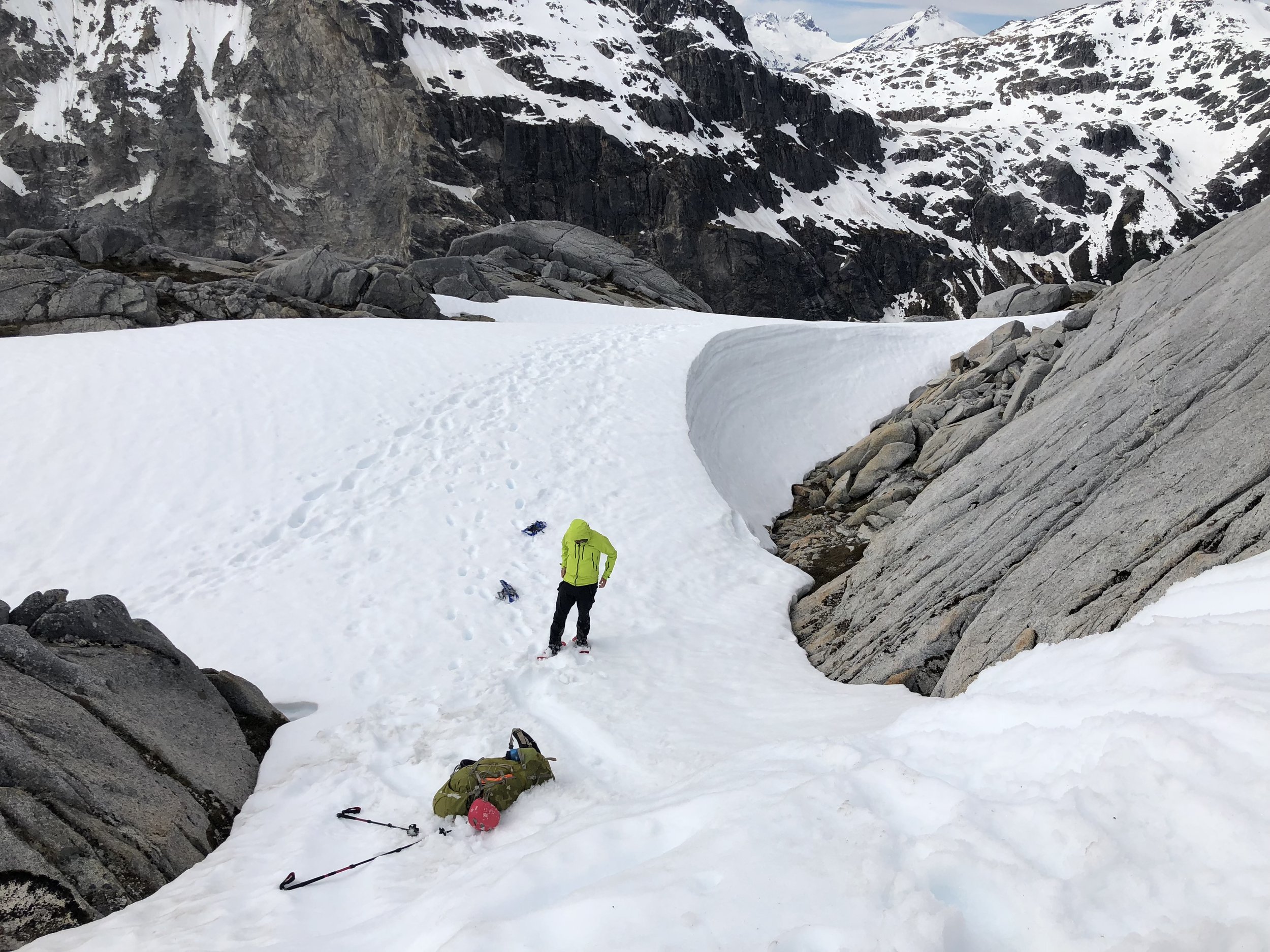
This expedition demands both physical fitness and mental determination. Early mornings and long days are the norms, often in challenging weather conditions. You’ll navigate steep ascents, complex crevasse fields, and exposed ice ramps, with evenings dedicated to setting up camps in the snow, sharing stories, and preparing for the next day’s endeavors.
Expect to:
• Haul Sleds: Transport gear across undulating icefields using sleds, requiring teamwork and endurance.
• Roped Team Travel: Move as part of a roped team to safely traverse crevassed terrain, ensuring group safety and cohesion.
• Navigation: Utilize GPS and traditional map-reading skills to find your way, often in low visibility or whiteout conditions.
• Camp Craft: Develop proficiency in setting up and maintaining camps in extreme conditions, ensuring comfort and safety in the wilderness.
What to expect during your North Patagonian Icefield Crossing
We only have very limited places on this expedition, get in contact today and reserve your spot on our next adventure.
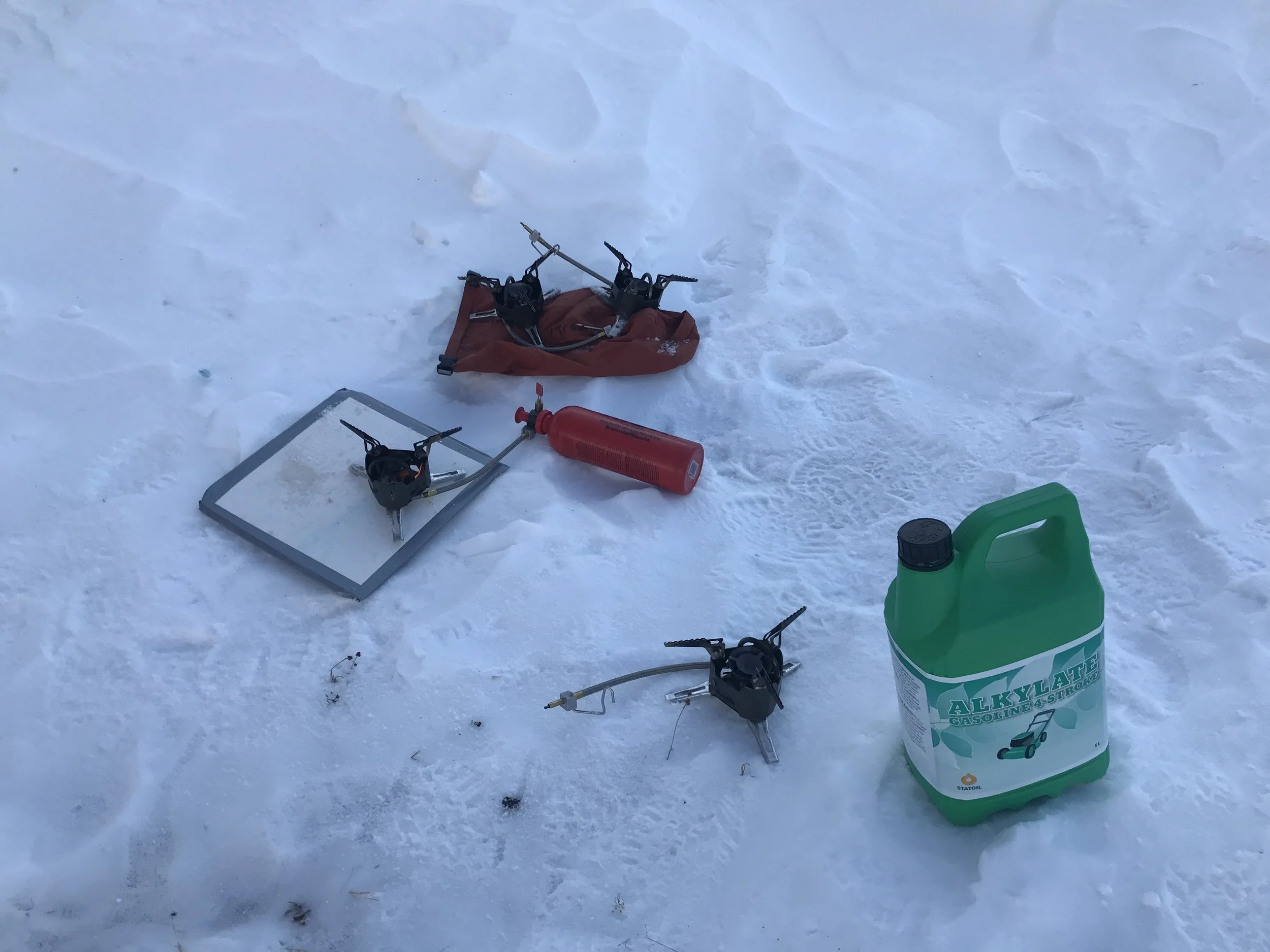
Expedition Safety
Your Safety is Our Top Priority on Every Trip
Expedition Safety
Safety is at the forefront of this expedition. Before stepping onto the icefield, you’ll undergo extensive training in:
• Glacial Rescue Techniques: Learn crevasse rescue methods to effectively respond to potential emergencies.
• Avalanche Awareness and Prevention: Understand avalanche risks and implement strategies to mitigate them.
• Technical Skills: Gain proficiency in using snowshoes, crampons, ice axes, and ropes, essential for navigating the varied terrain.
Guides are equipped with satellite communication devices, emergency beacons, and extensive first aid kits to ensure the highest level of preparedness.
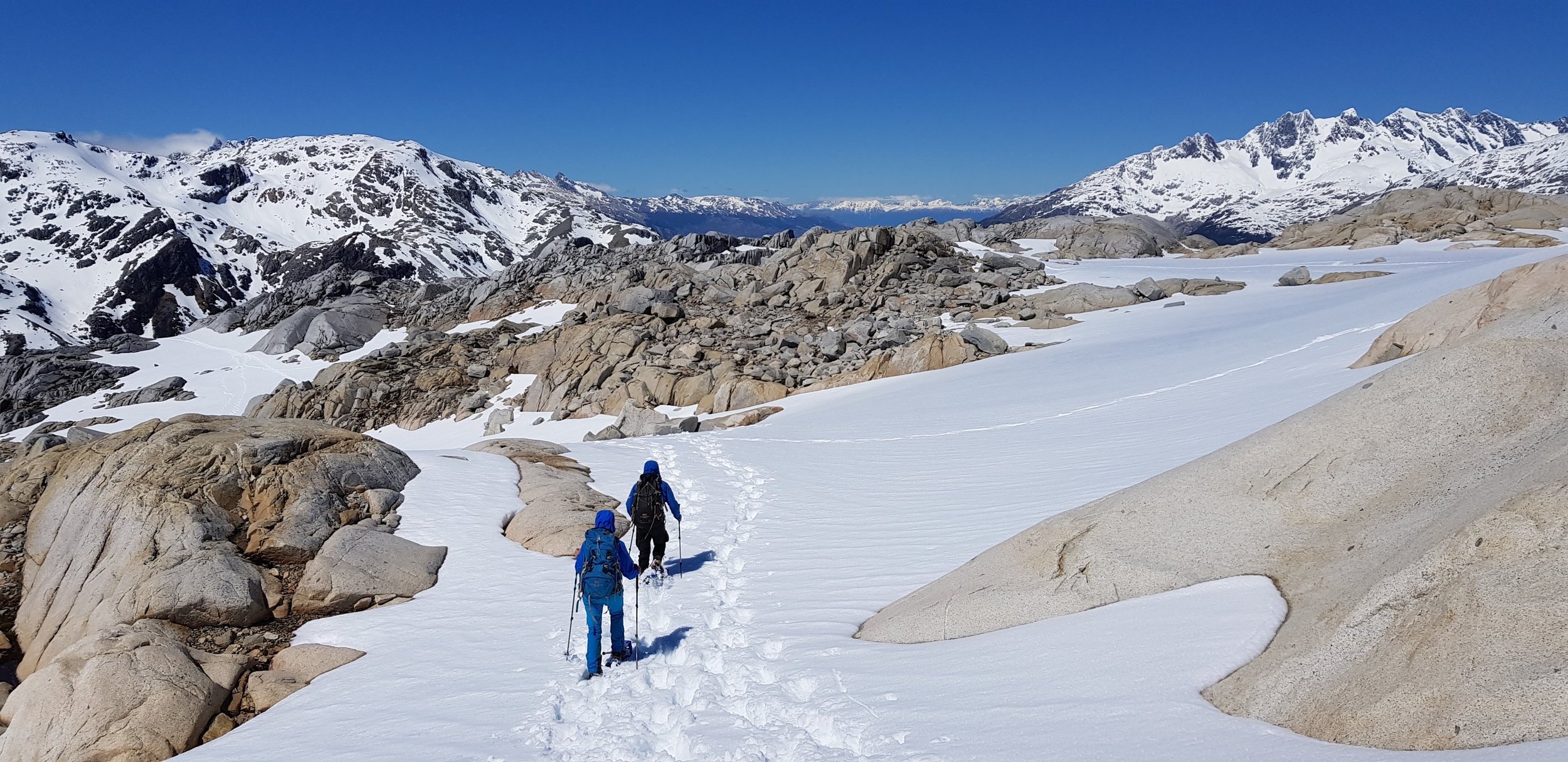
Your North Patagonian Icefield Crossing Itinerary
Day 1: Arrival in Chilean Patagonia and Preparations at Lago General Carrera
Your journey begins in Chilean Patagonia as you arrive in the town of Coyhaique. From here, we travel off-road, covering 6–8 hours of rugged terrain to reach a remote outpost on the shores of Lago General Carrera. The journey offers stunning views of steep, snowy mountains and turquoise lakes—an incredible introduction to the landscapes we’ll be venturing into.
At the outpost, we’ll conduct a final briefing for the expedition. This is the time to check essential equipment, make final preparations, and organise our gear for the days ahead. Accommodation here offers both comfort and an opportunity to immerse yourself in the unique surroundings of Patagonia as we ready ourselves for the adventure.
Day 2: Transfer to the Far Edge of Lago Leones via Jet Boat
We begin the day navigating the Leones River system by jet boat. The river is powerful, and as we drive upriver, the boat bucks and jolts with the force of the water pushing against us. Rapids surge and spray, making each stretch a test of precision and control as we work our way upstream.
After reaching the far edge of Lago Leones, we unload our equipment and start our first shuttle toward the snowline. It’s a demanding ascent, with steep terrain and heavy loads, but by evening, the first carry is complete.
Day 3: Shuttling loads up to the glacier’s edge and setting up the first snow camp.
The day begins at the snowline, where we descend through lush rainforest back to the lakeside. With only light packs, it’s a refreshing start as we move downhill to retrieve our equipment stash left the day before.
Once there, we repack with heavy loads and begin the 1,000m ascent back to our base camp at the glacier’s edge. Our goal is to complete two carries today, including the final push. It’s a demanding effort, but with each step, we’re consolidating our position and preparing to fully transition onto the glacier.
Day 4-7: Ascend the Leones Glacier, navigating crevasse fields and hauling gear to the icefield’s edge.
Over these days, we journey across the vast ice cap plateau, a landscape reminiscent of the high plateaus of Spitsbergen. The terrain is expansive, with long, steady progress broken only by crevasse zones and changes in weather. One striking difference here is the intense sunlight—its strength is magnified by the reflective surface of the ice, demanding constant attention to sun protection and hydration.
Day 4-7:
These days are focused on steadily ascending the Leones Glacier, a challenging route that includes navigating crevasse fields and hauling gear toward the edge of the icefield. The terrain is demanding, with sections of steep climbs, Scottish Grade 1 gully climbing, traversing steep snowfields, and scrambling on exposed ground
Day 8-14: Traverse the ice cap plateau.
These days are spent steadily making our way across the ice cap plateau, navigating open expanses broken by occasional crevasse fields. .
Day 8-14: Experience both harsh weather and serene, sunny days.
The journey demands consistent focus and effort, with the intense sunlight reflecting off the ice adding another layer of challenge. Protecting against the harsh conditions, especially the sun’s strength, is a priority as we move
Day 8-14: Opportunity to summit nearby peaks and enjoy breathtaking views.
Progress is made step by step, with each day involving careful navigation and teamwork to manage the terrain and conditions. By the end of this phase, we’ll have crossed one of the most remote and exposed sections of the expedition.
Day 15-18: Descent through the San Rafael Glacier.
The descent through the San Rafael Glacier marks the crux of the expedition. This section is a mix of open crevasse fields, dry glacier terrain, and rapidly changing conditions as we move into warmer temperatures. Precipitation here often falls as wet snow, adding another layer of complexity to the journey.
Day 15-18: An exercise in navigating in descent through complex crevasse systems
We’ll remain roped up throughout, navigating snow bridges, rocky lowers, and abseils. The terrain demands focus, with challenging sections requiring precision and teamwork. Expect long days in crampons, with plenty of physical effort as we work through steep and technical areas. This stretch pushes both physical and mental endurance, offering a true test of glacier travel skills.
Day 15-18: An exercise in navigating in descent through complex crevasse systems
Day 19-21: Retrieve gear caches and transfer to your pickup point.
Day 19-21: Reflect on the journey and celebrate your achievement with the team. Flights back home!
Maps for the North Patagonian Icefield Crossing
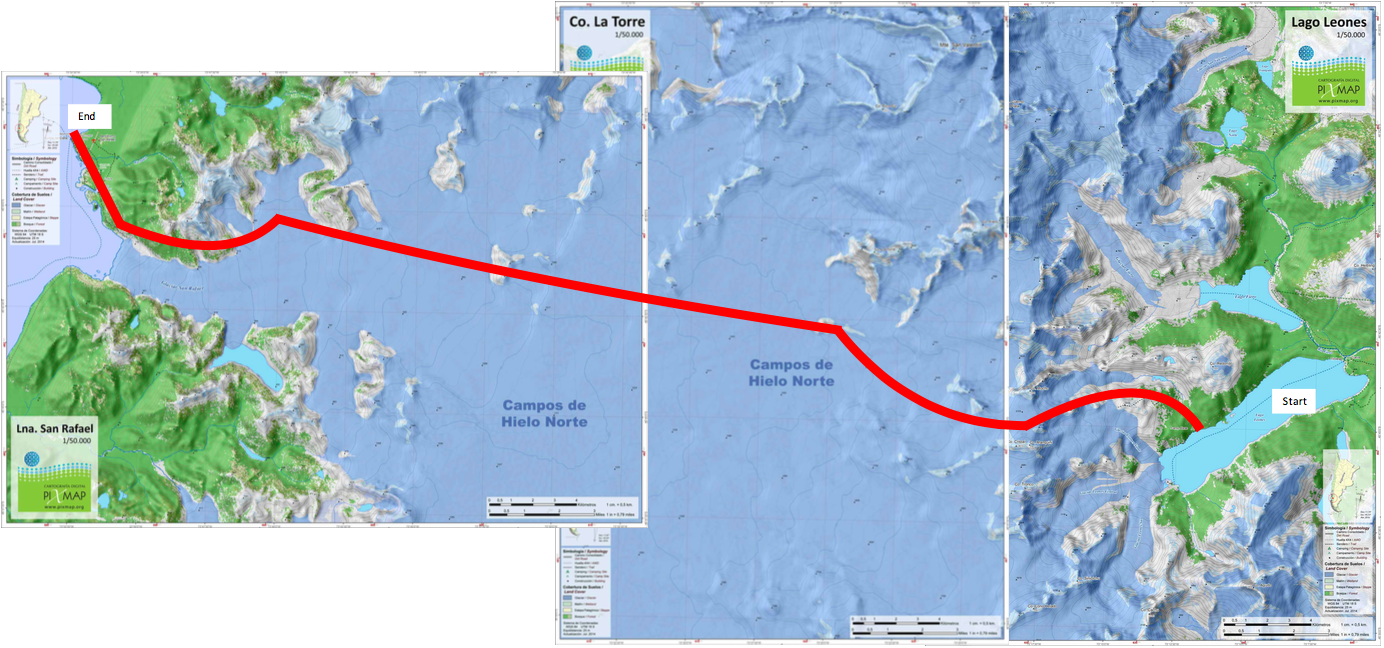


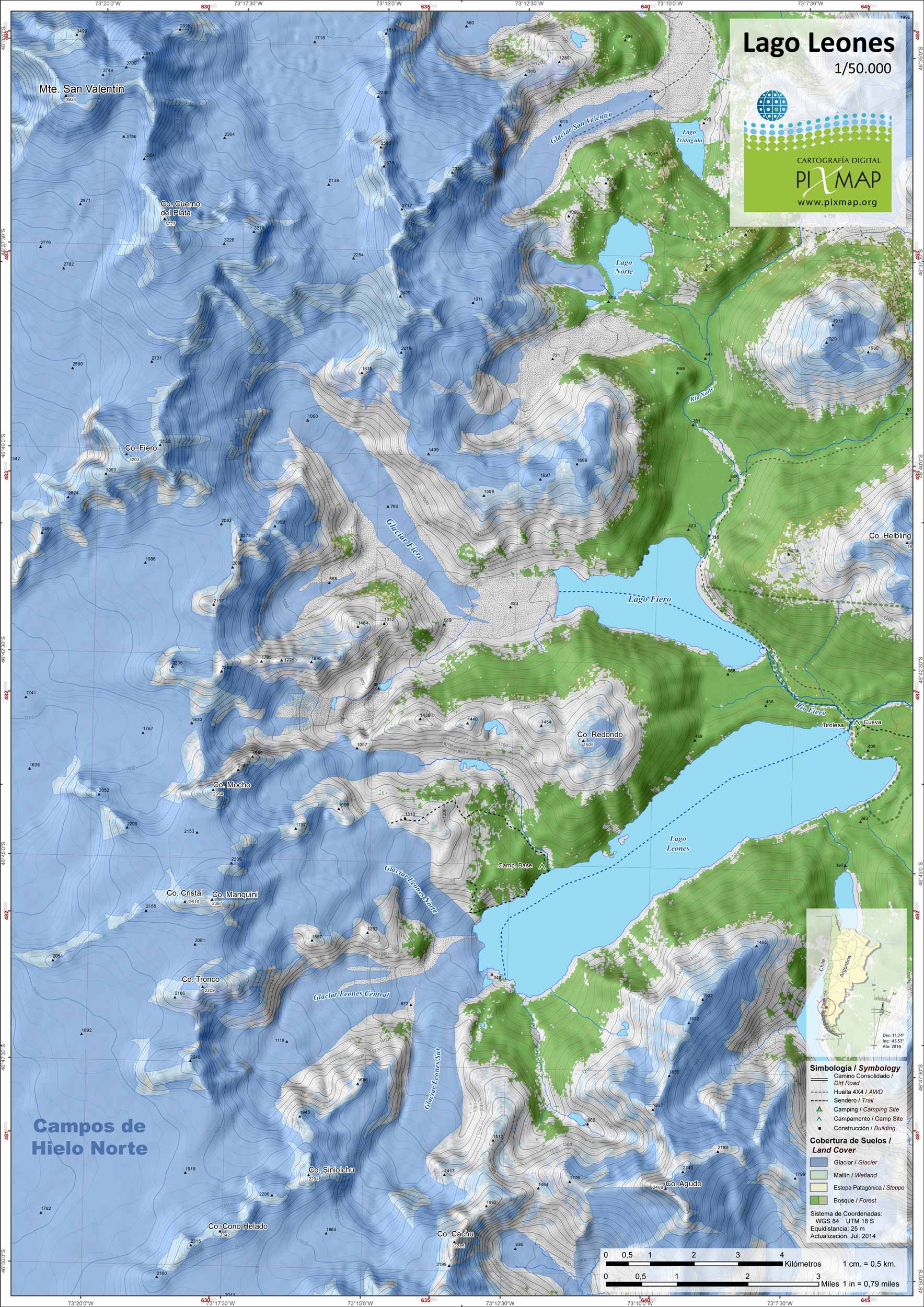
Reserve your space on our next expedition below.
But don’t take our word for it have a look below at the media reel that shows you some of the highlights on offer during the week.
North Patagonian Icefield Crossing Photo Gallery
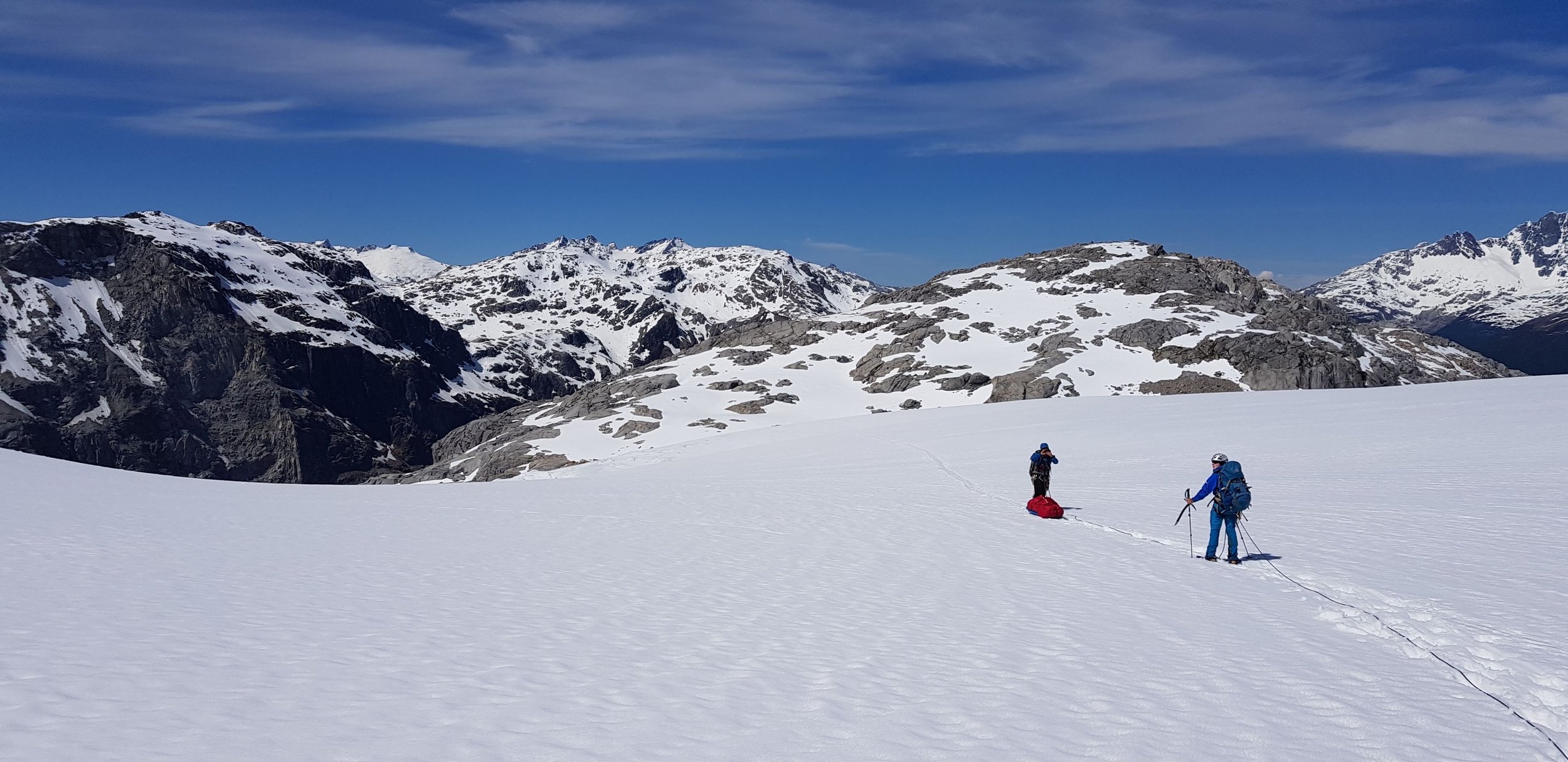
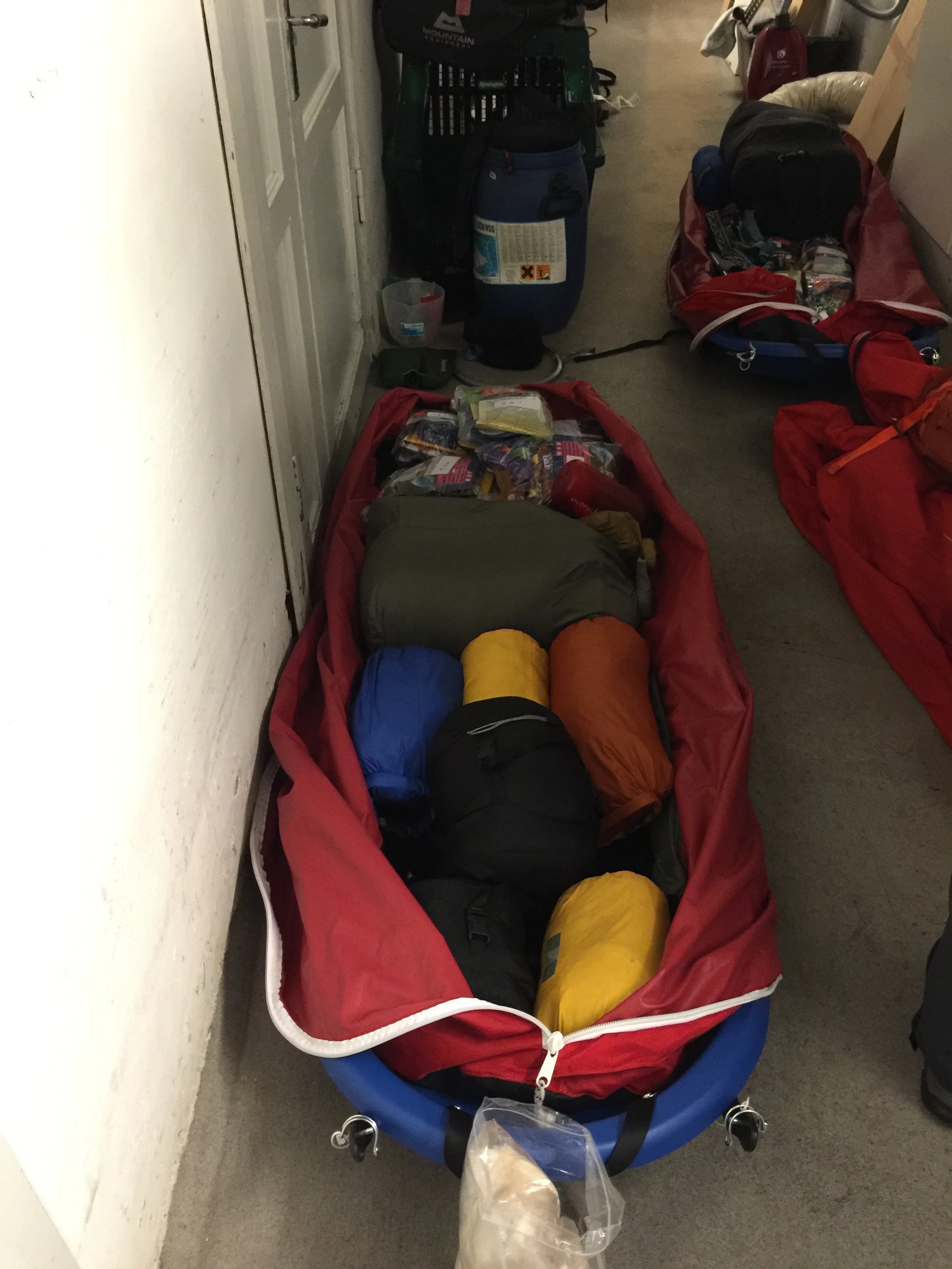


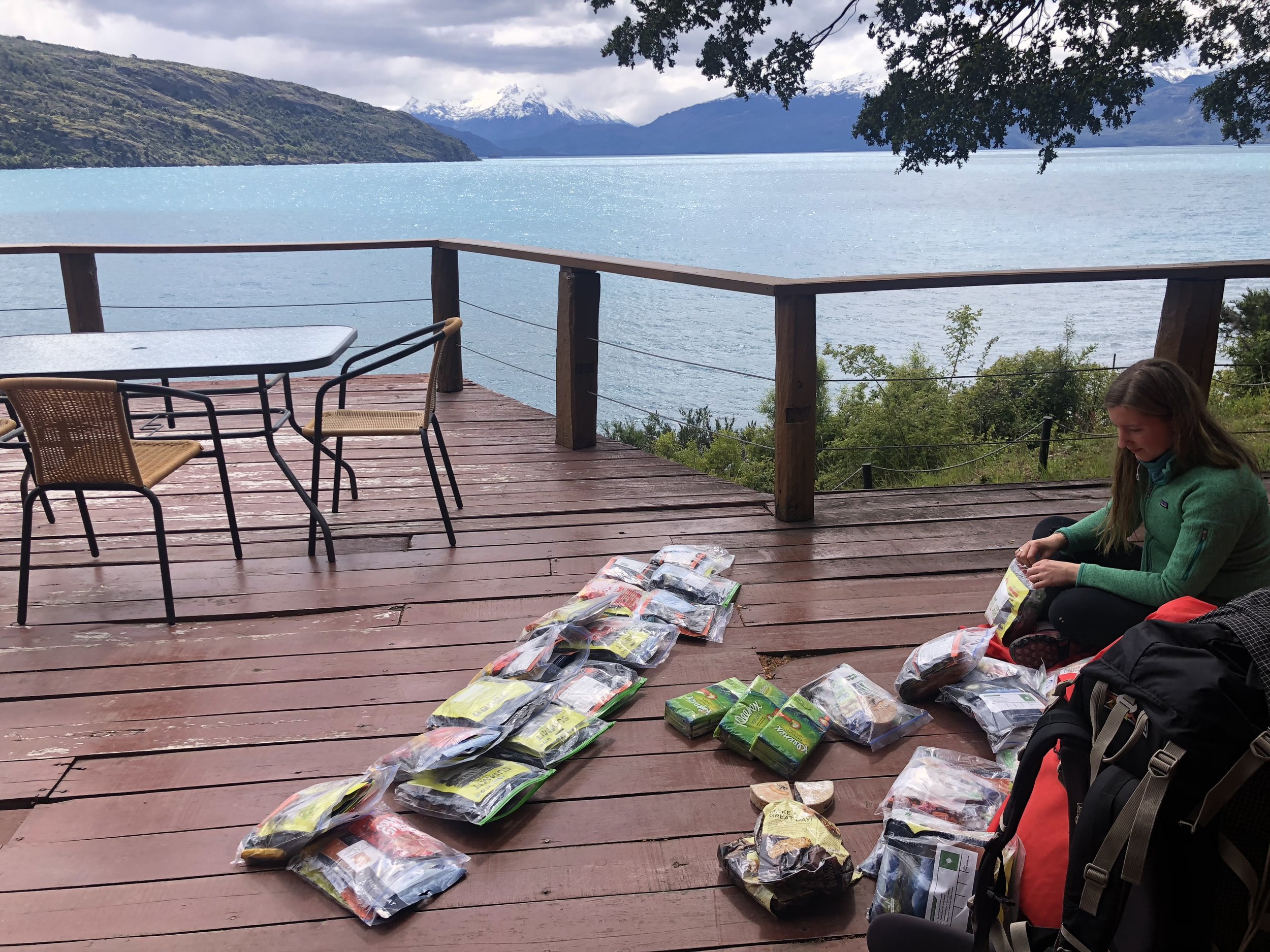
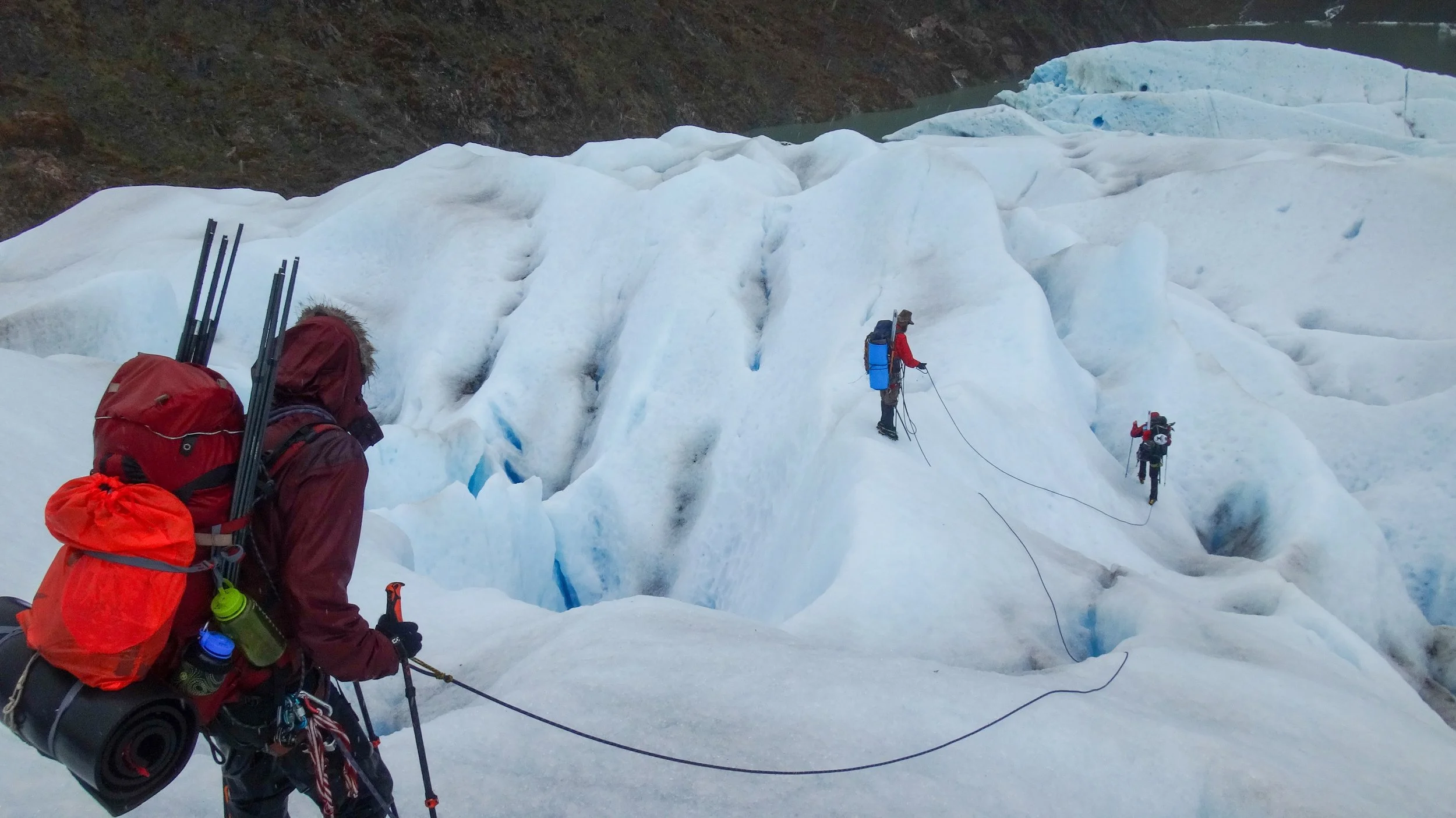
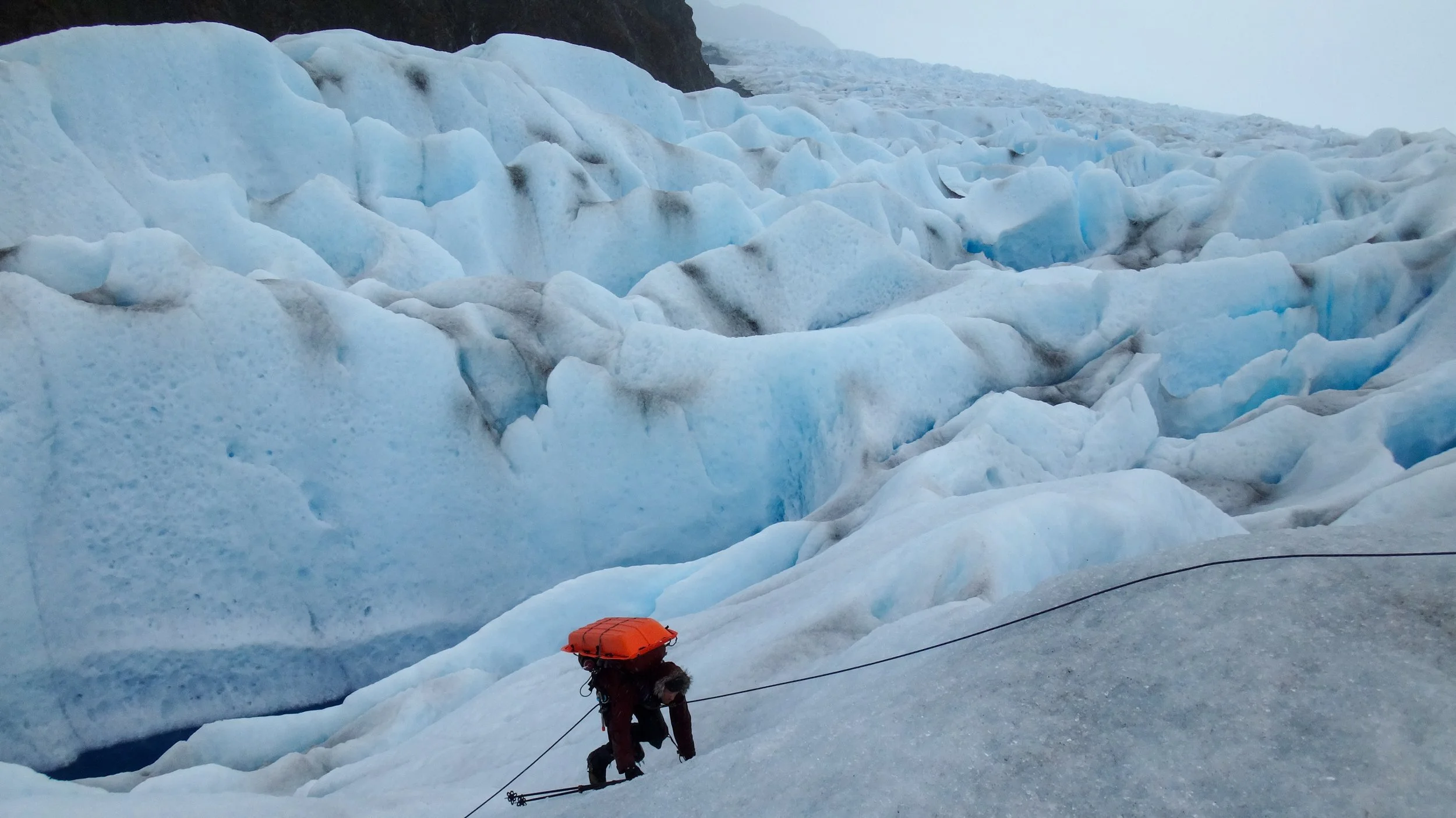
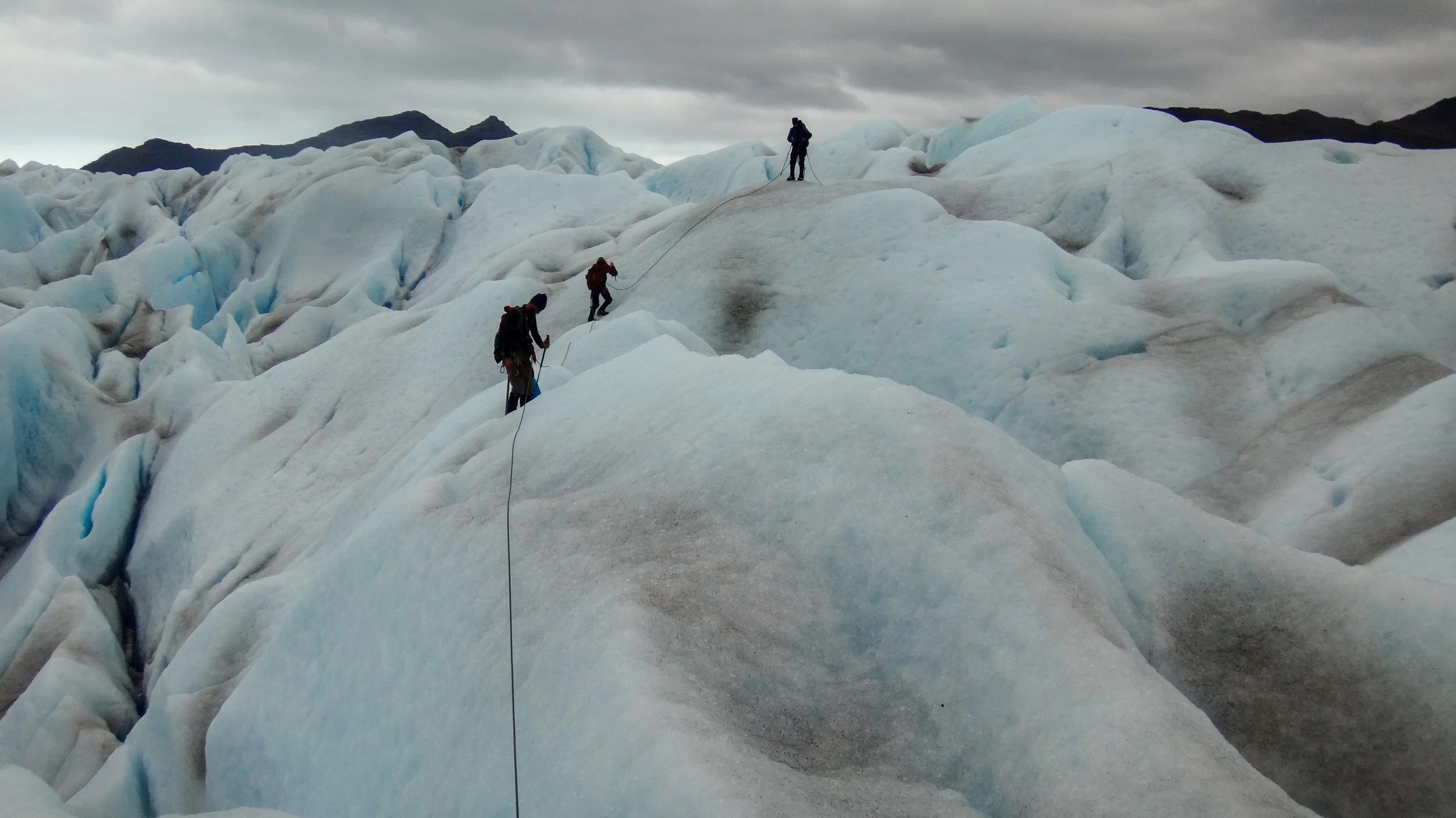
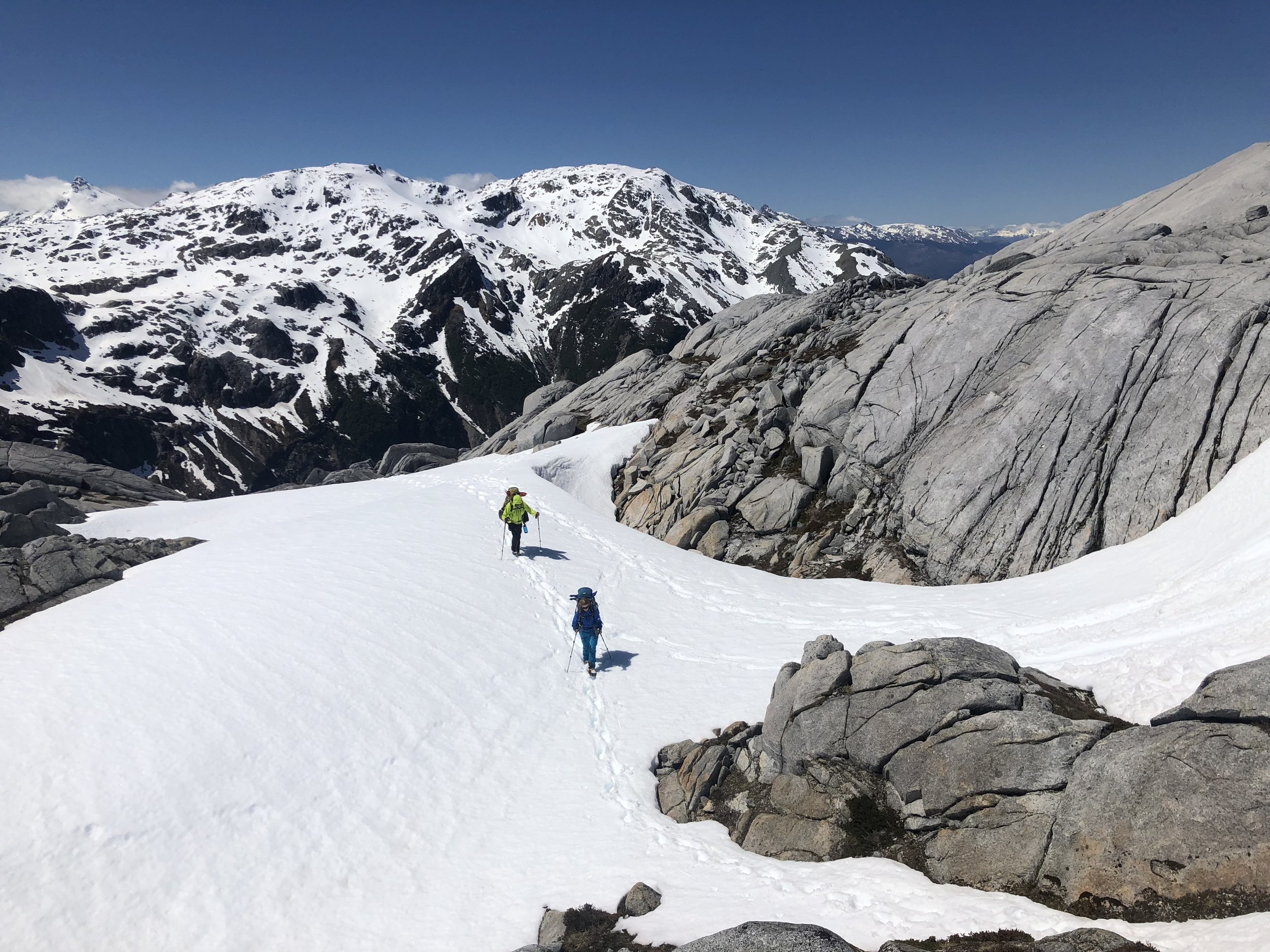
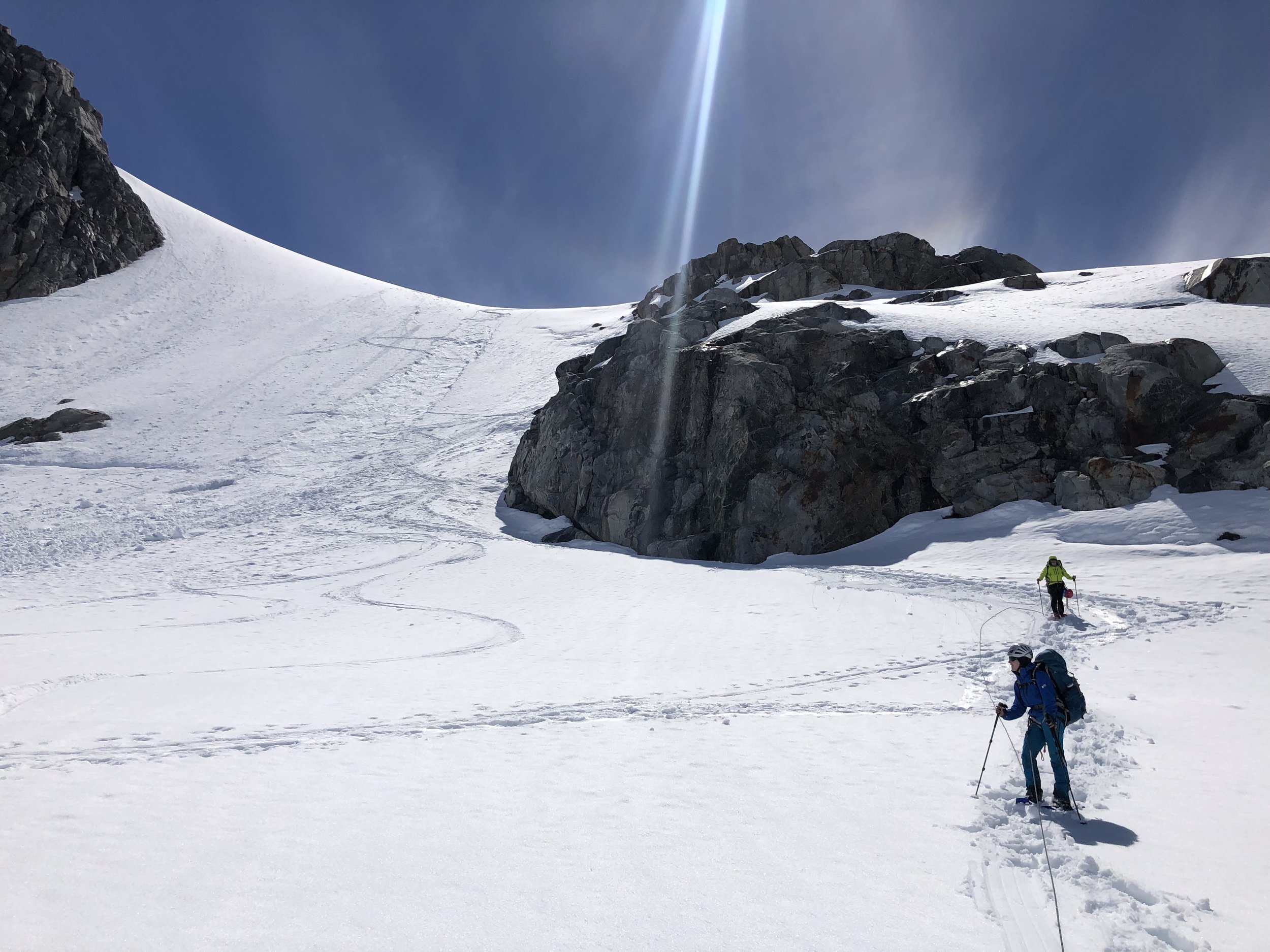
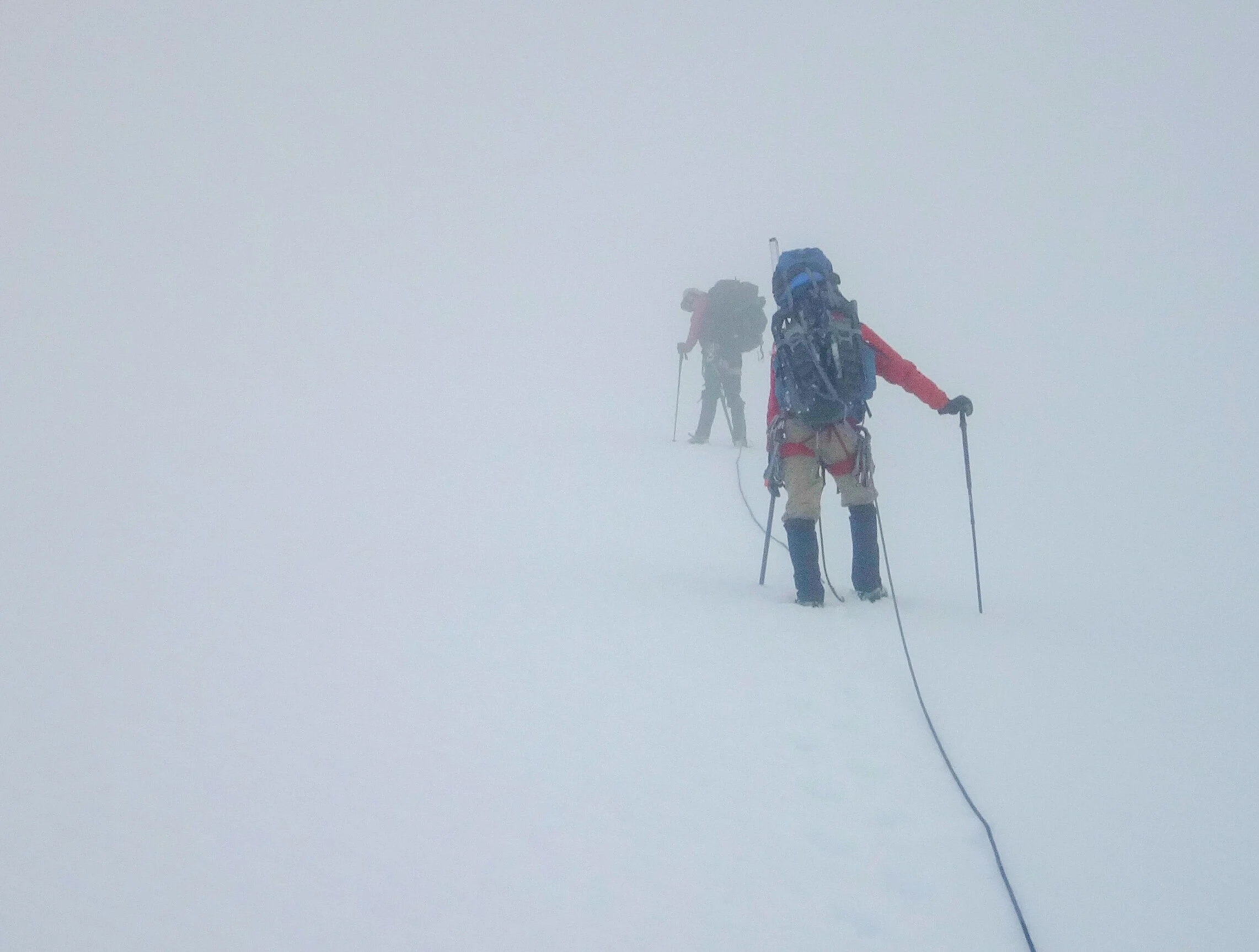
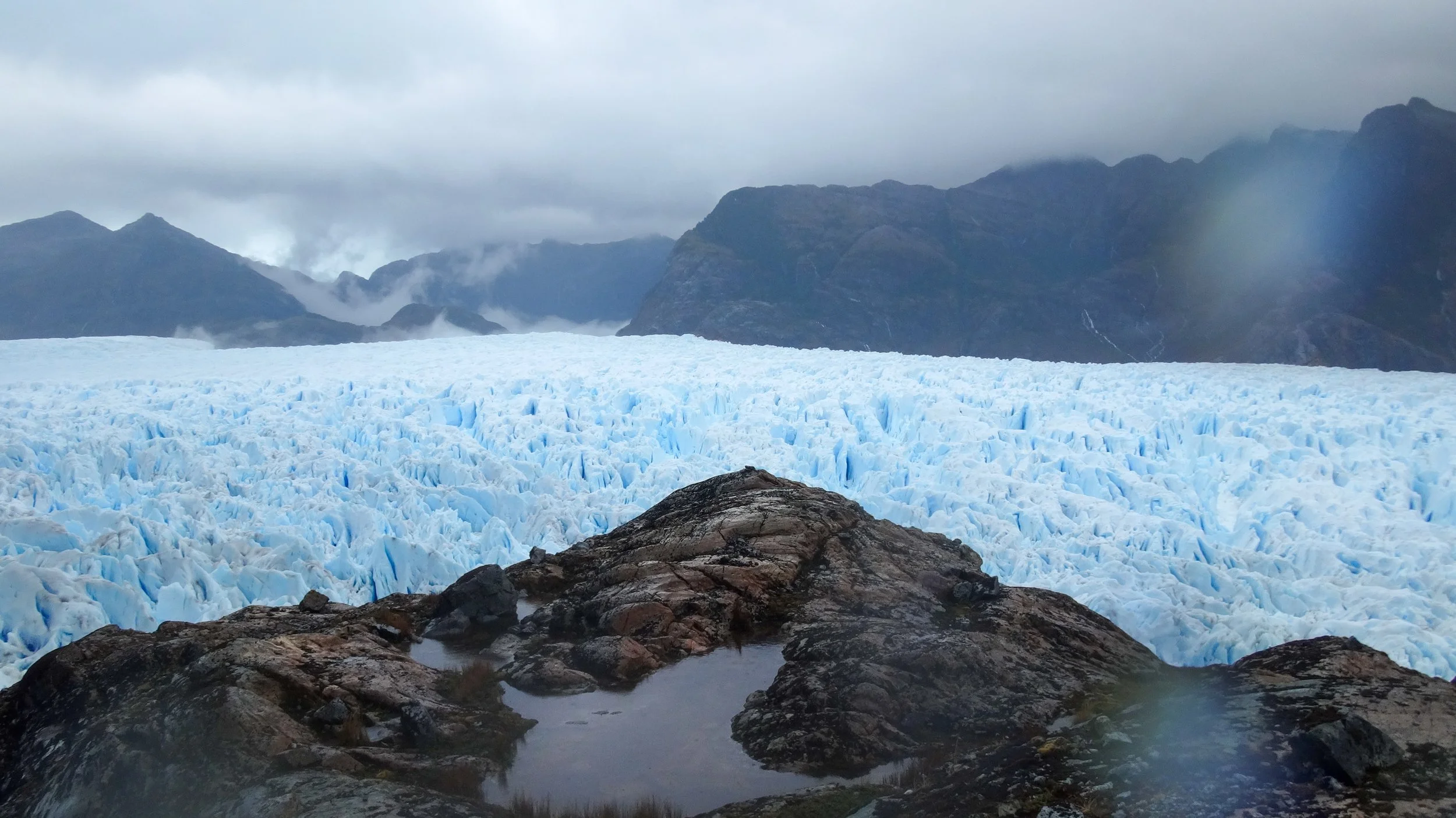
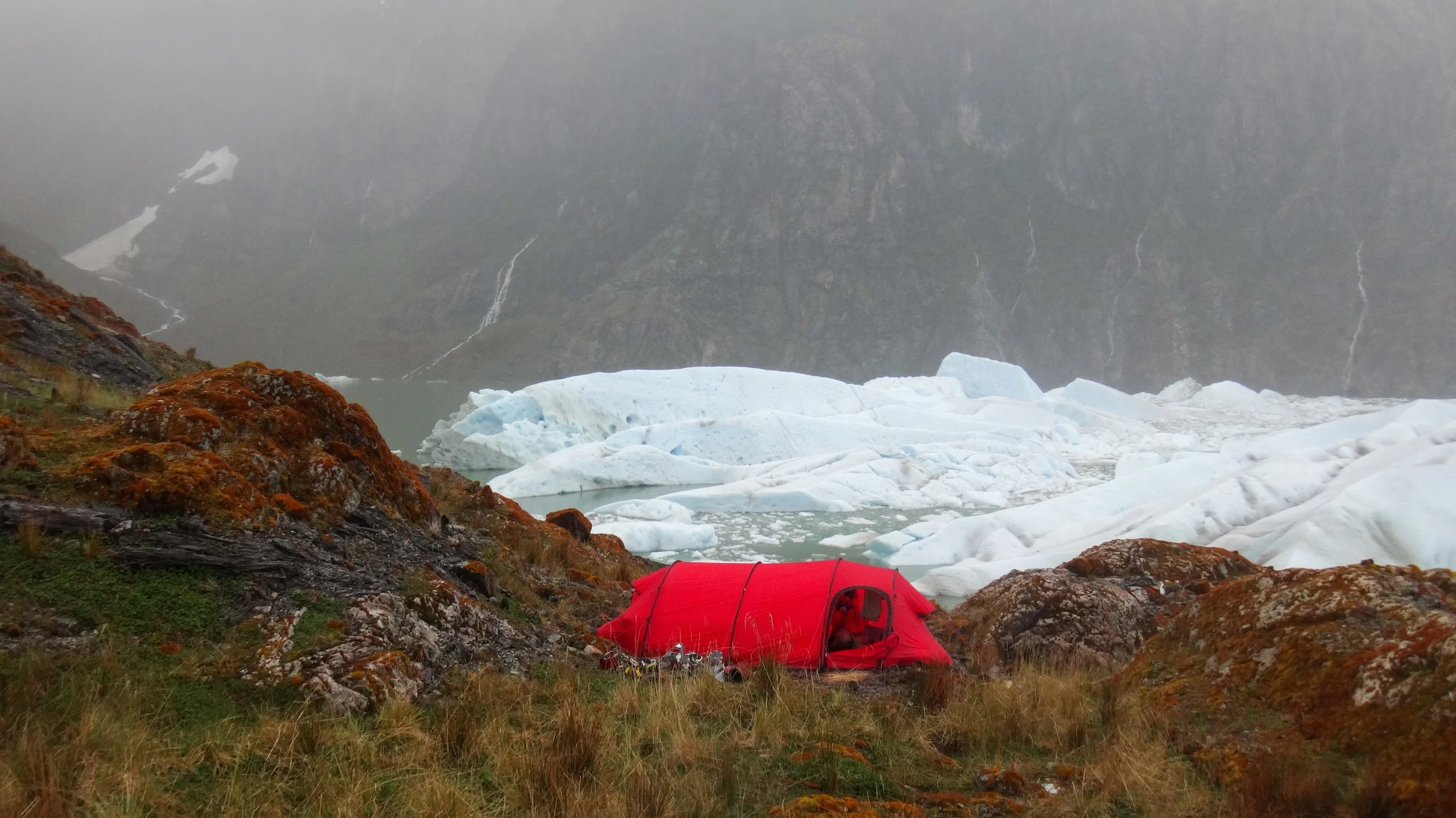
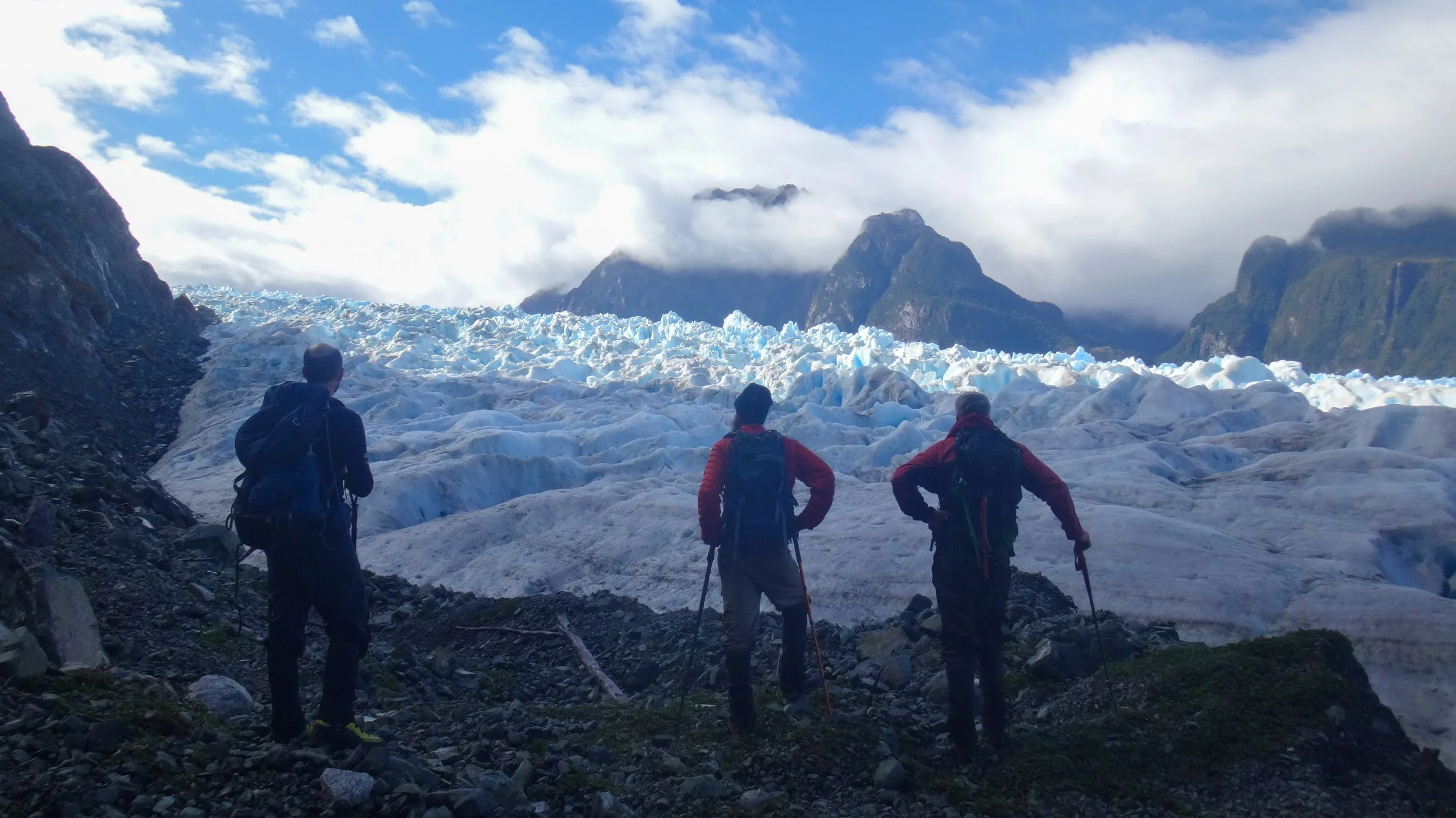
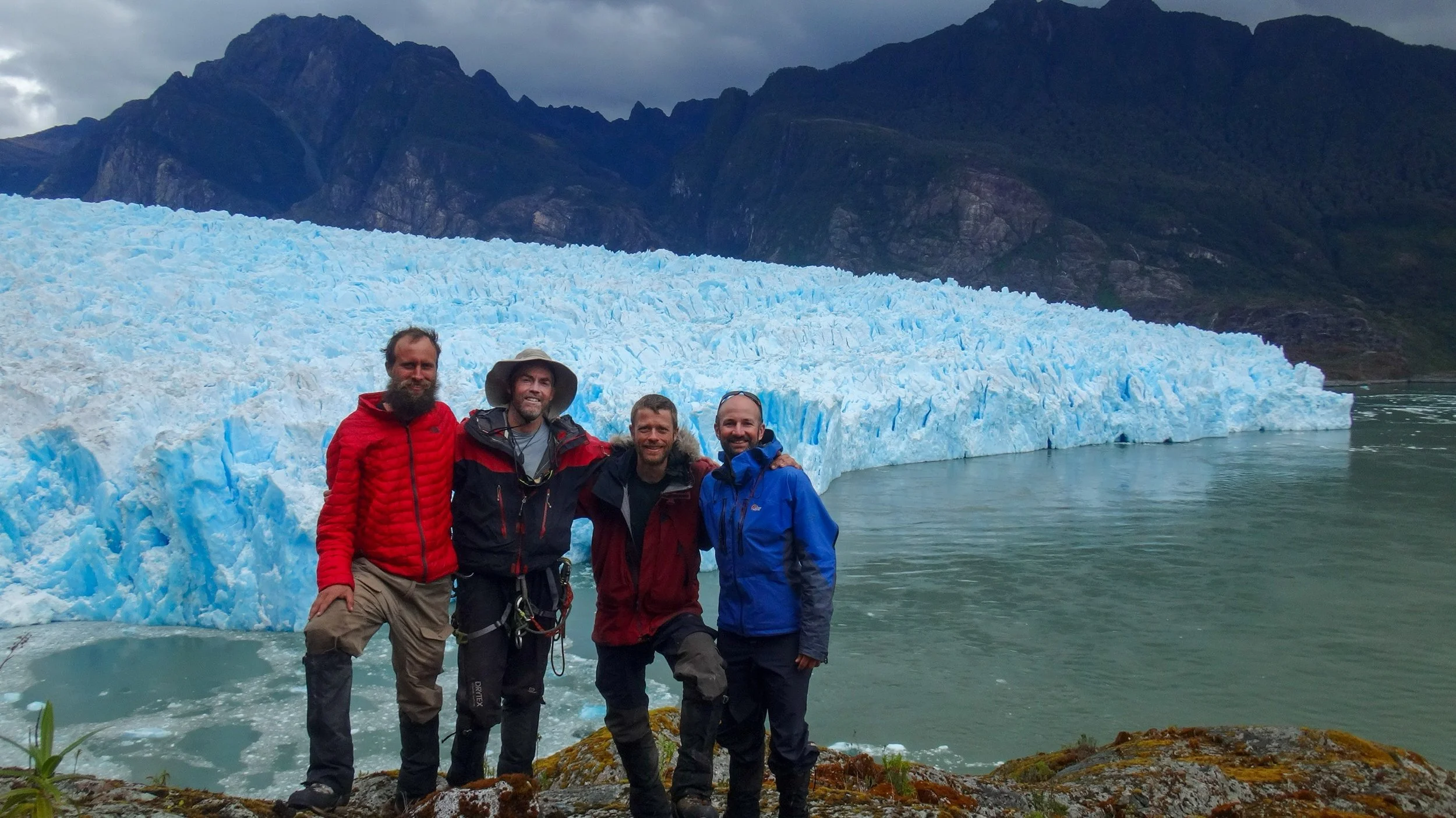
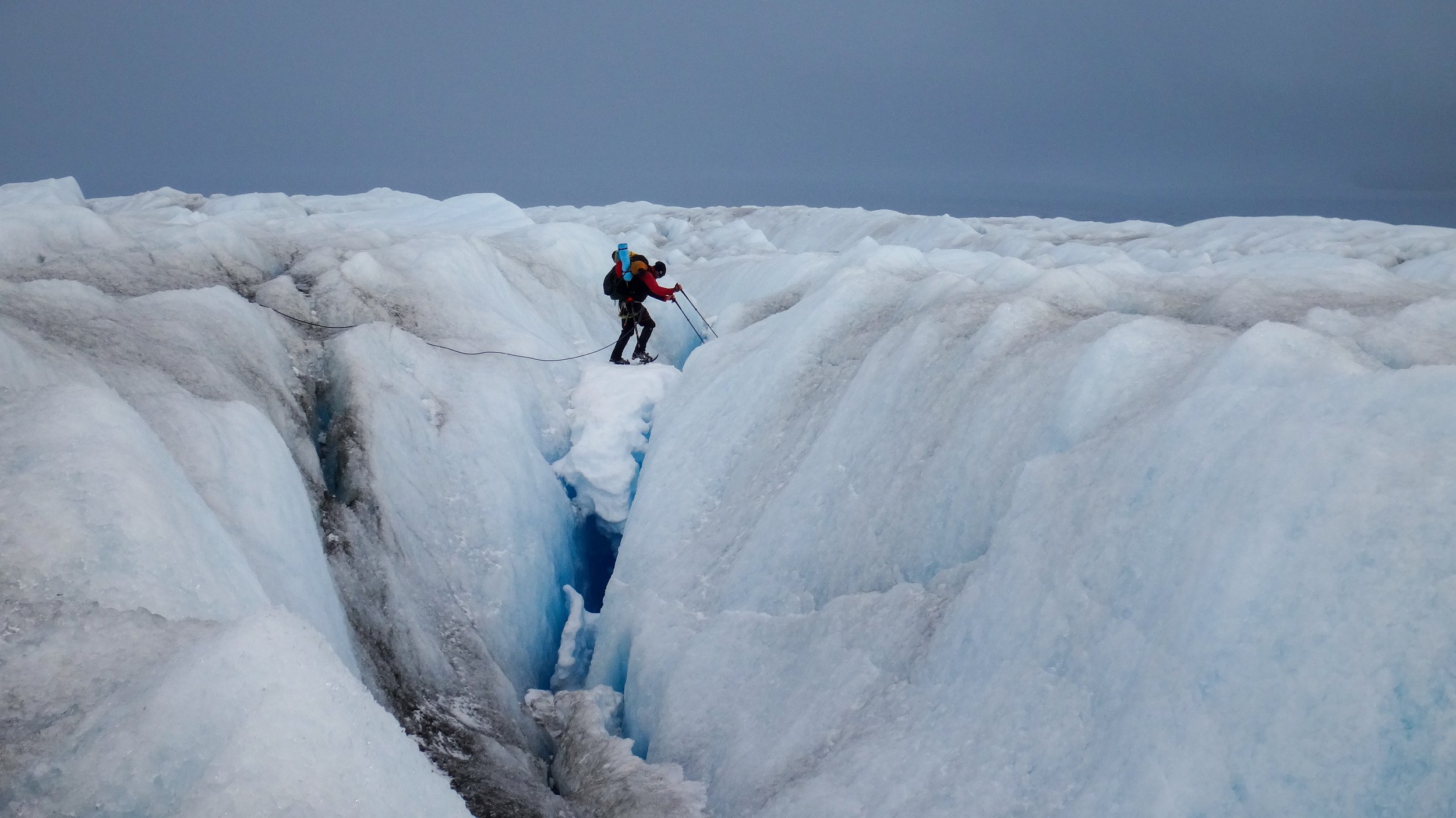
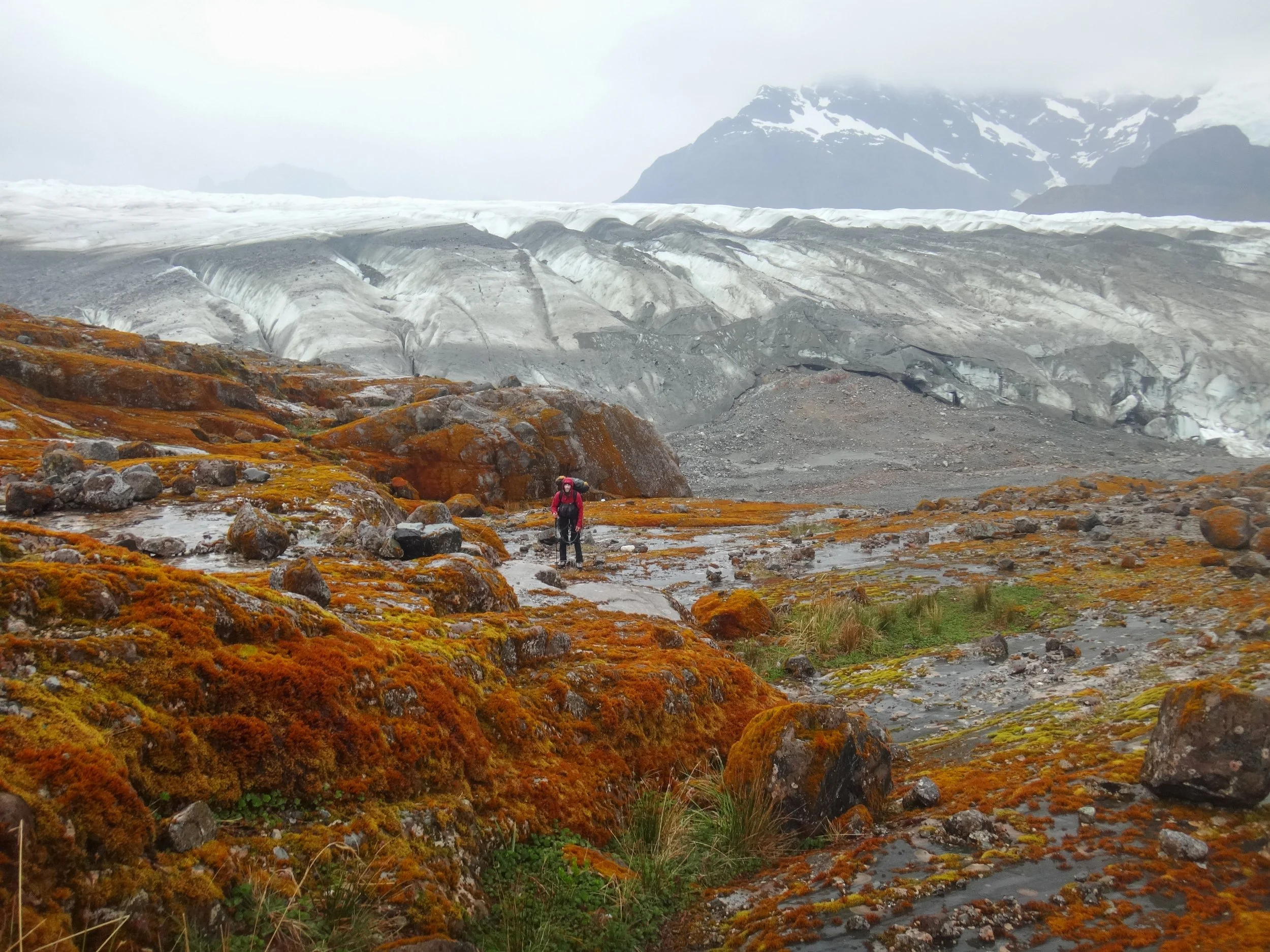

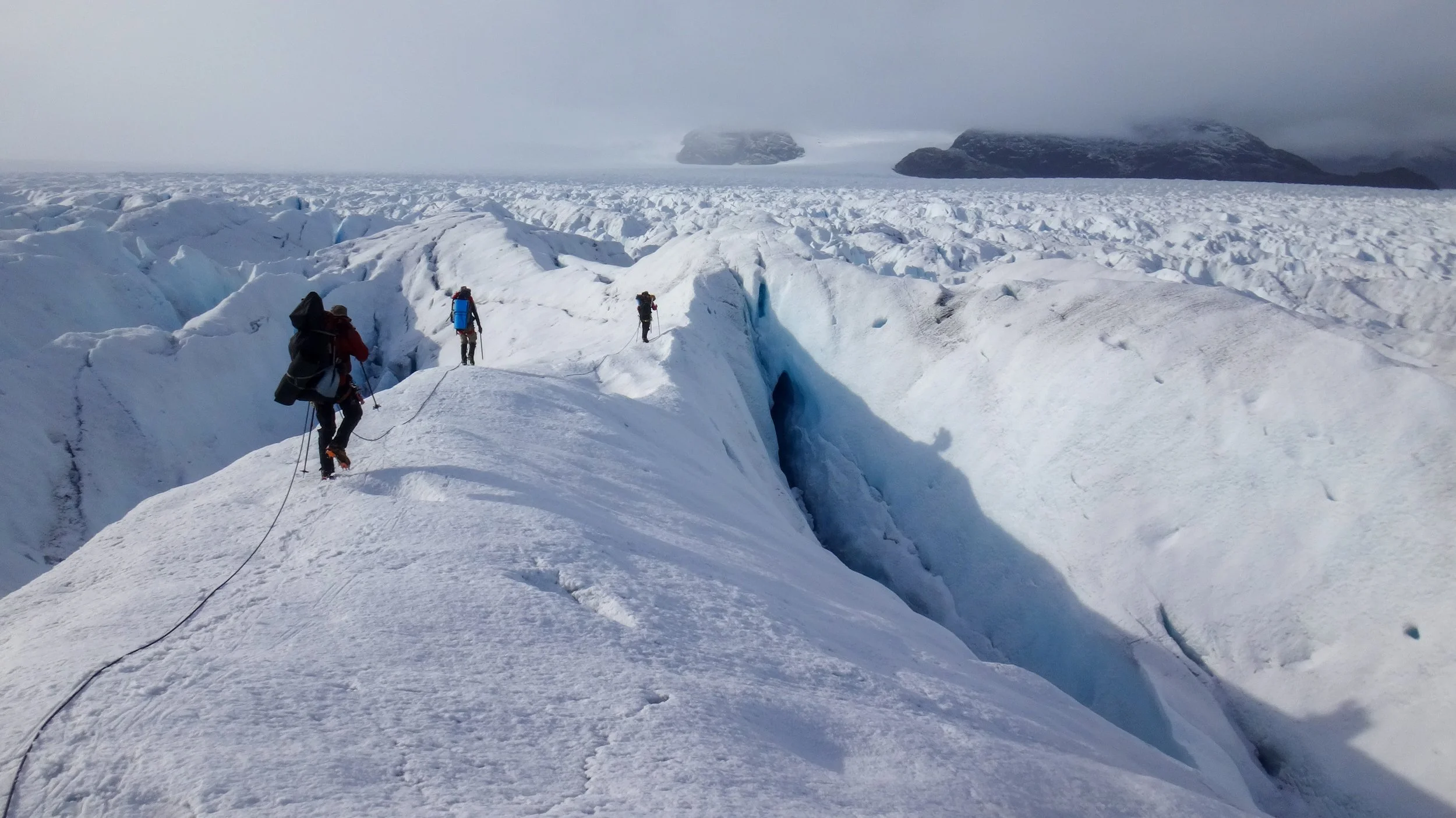
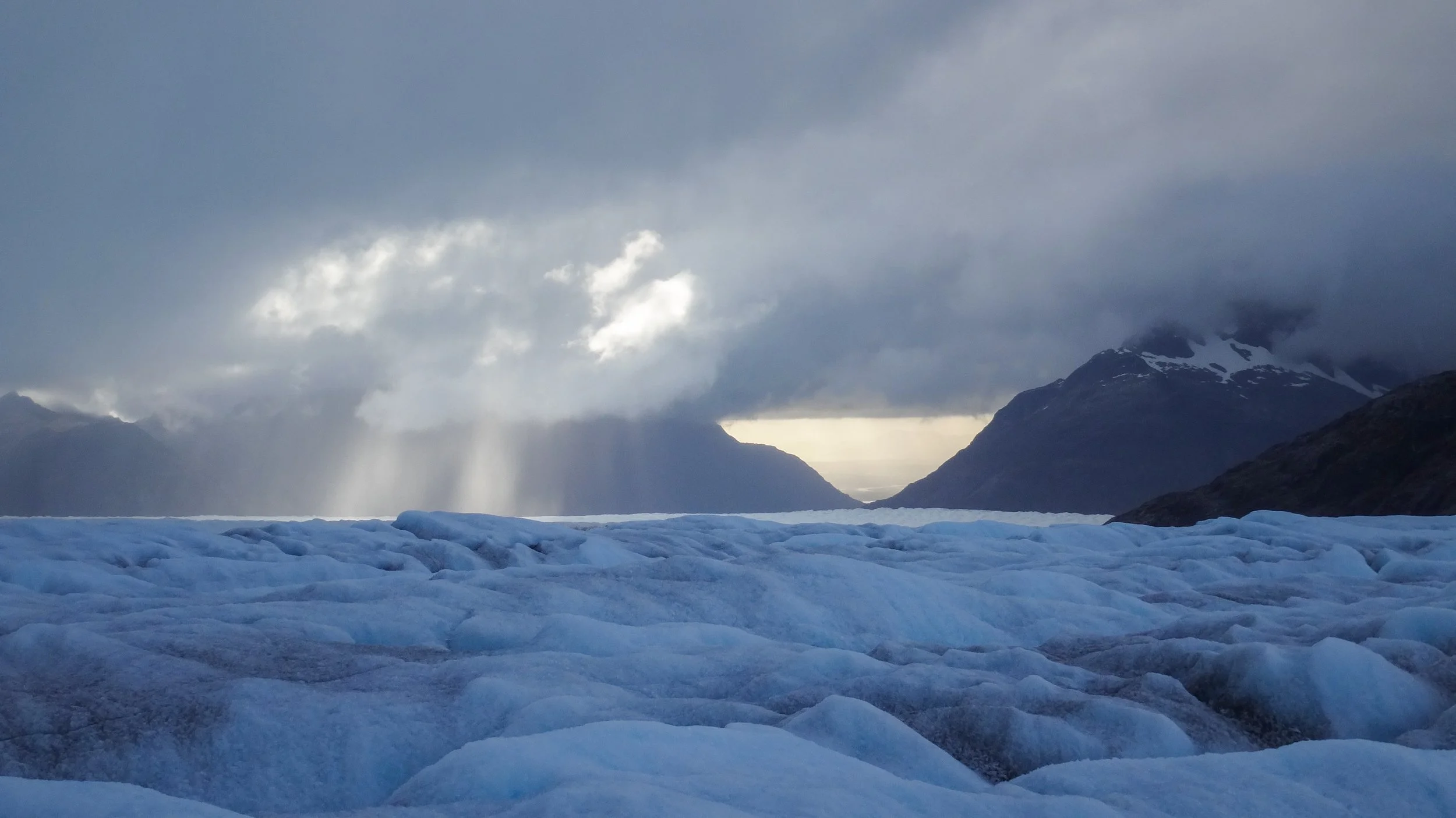
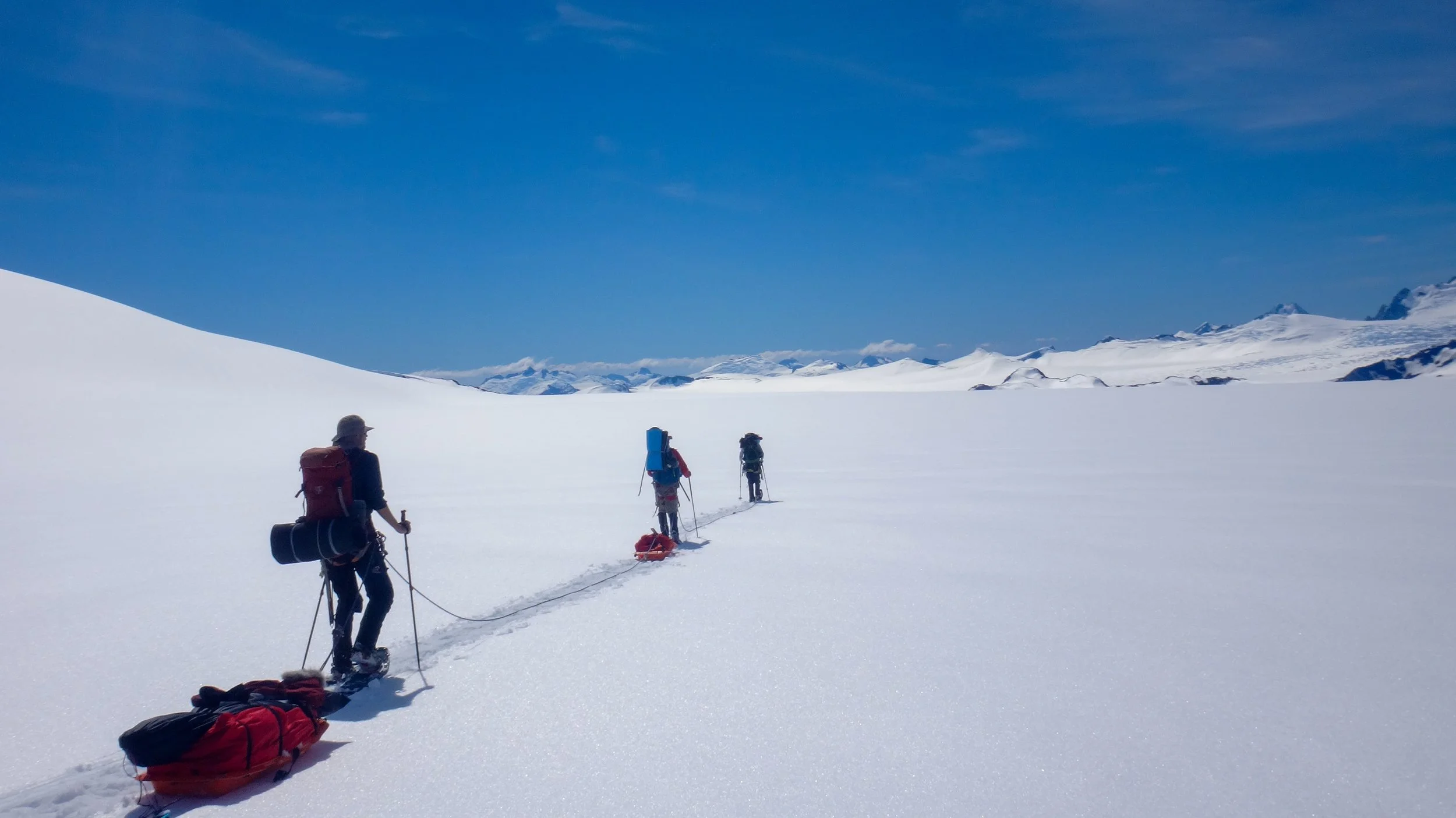
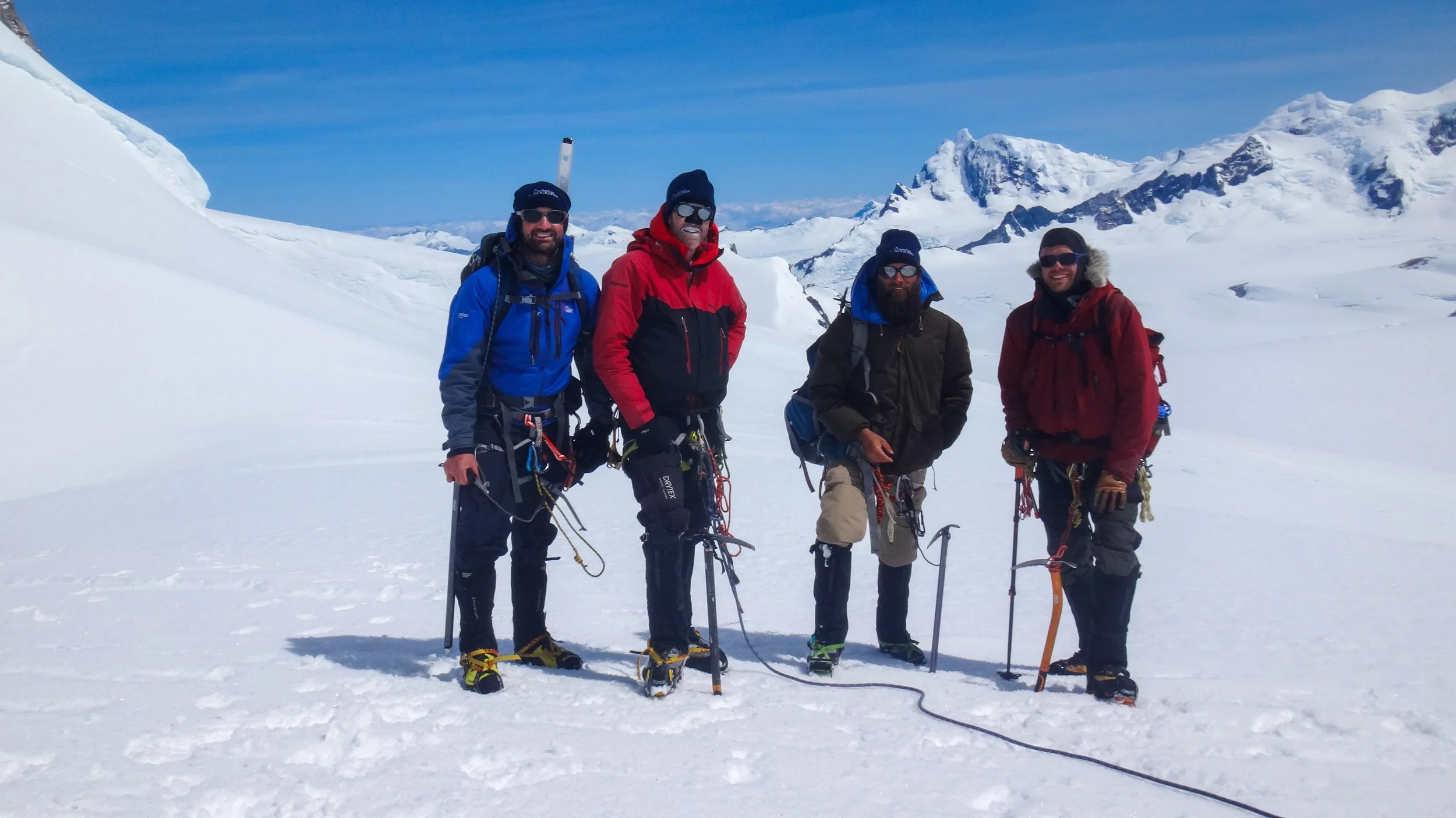
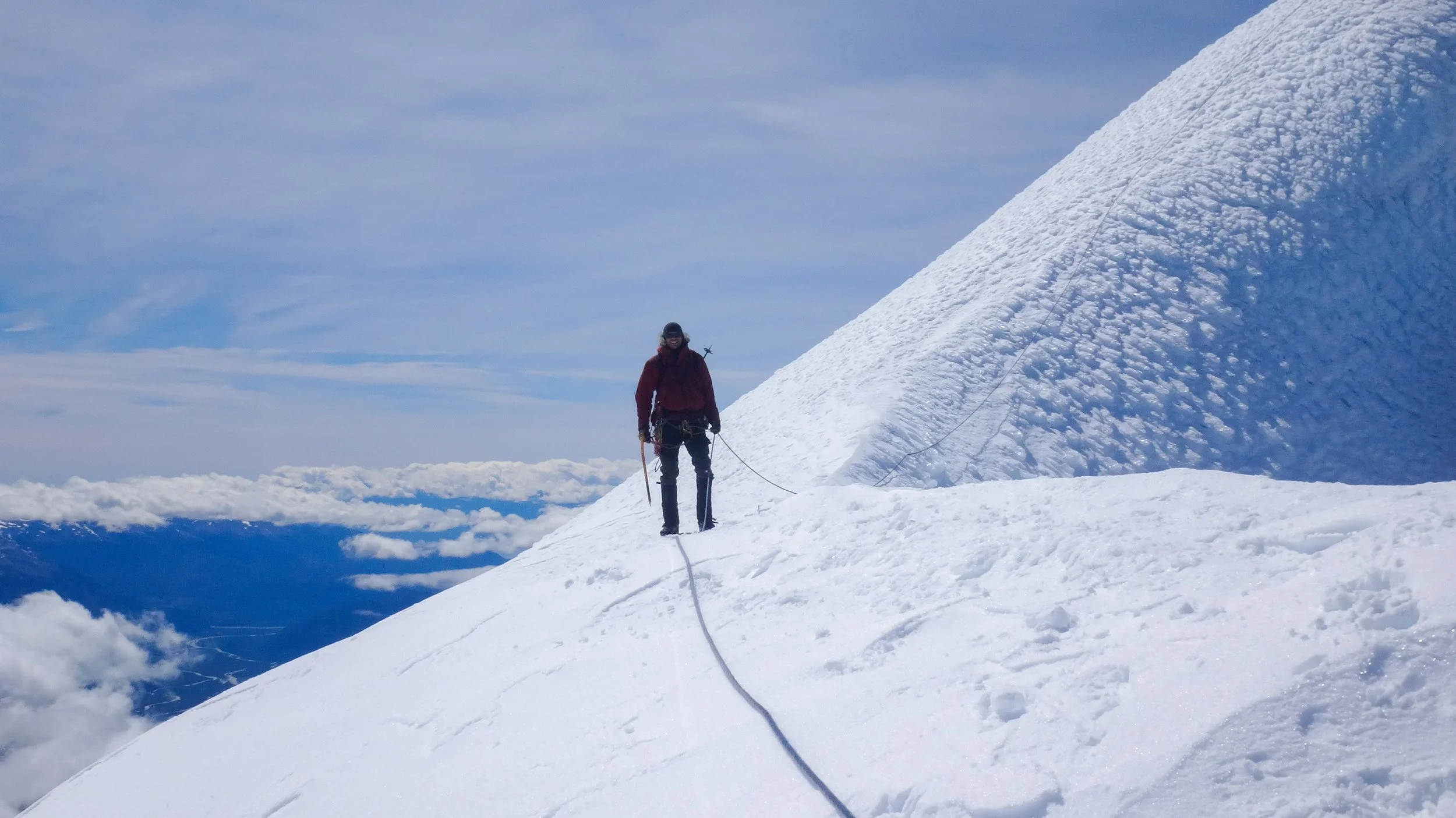


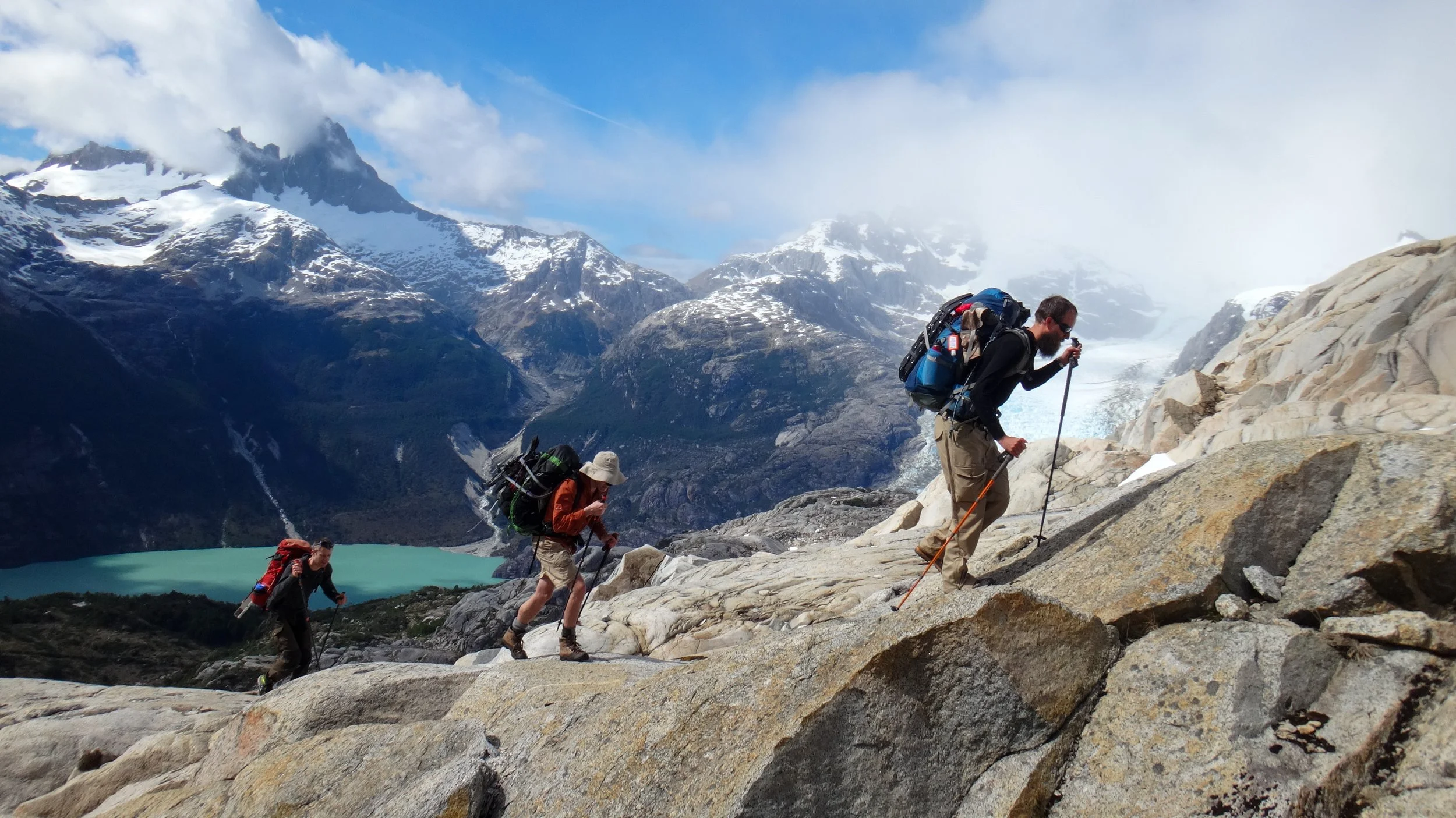
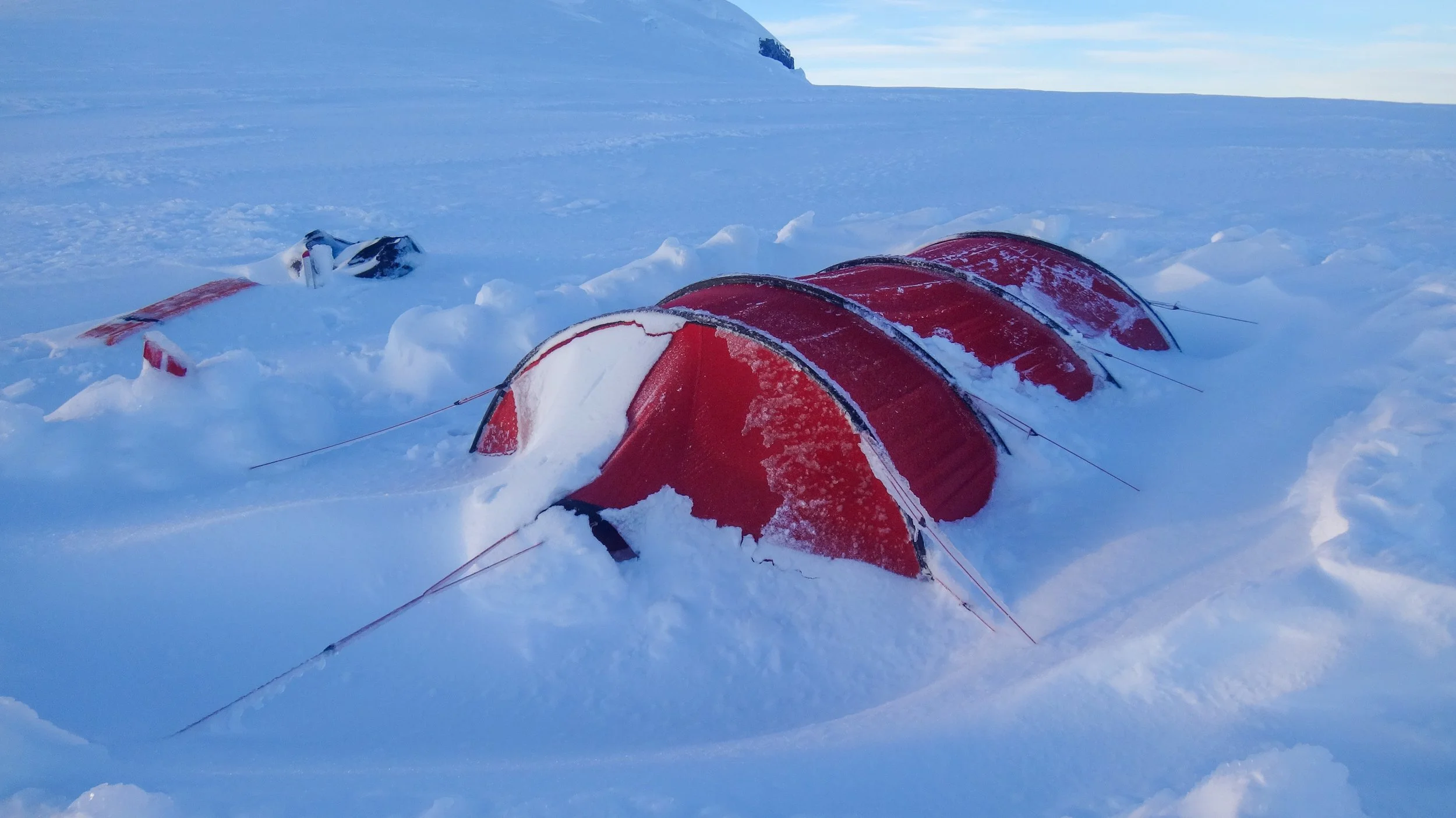

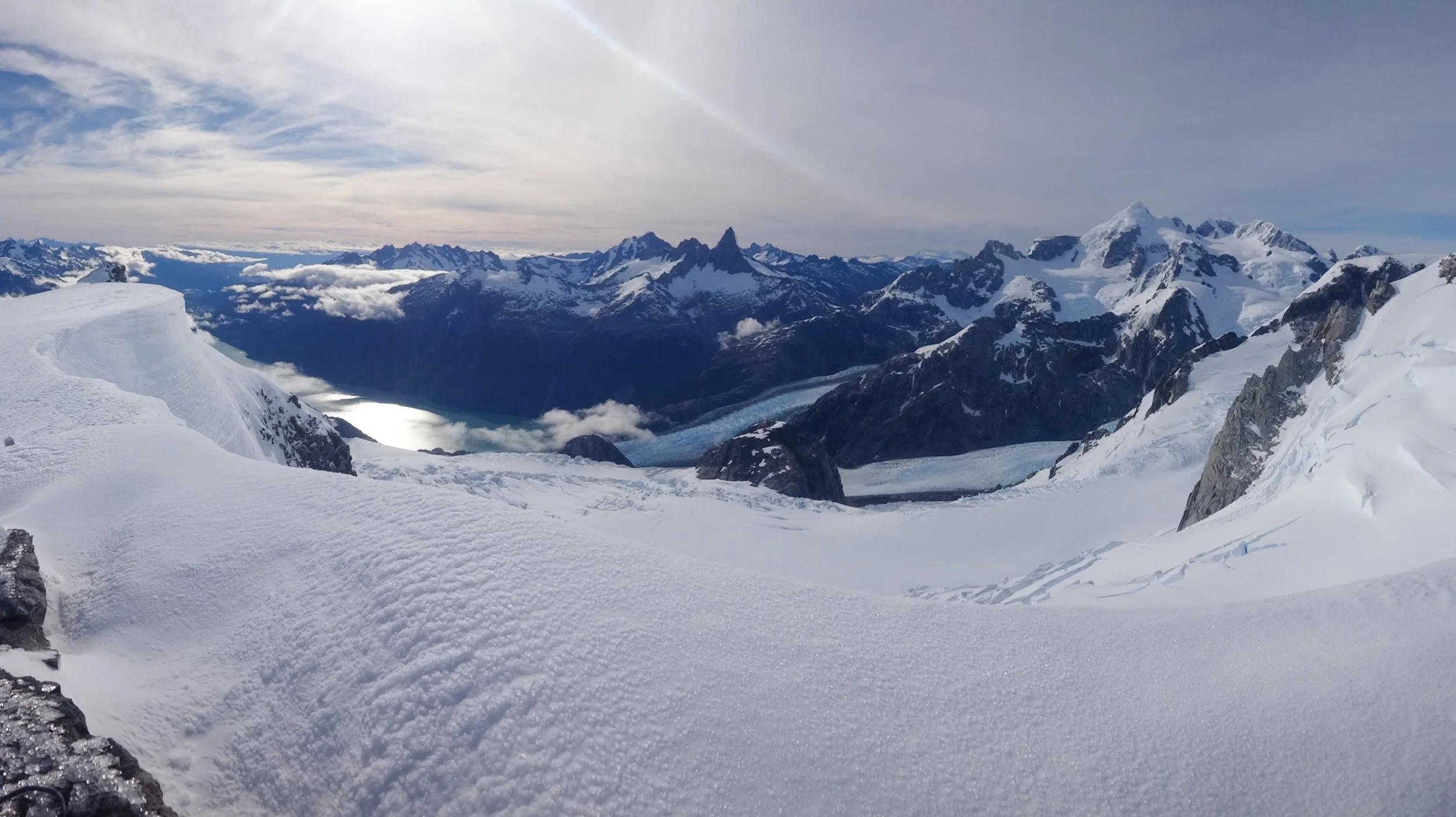
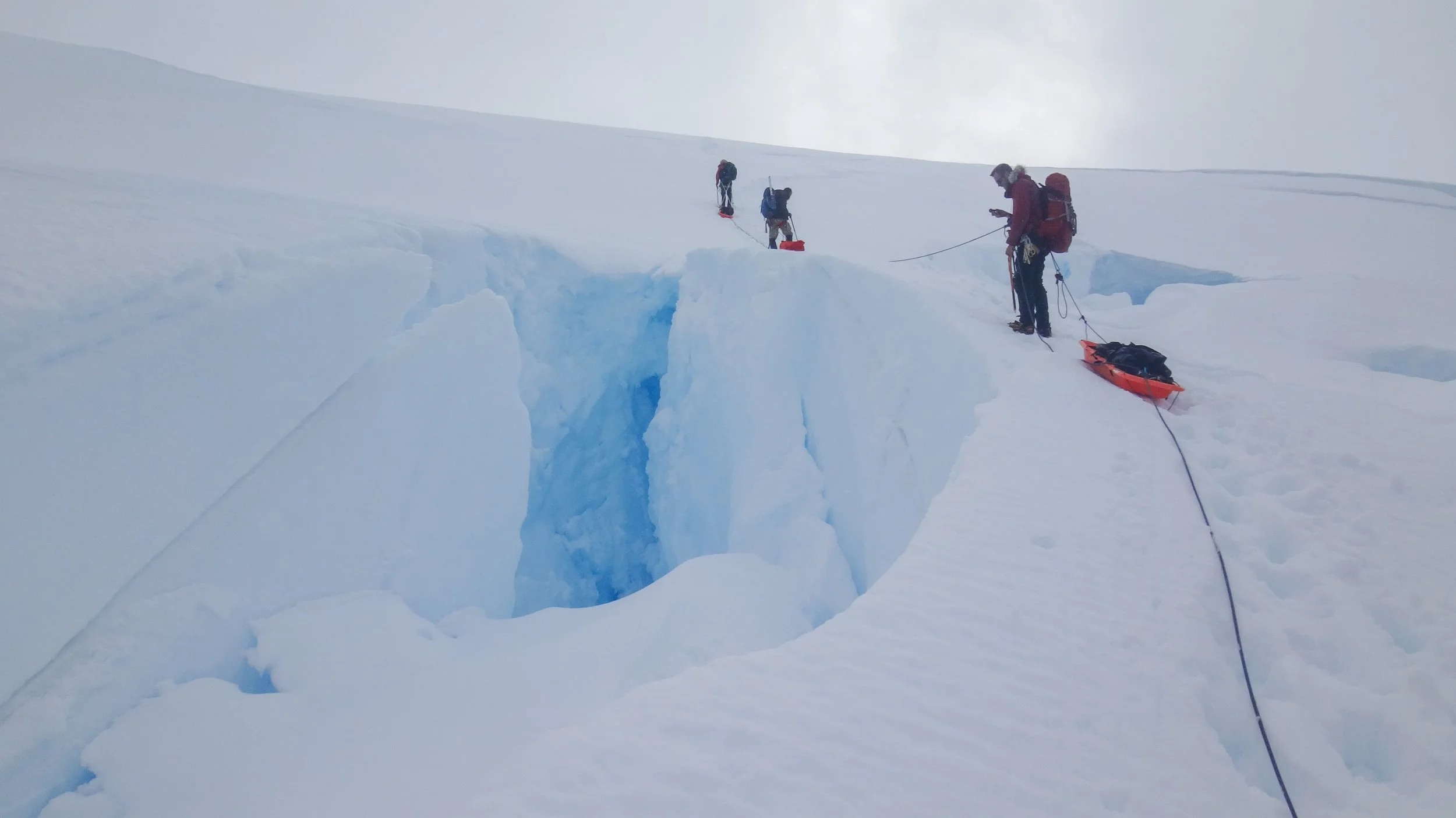


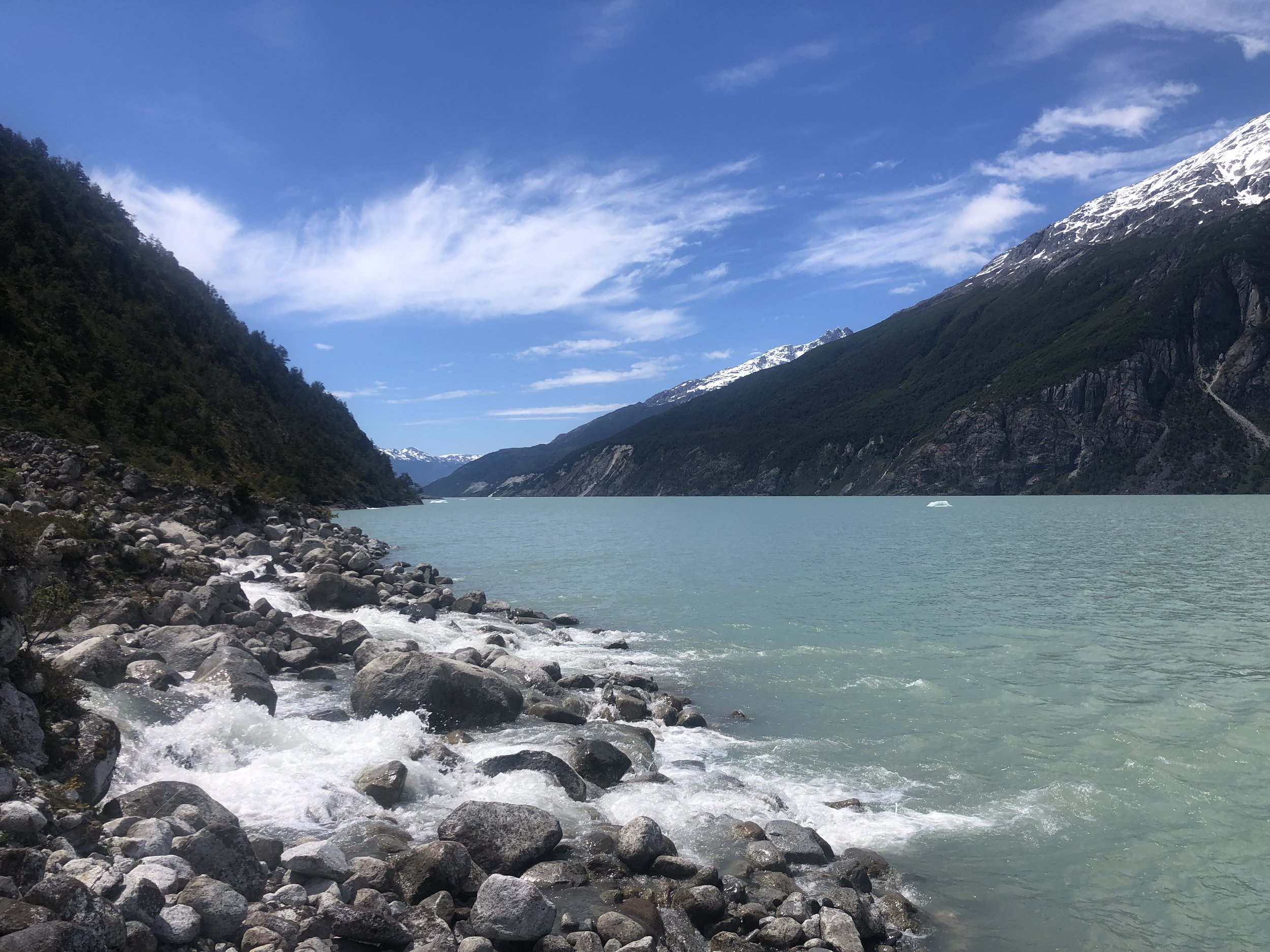
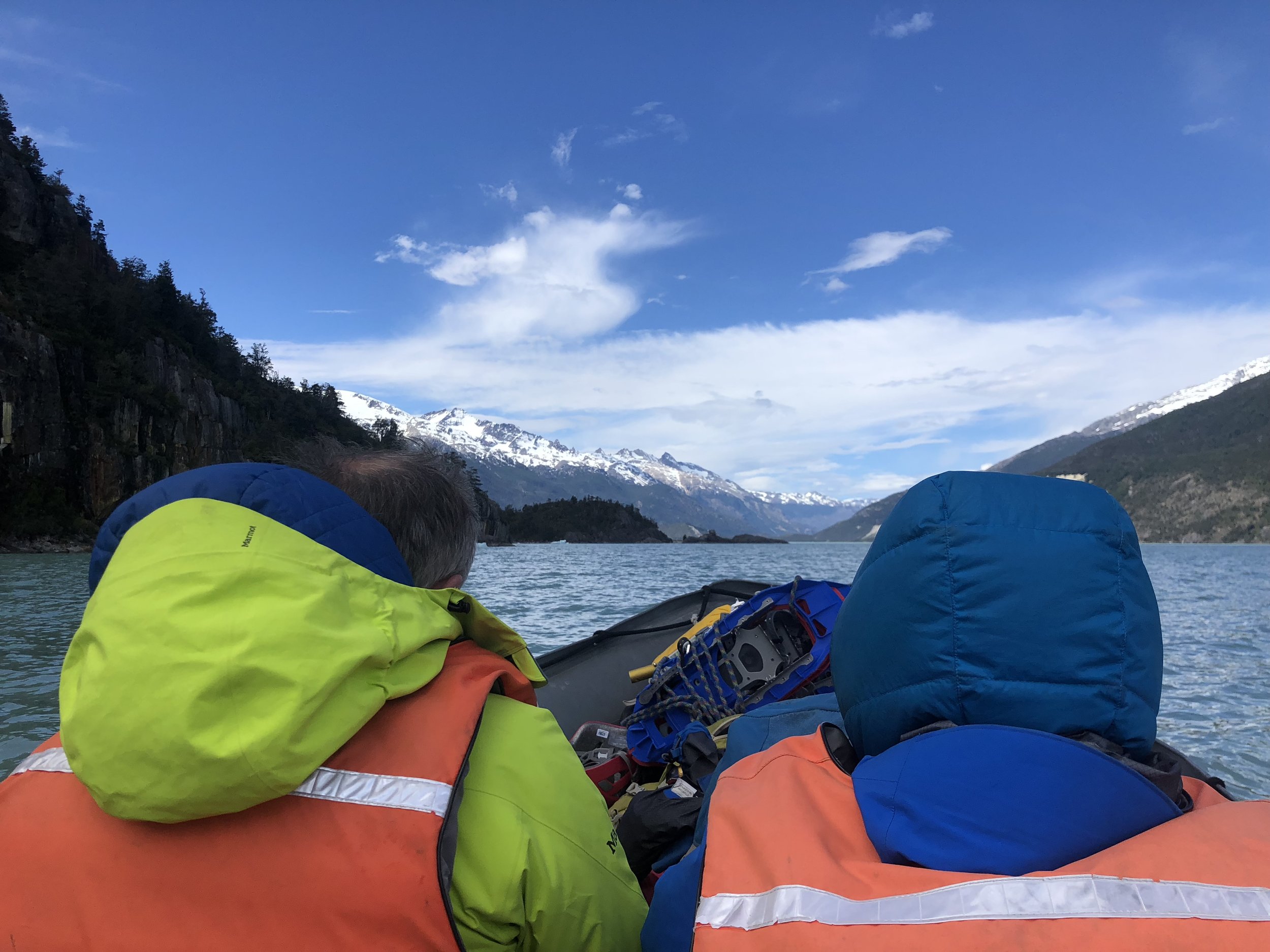
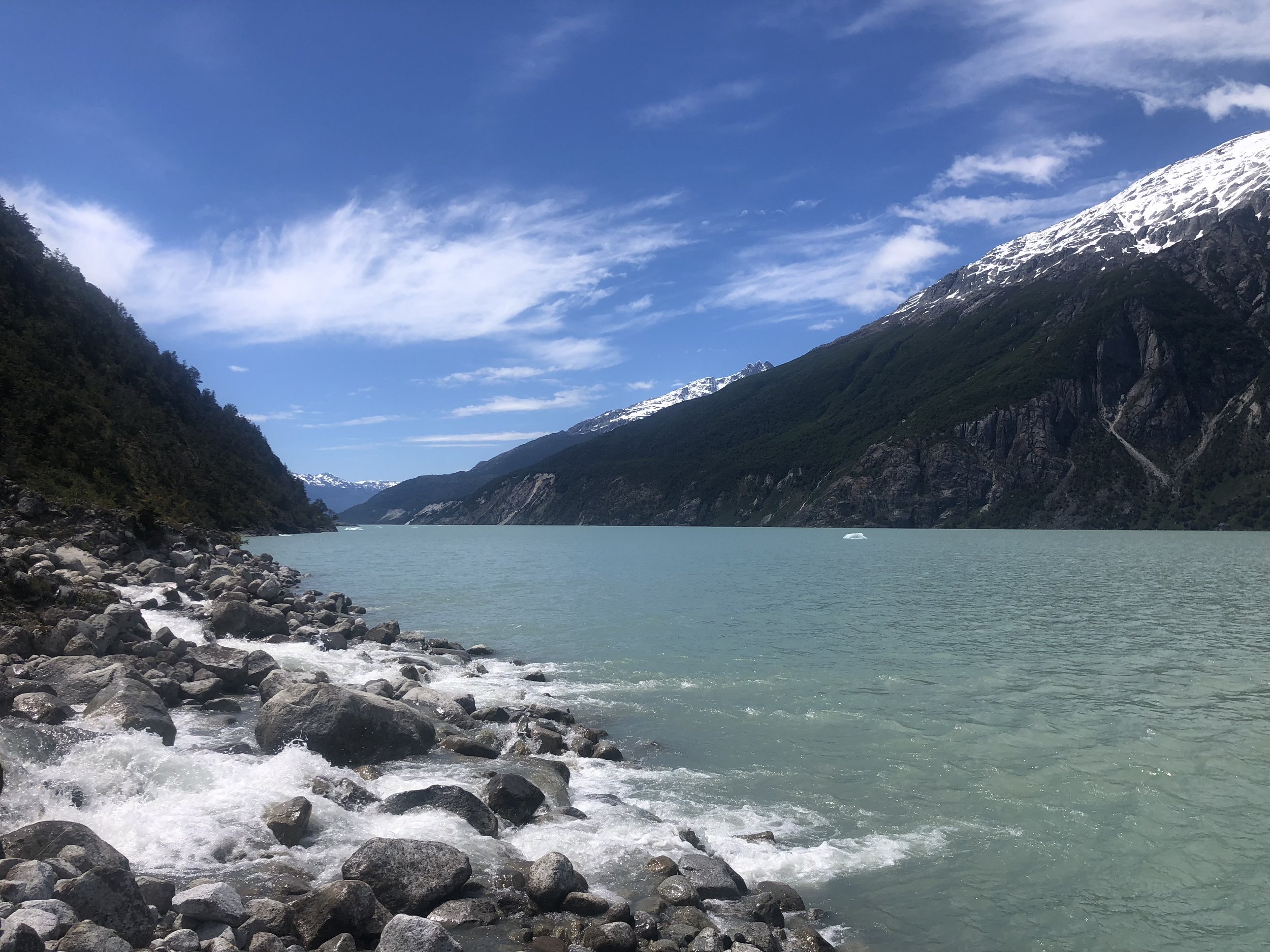
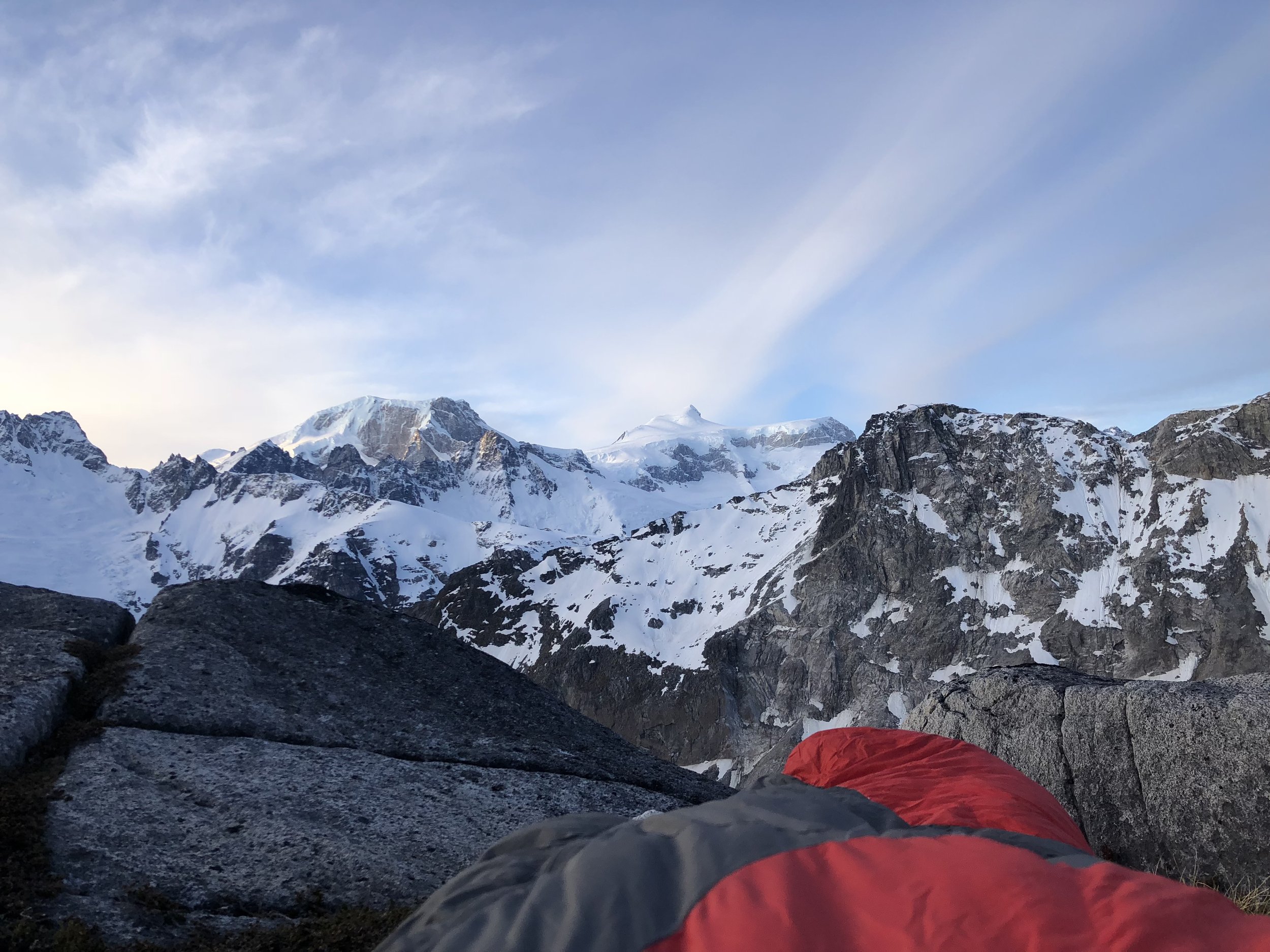
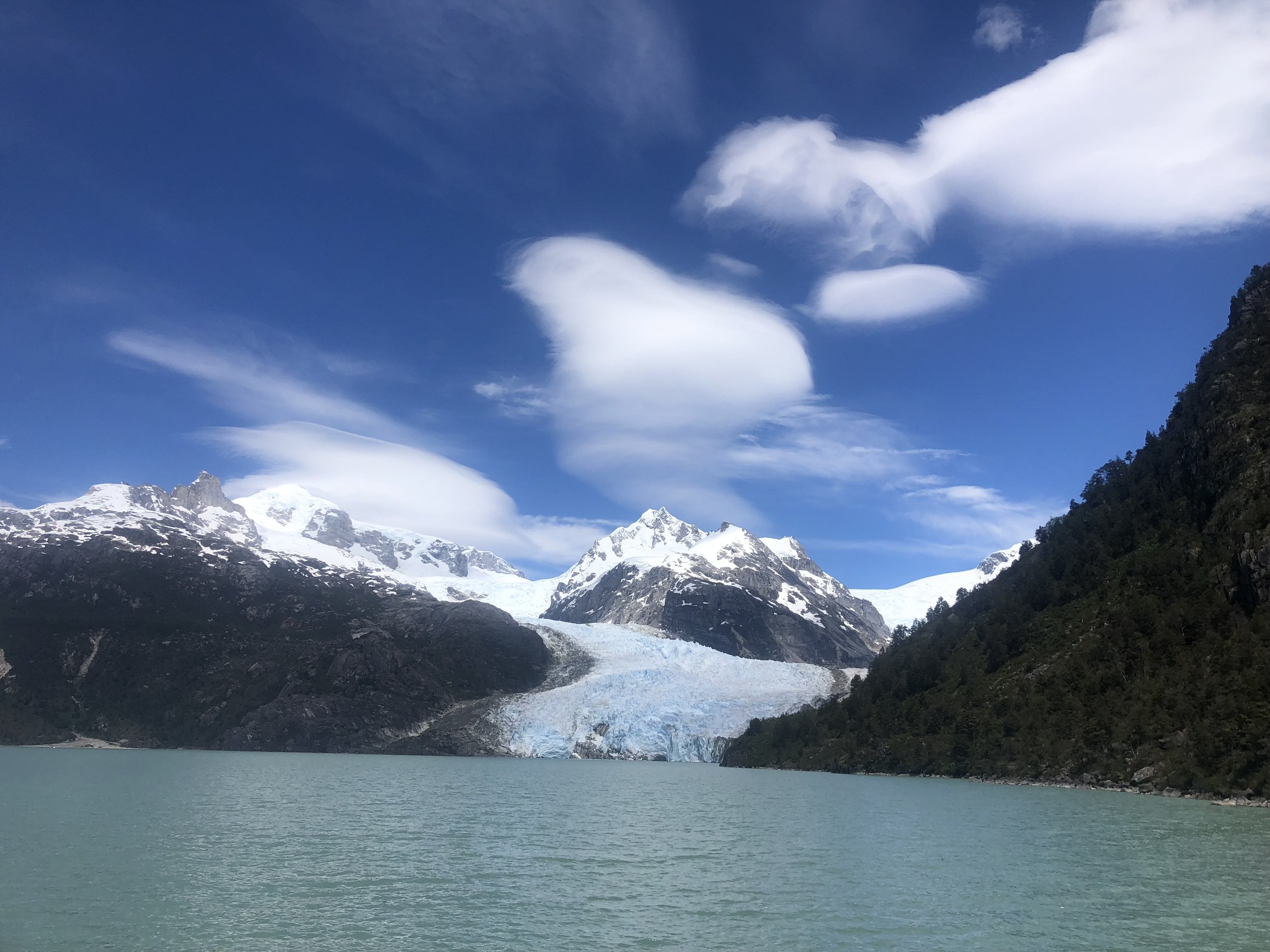
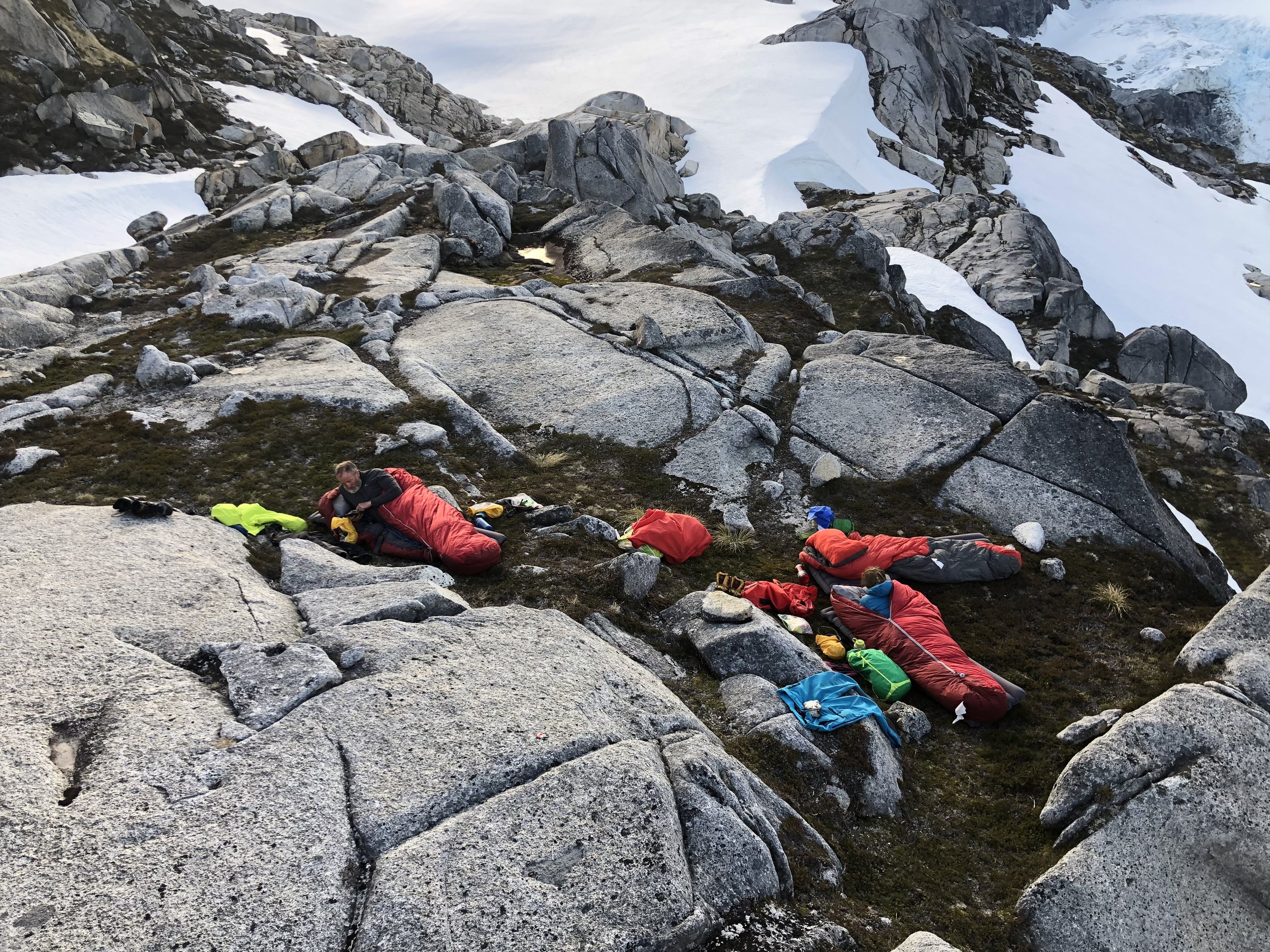
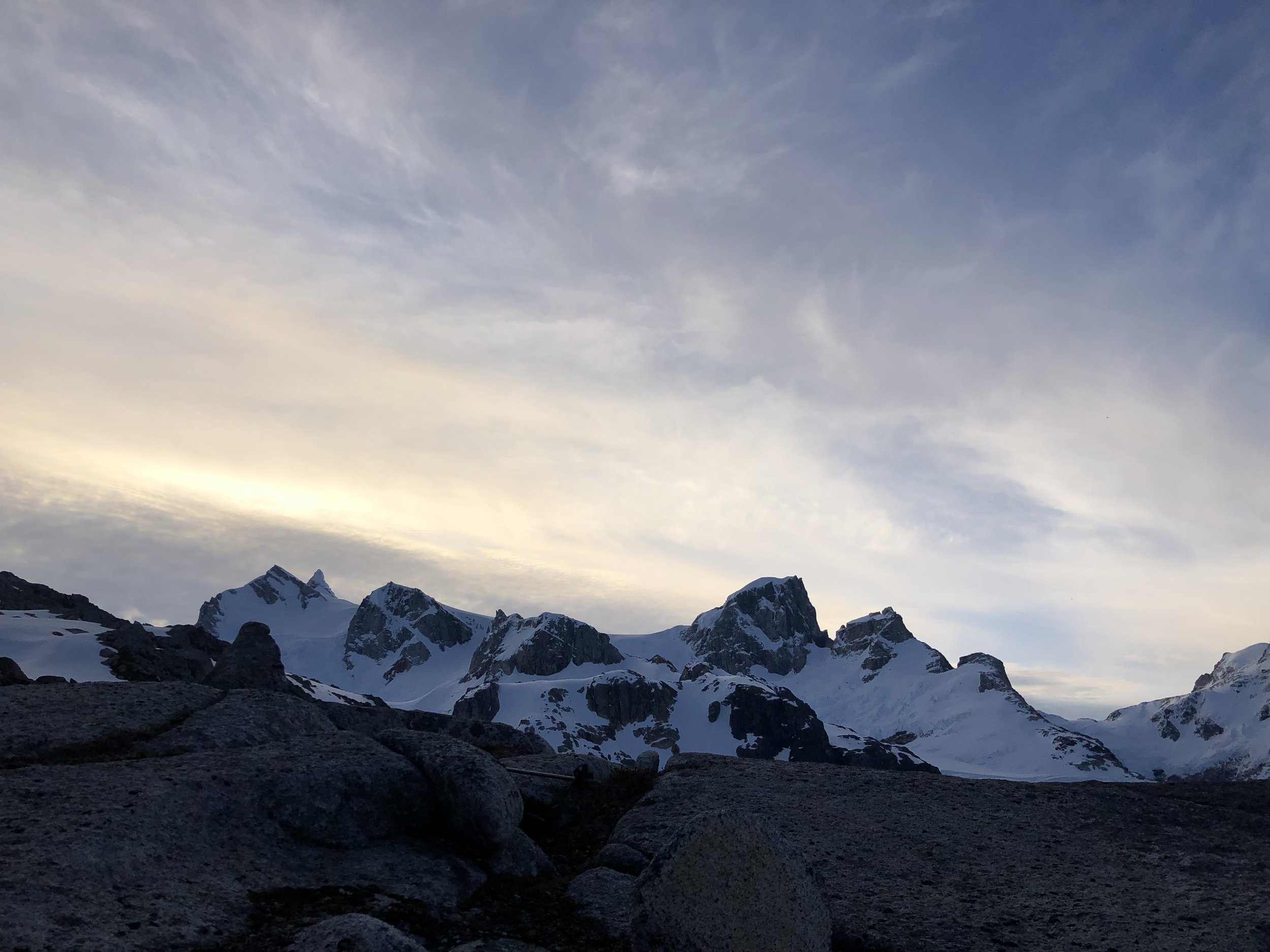
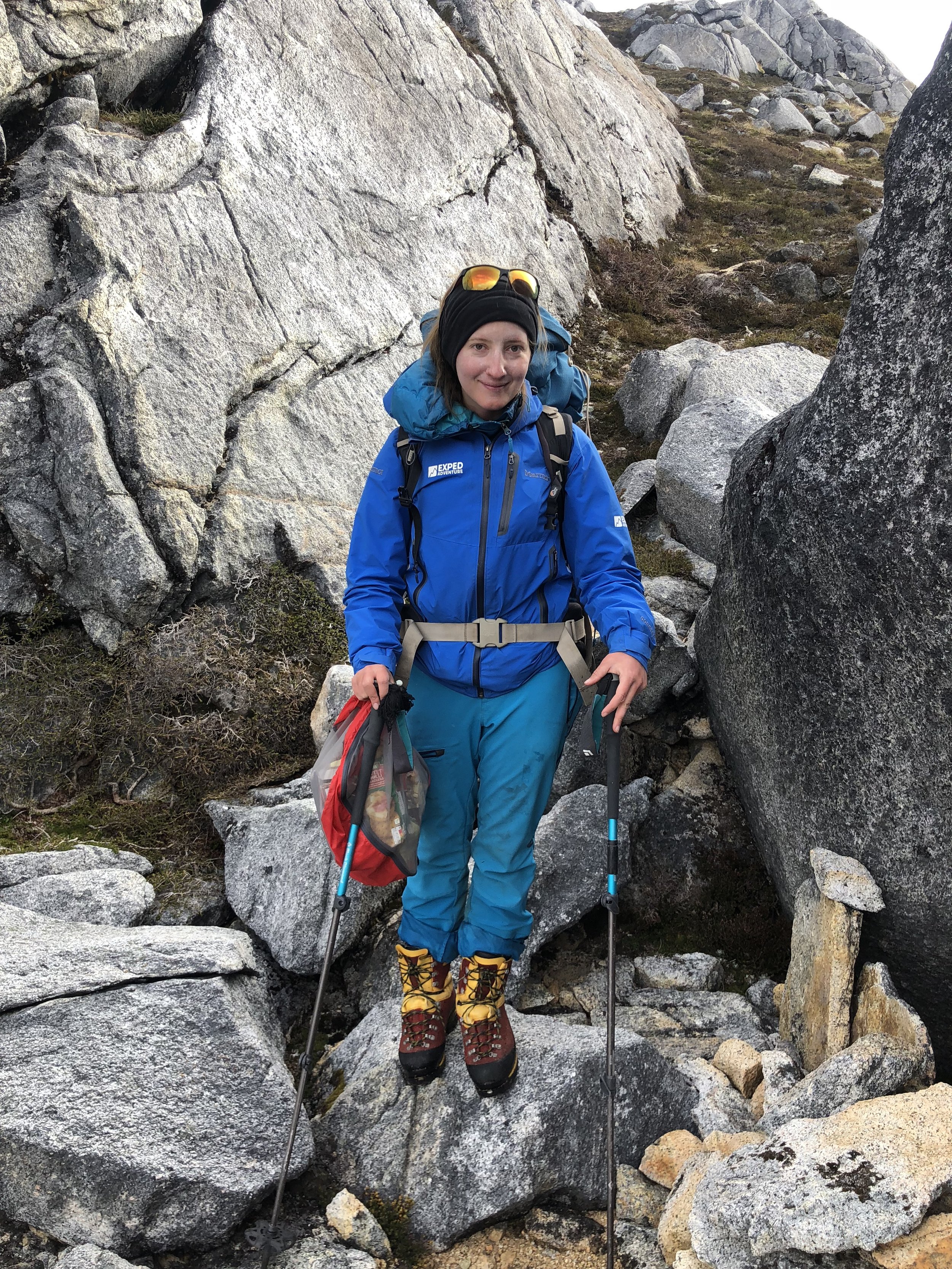
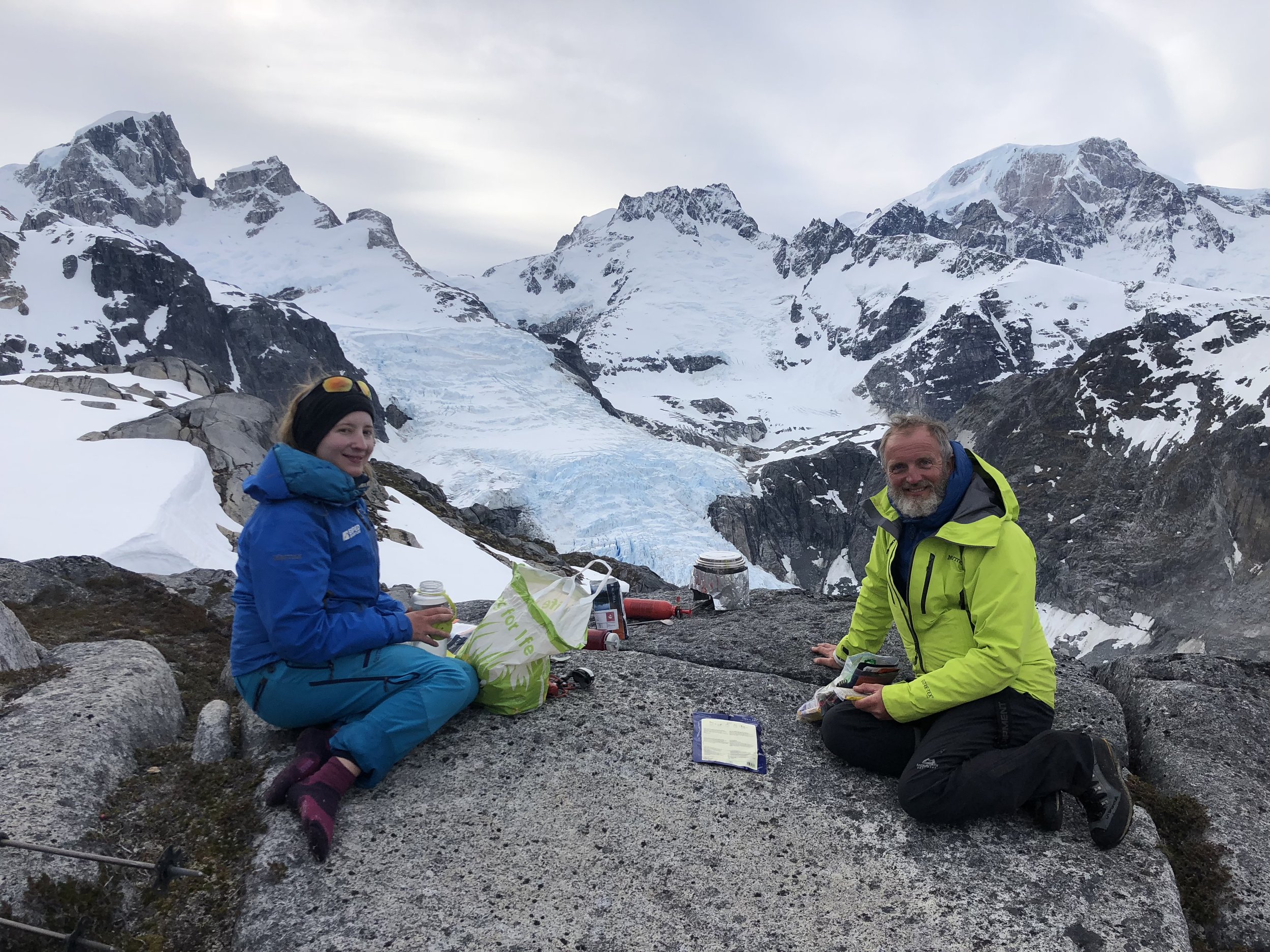
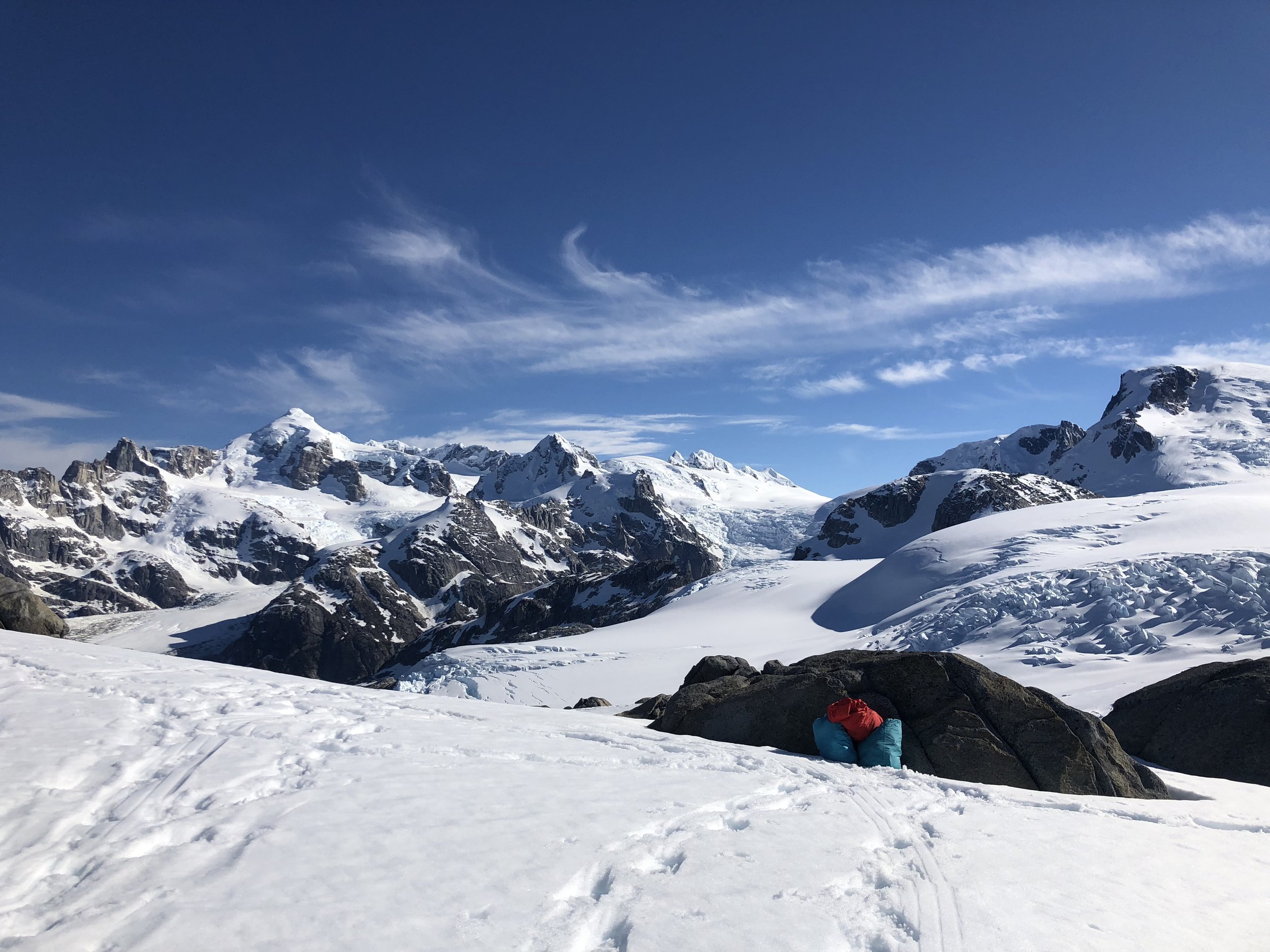

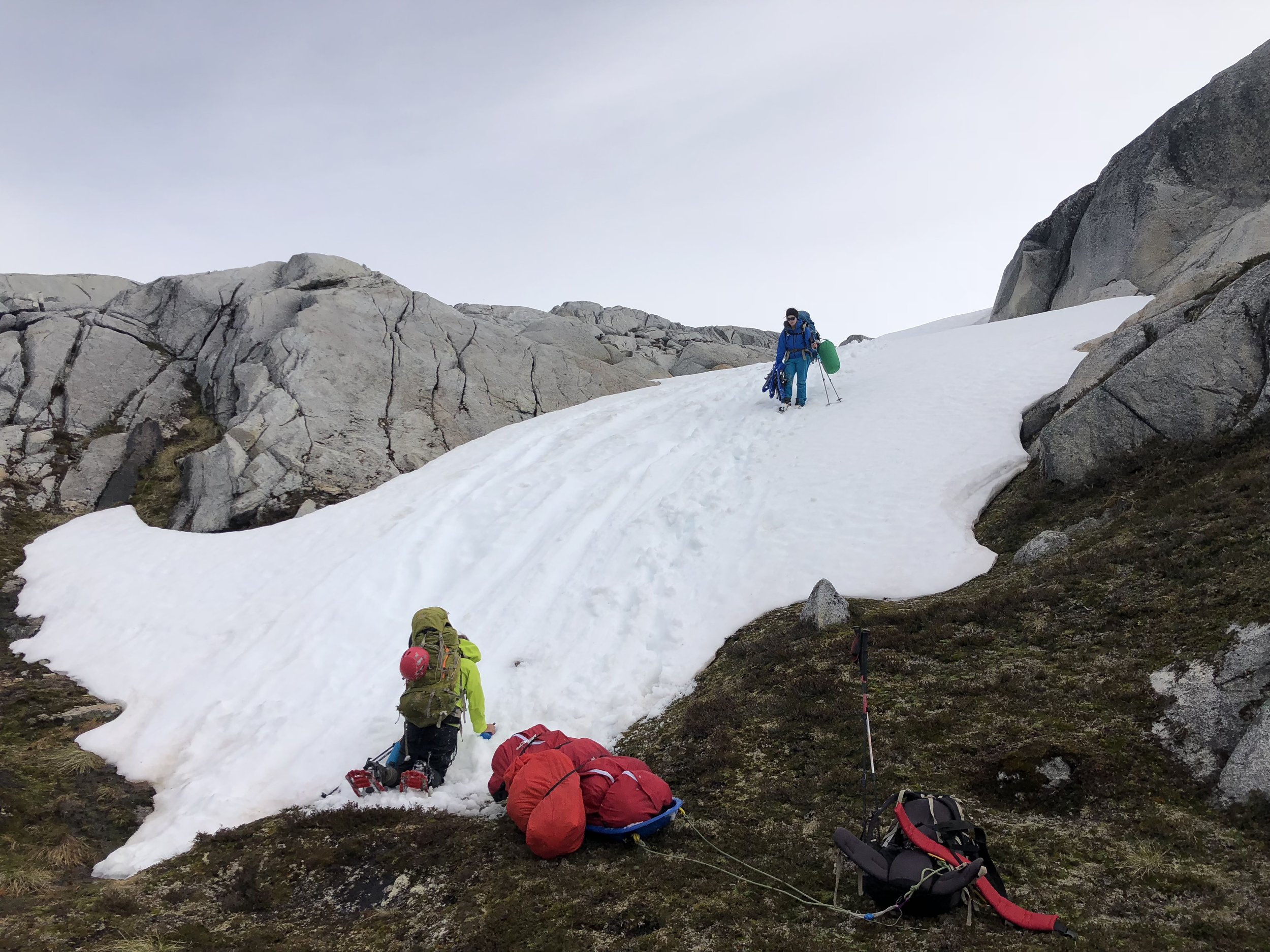
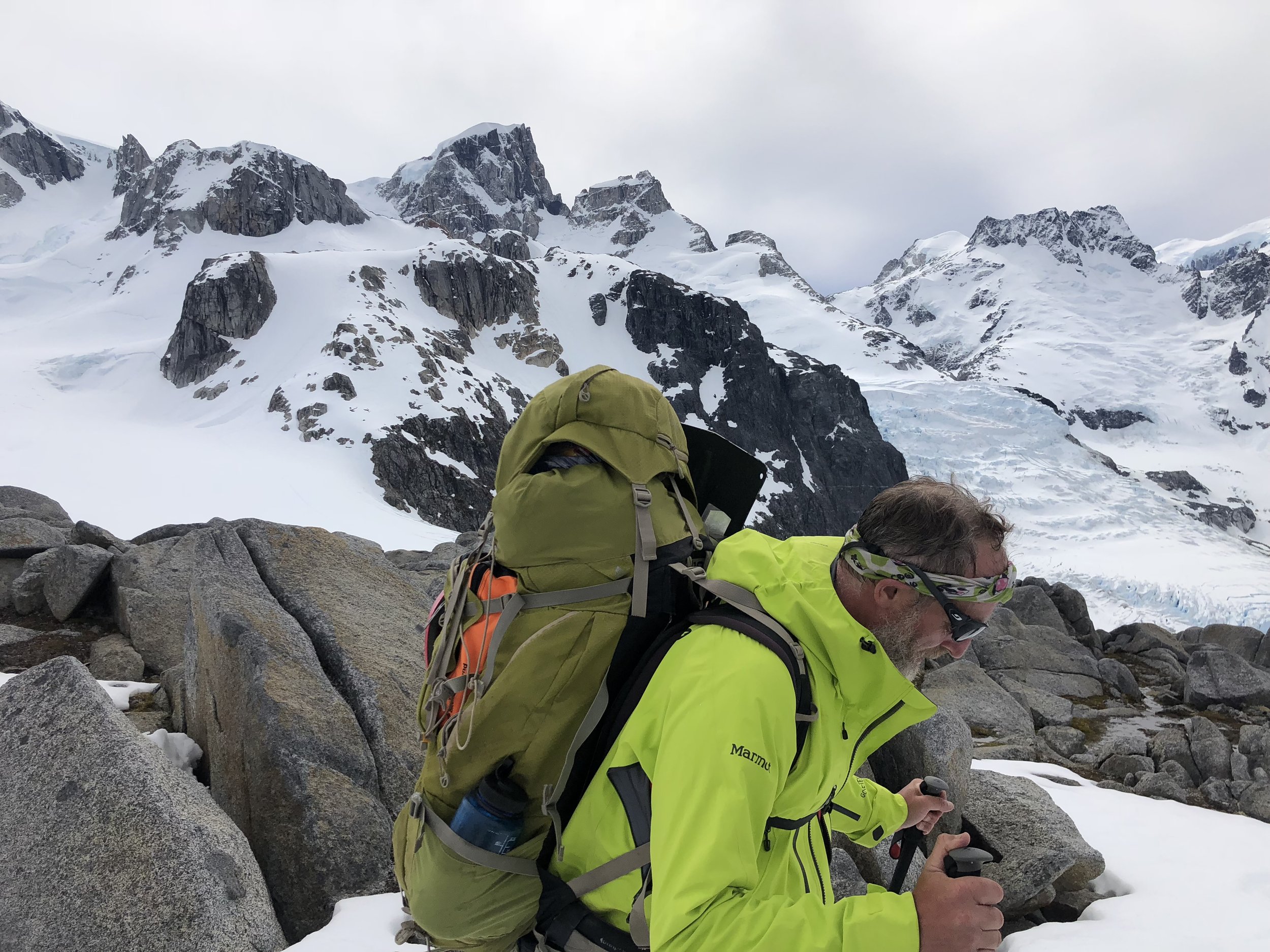
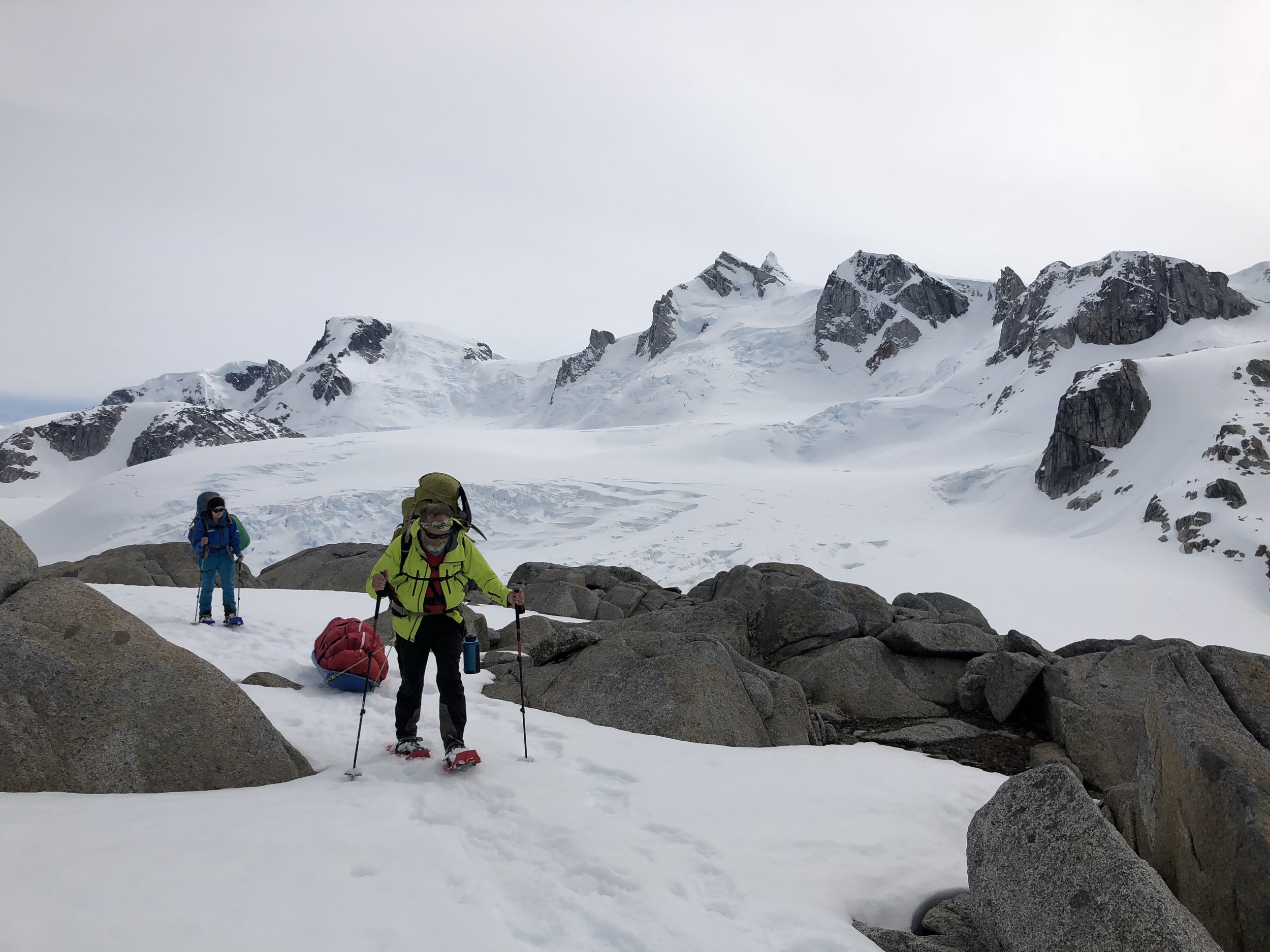

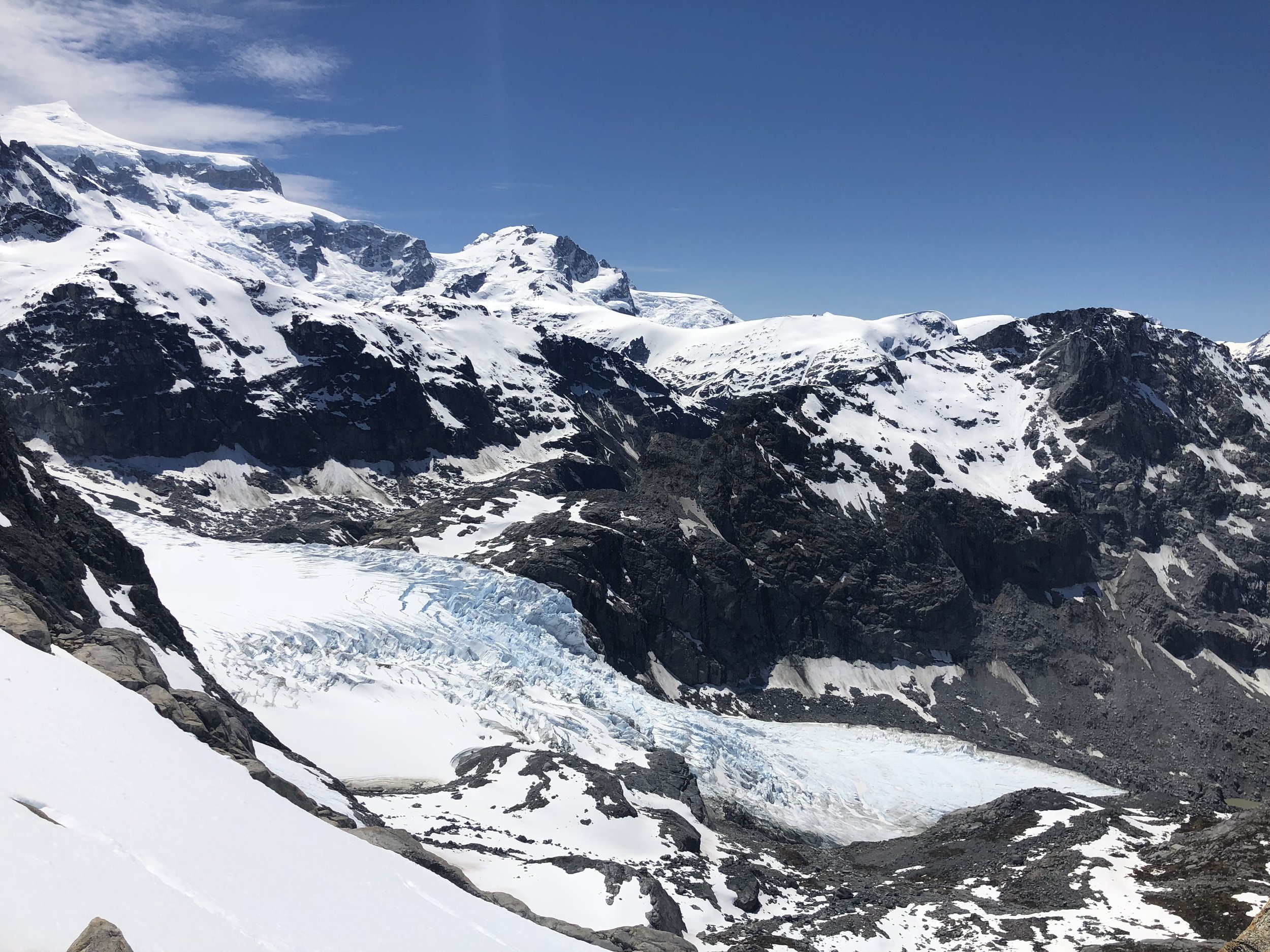
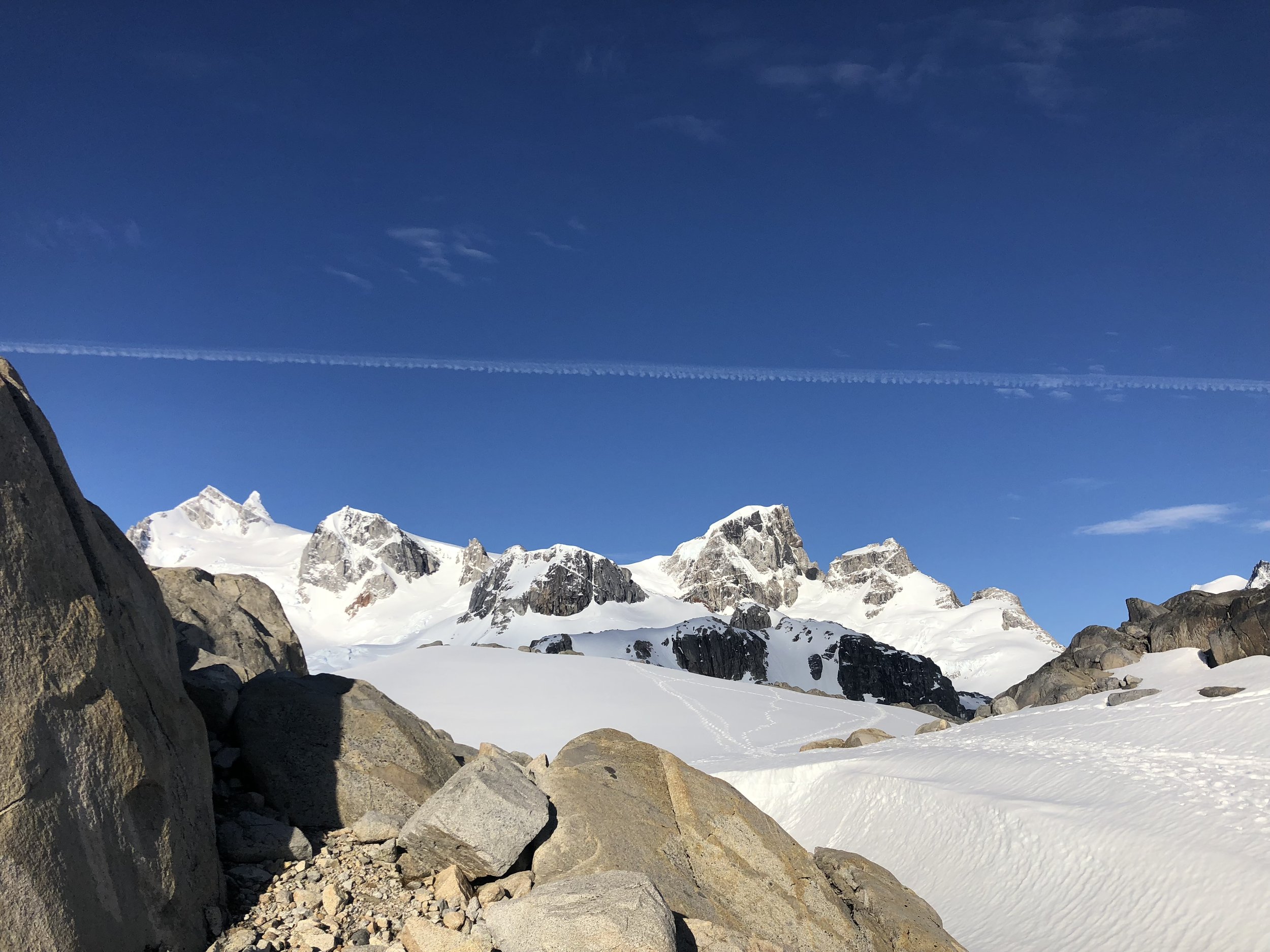
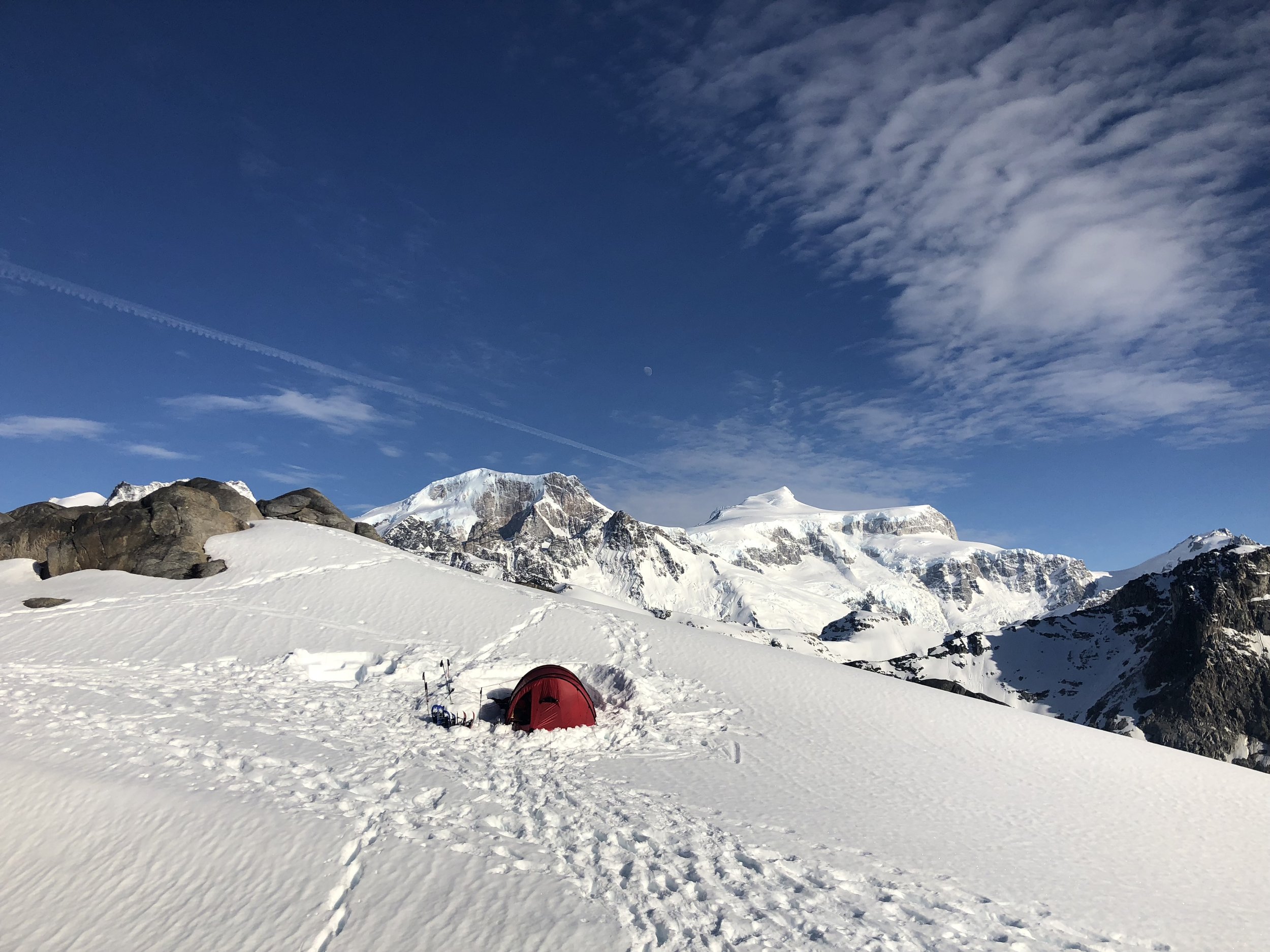
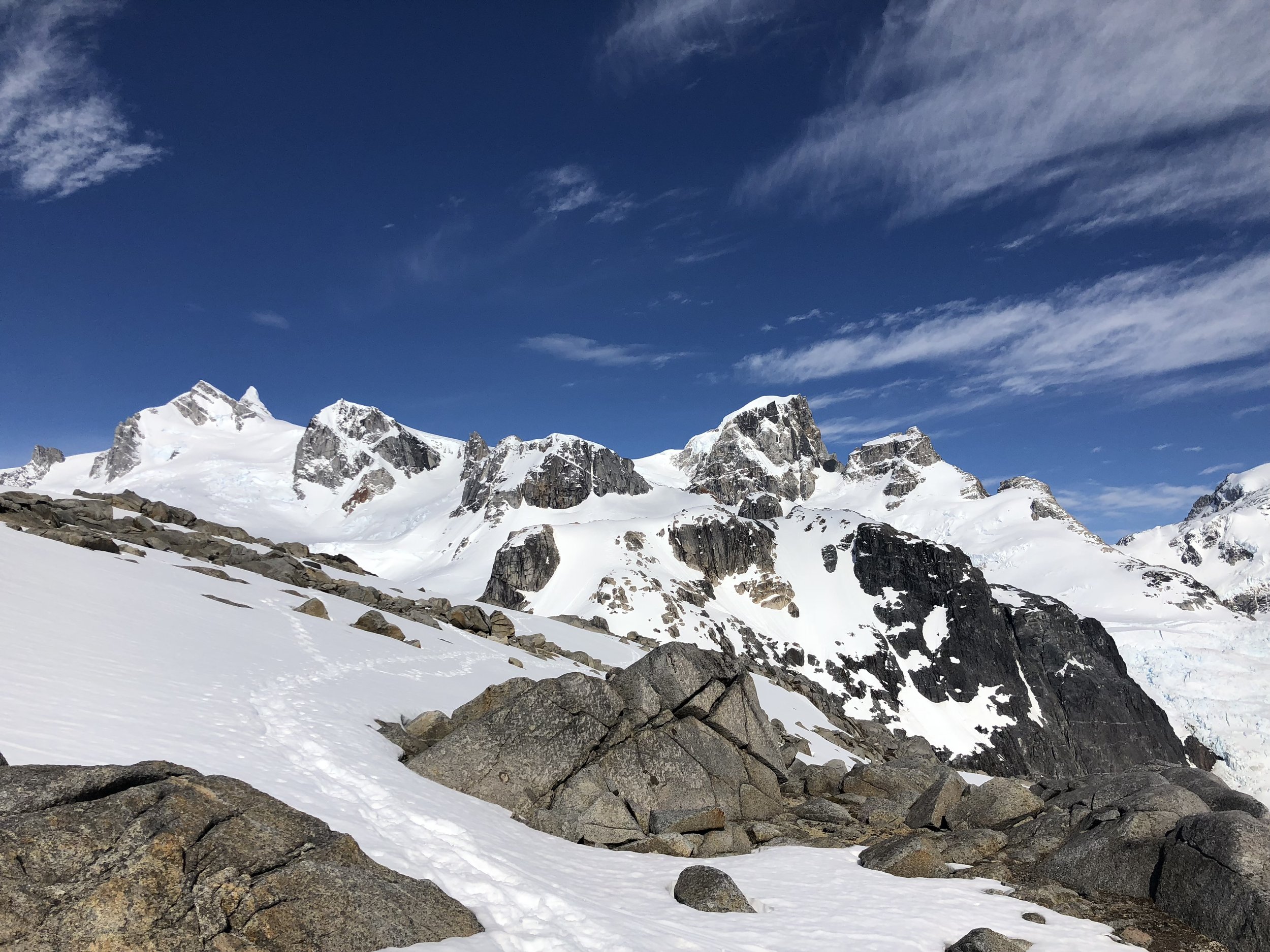
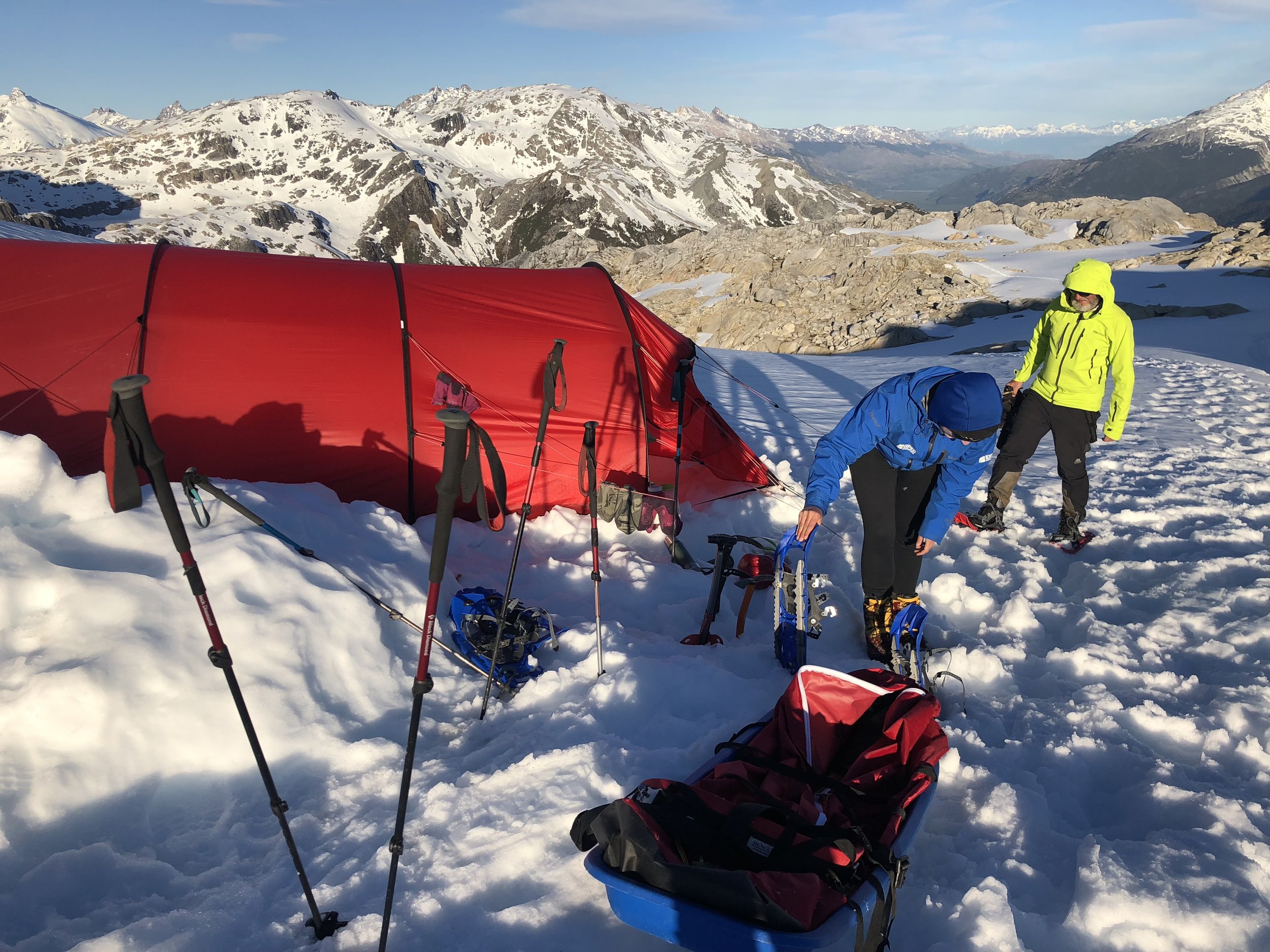
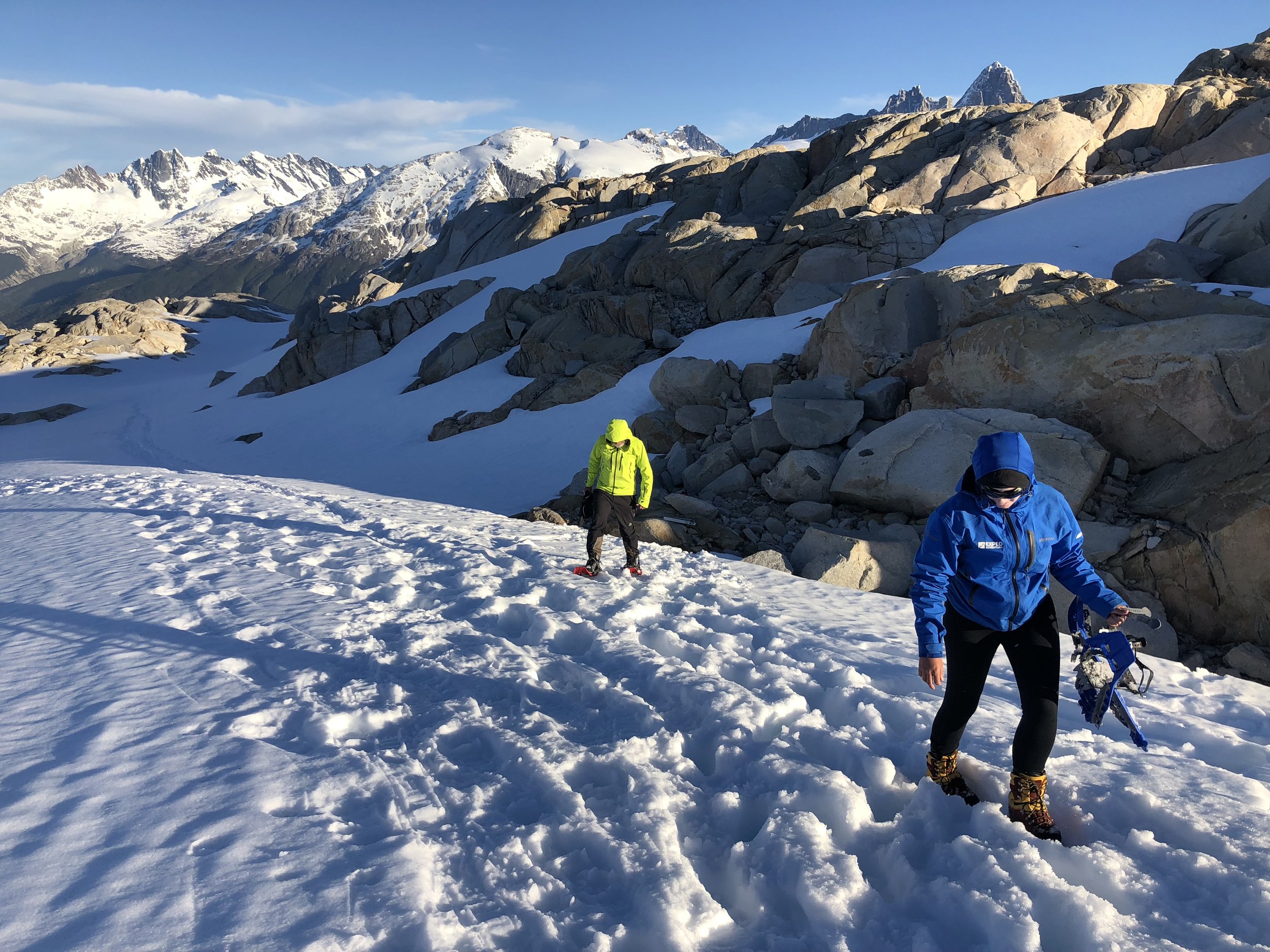
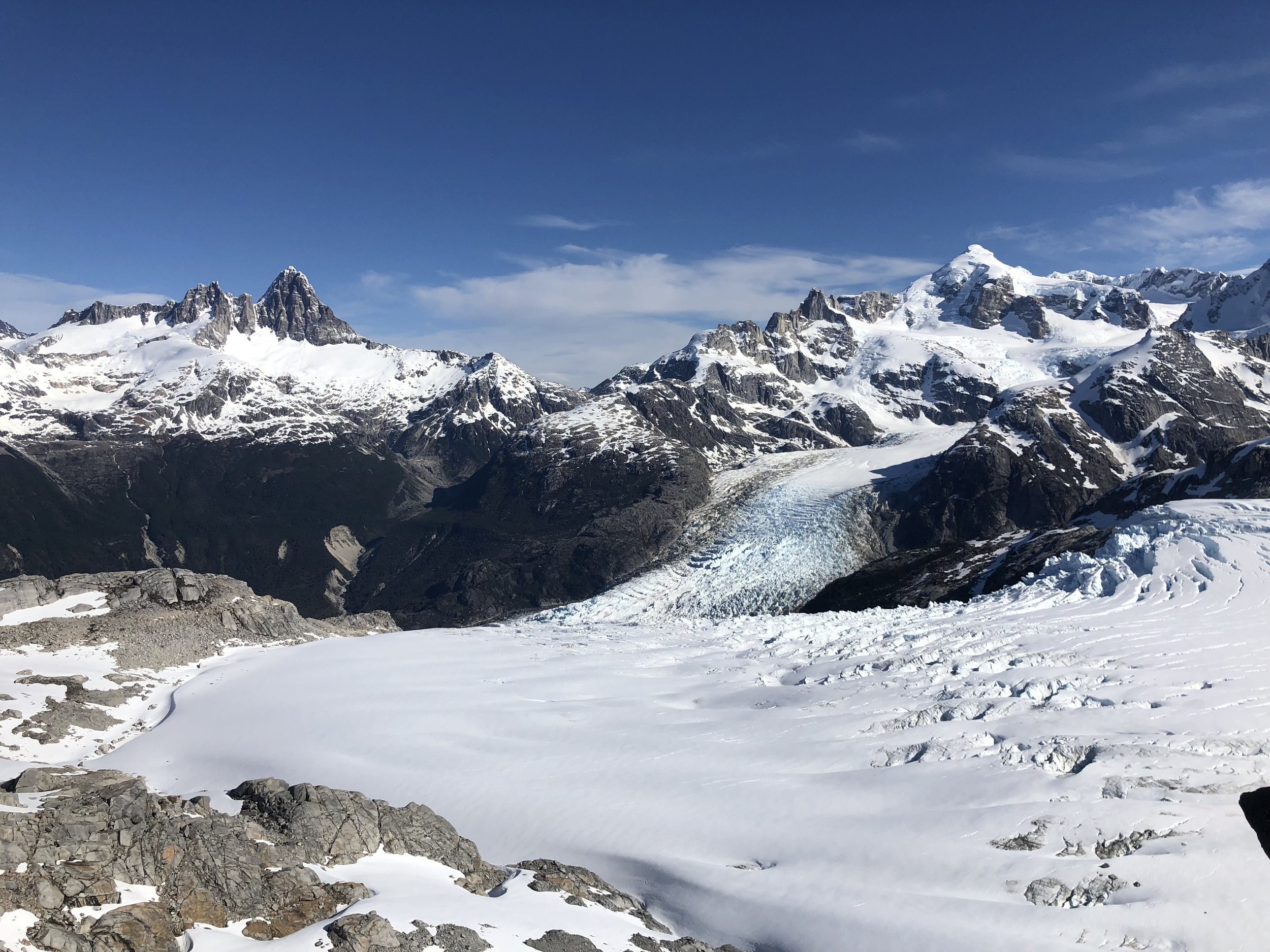
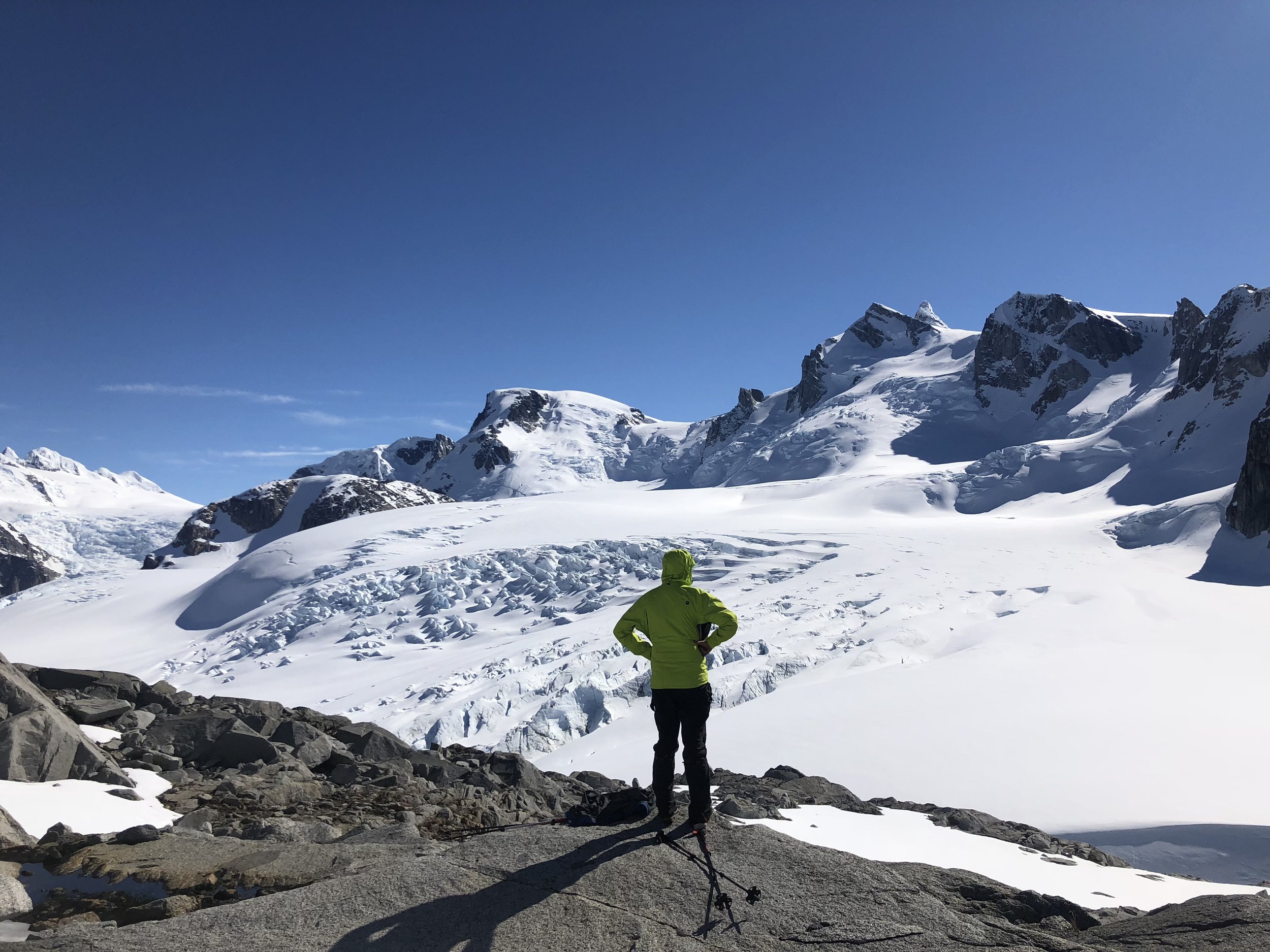
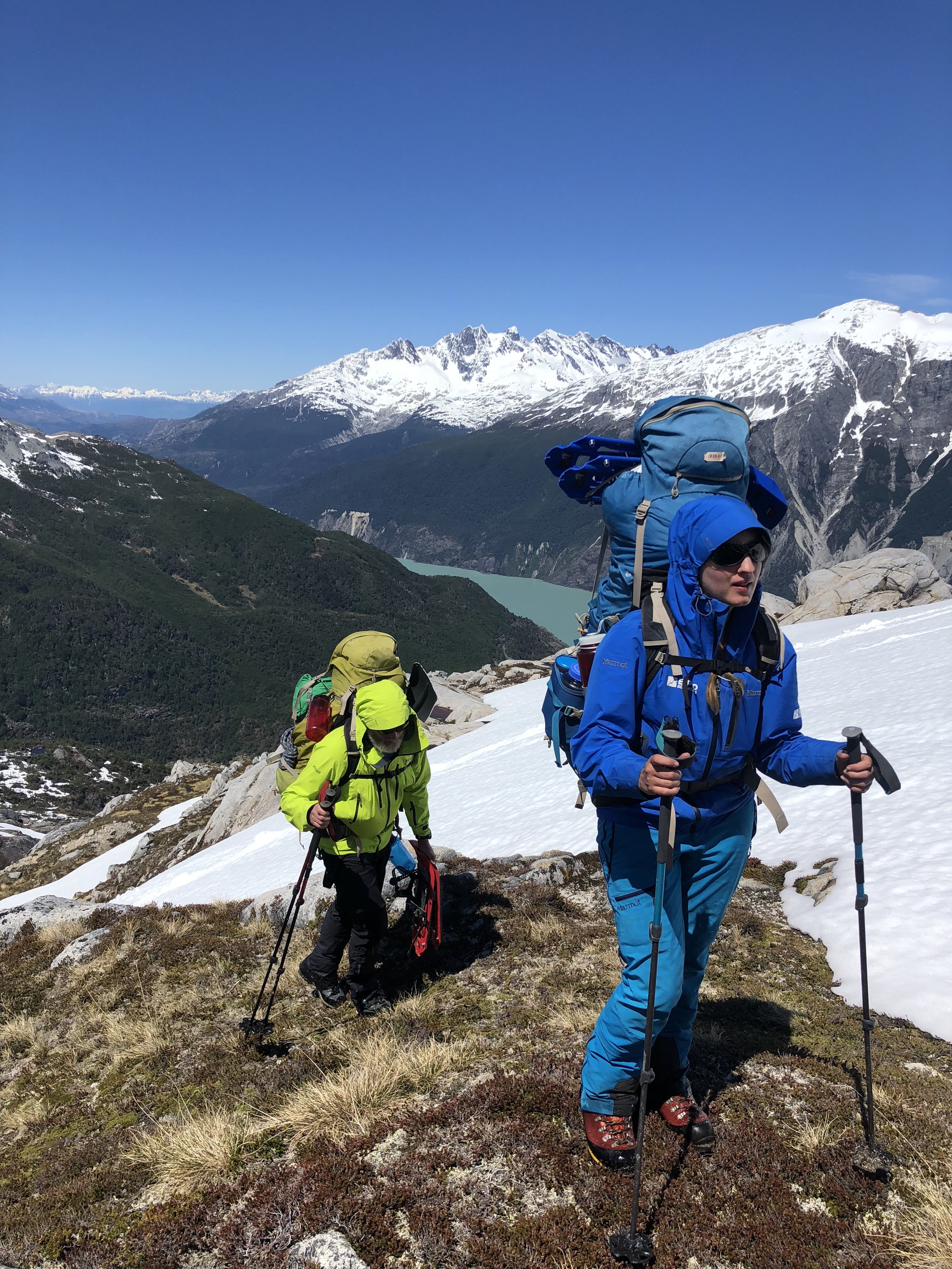
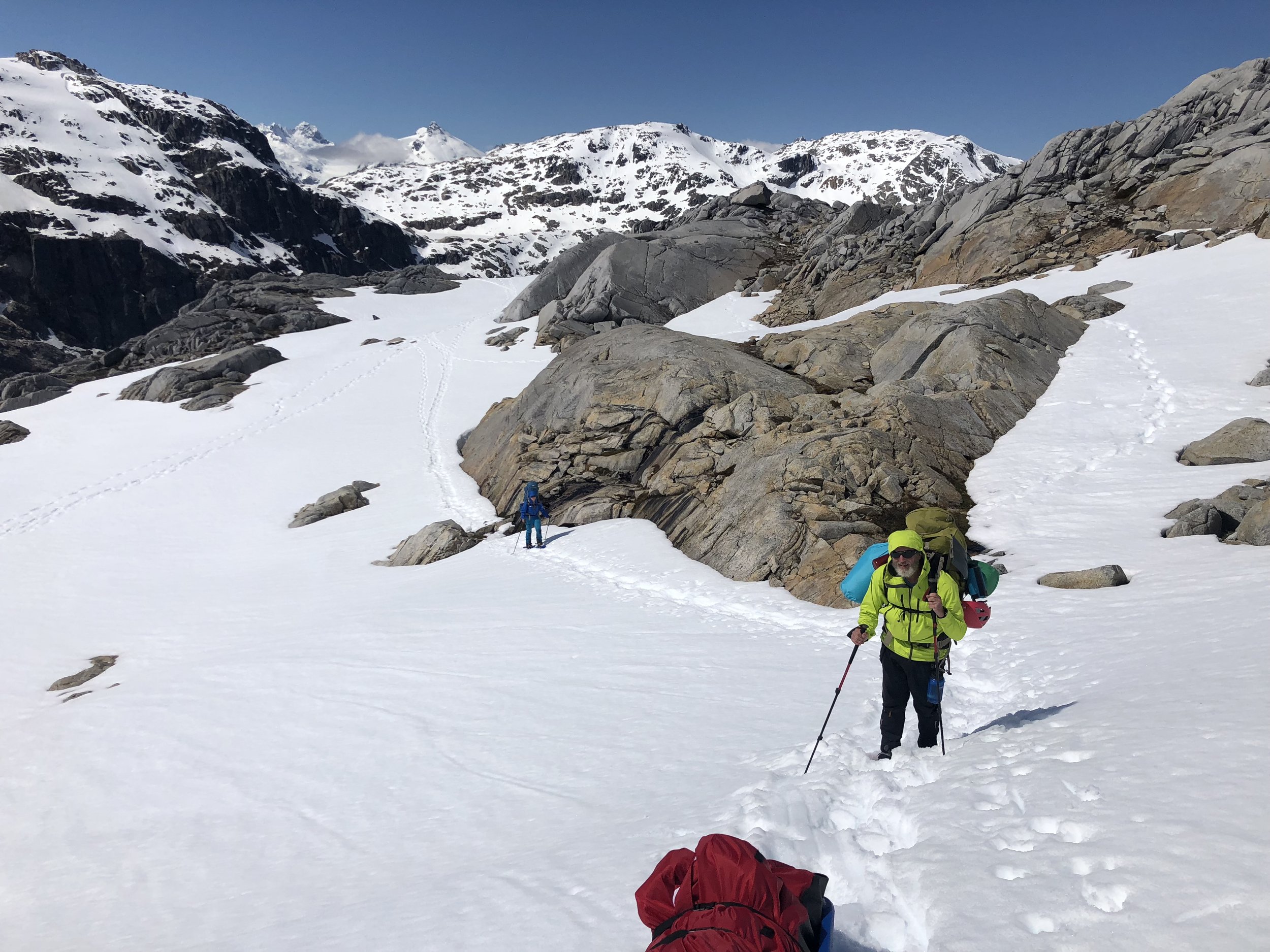
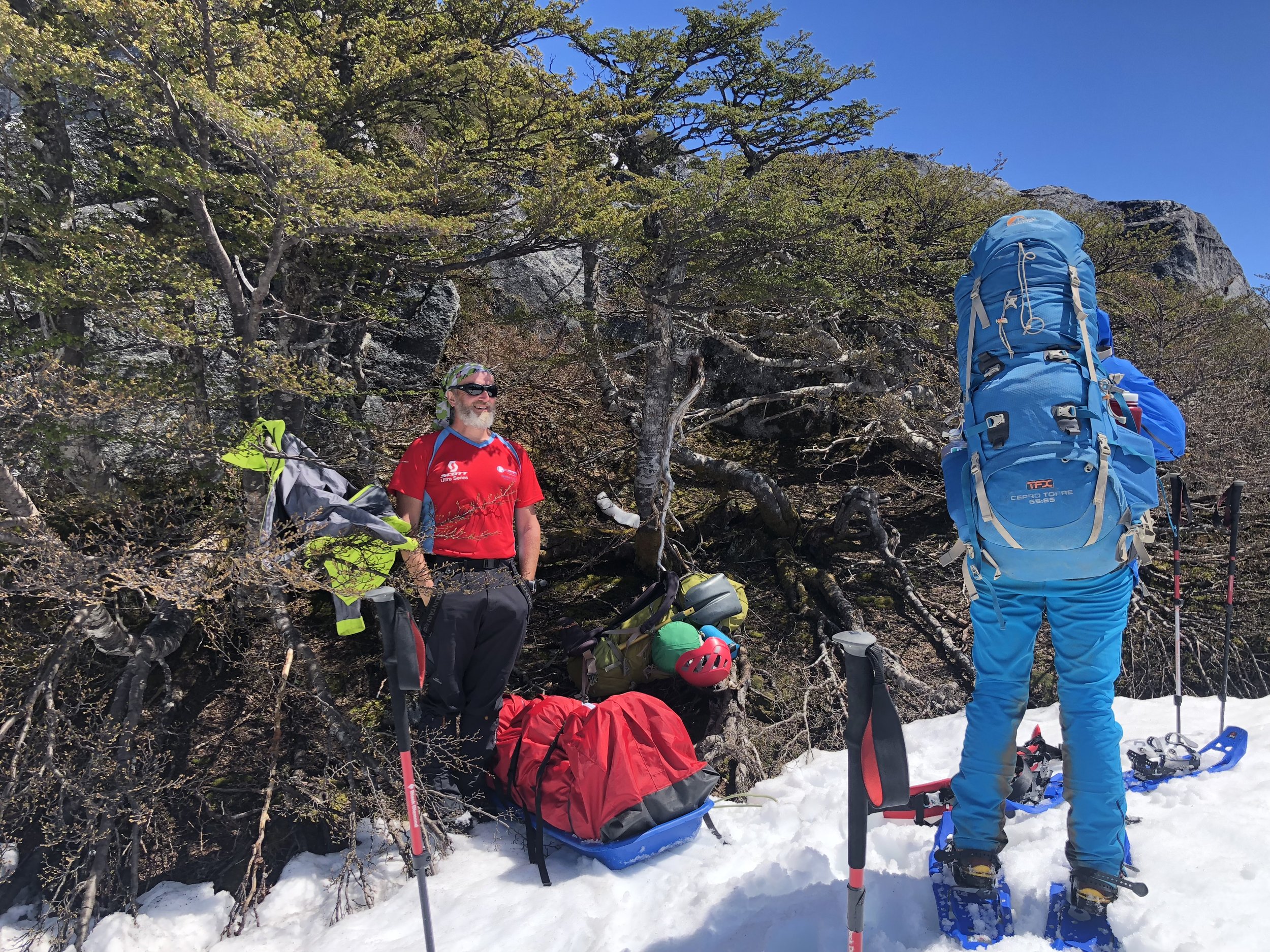
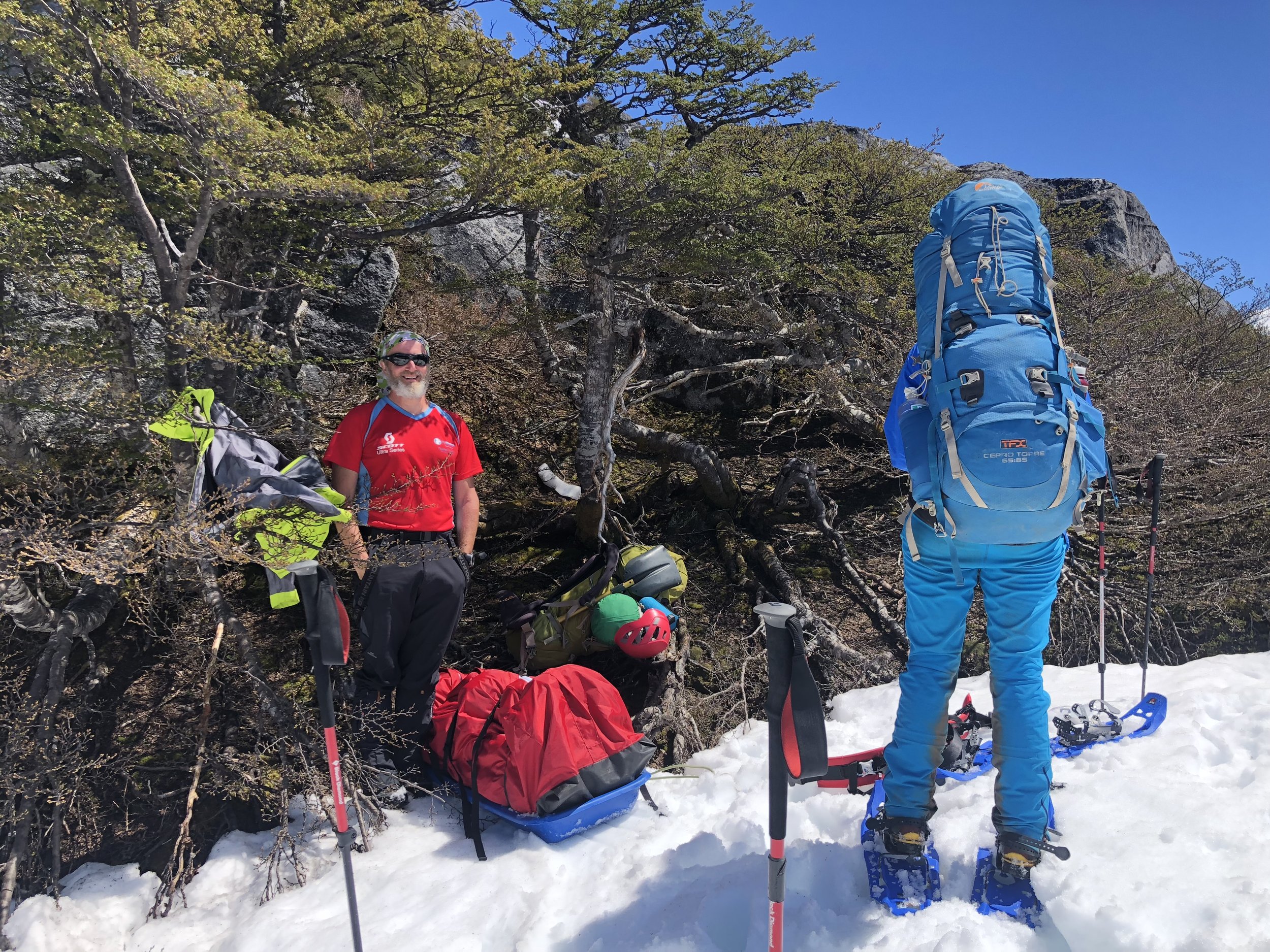
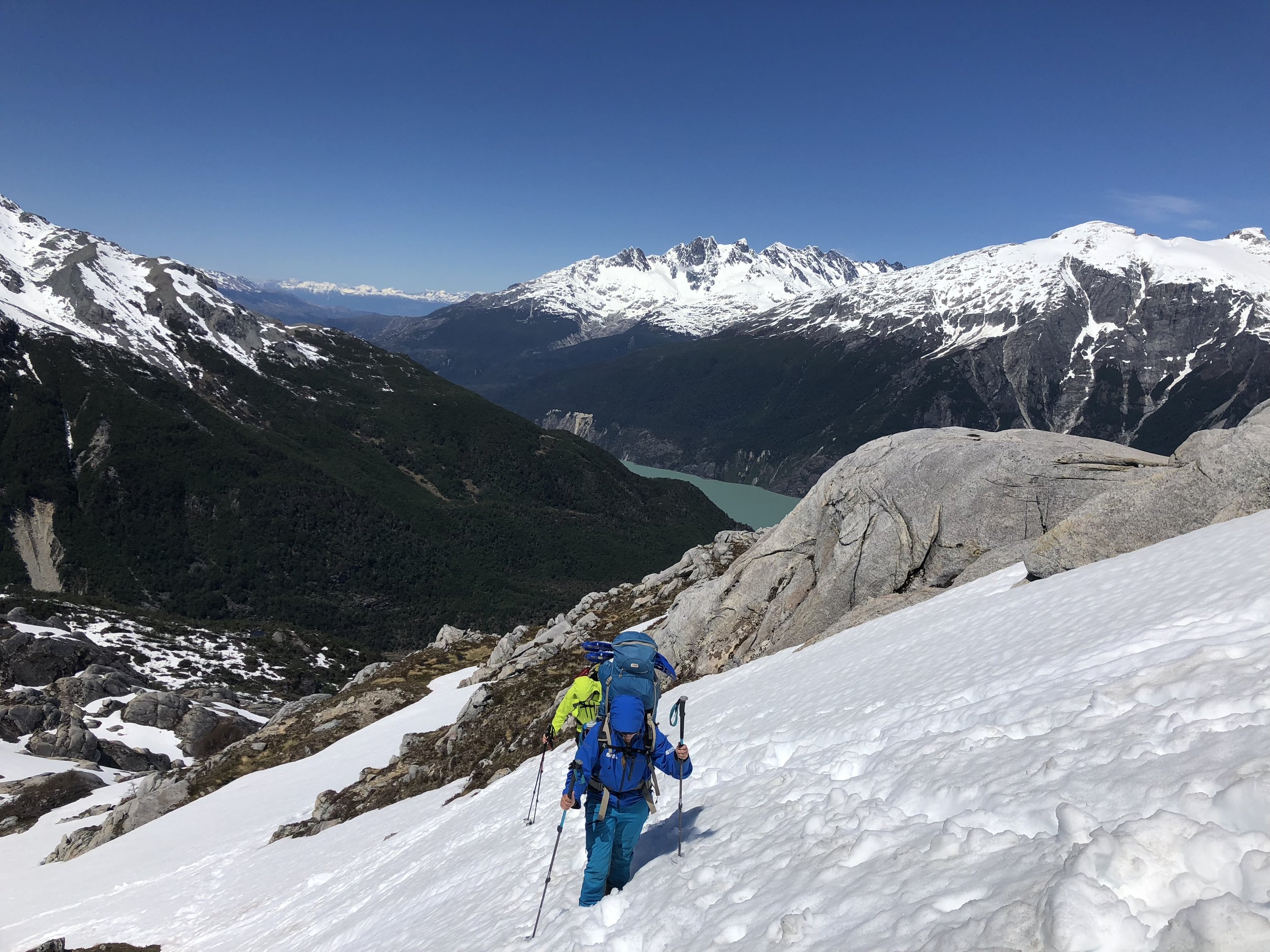

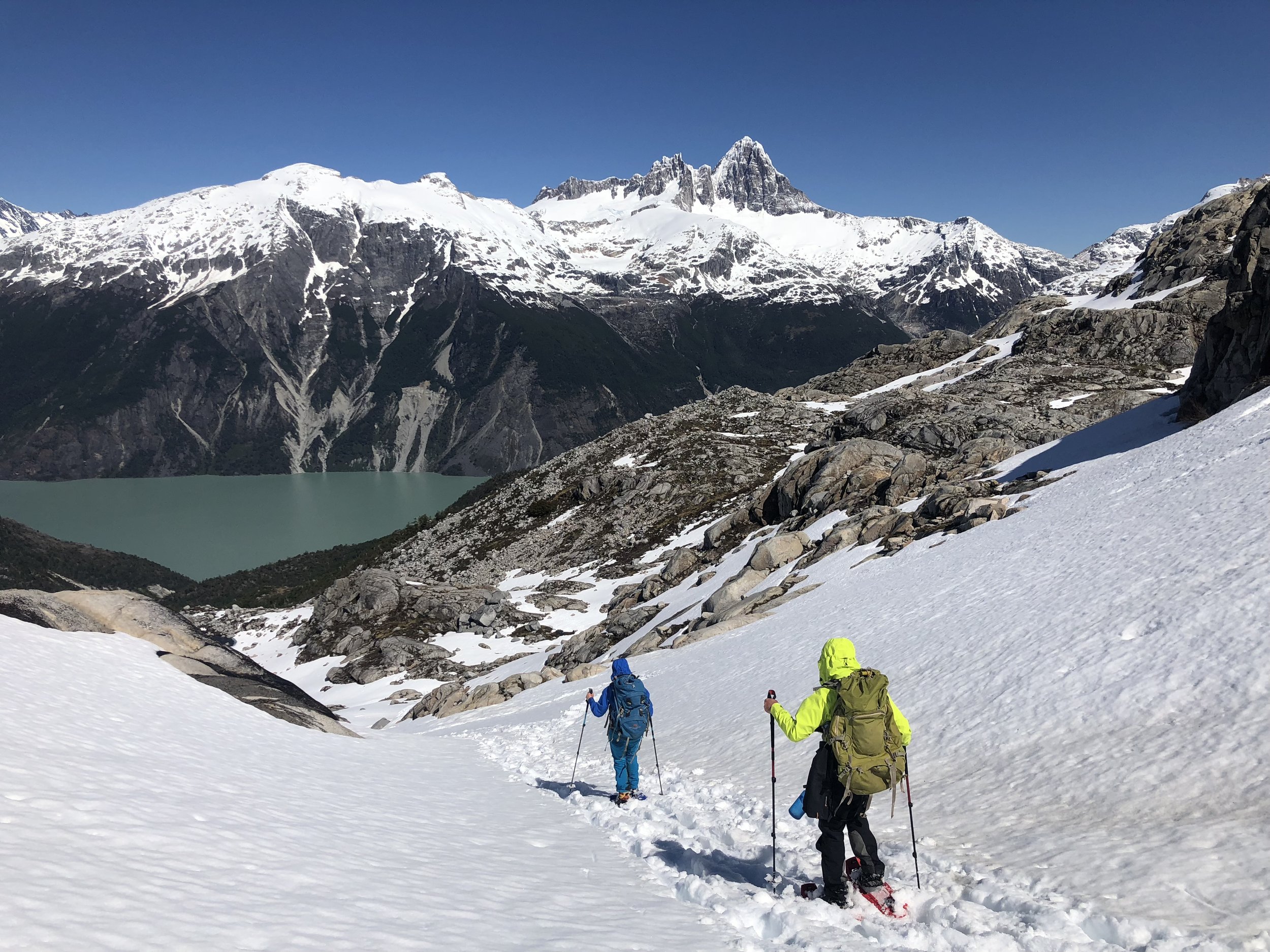
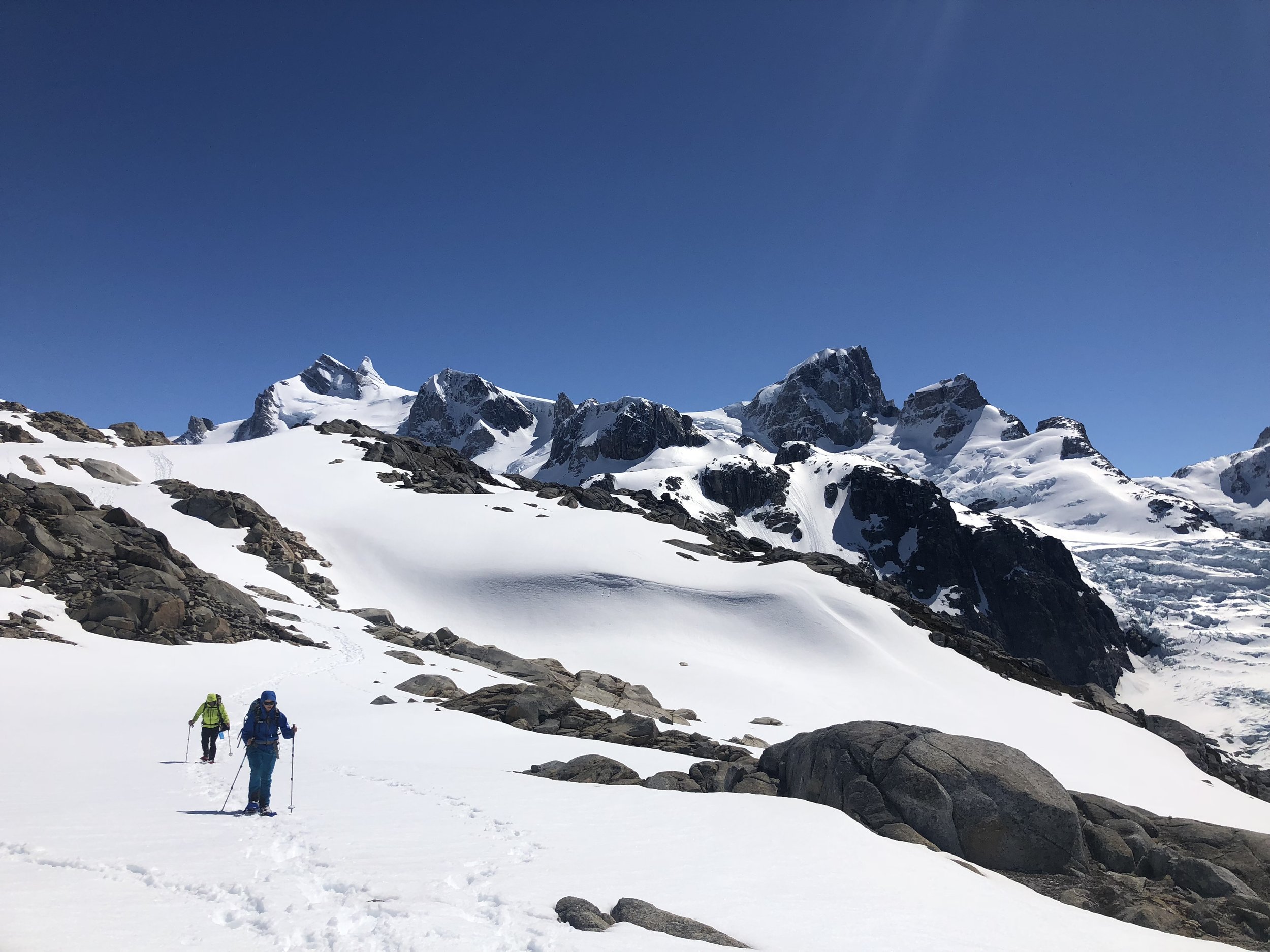
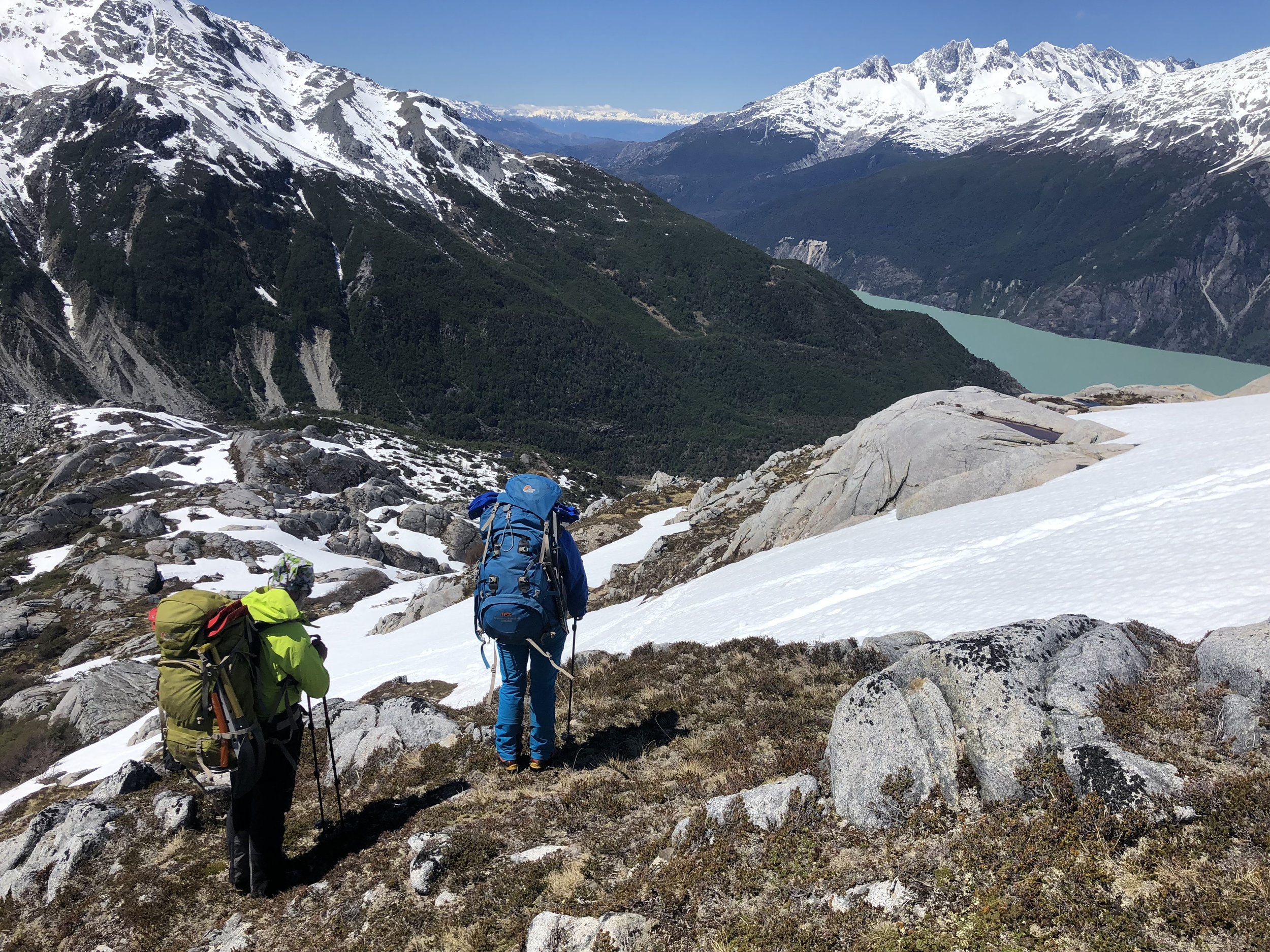
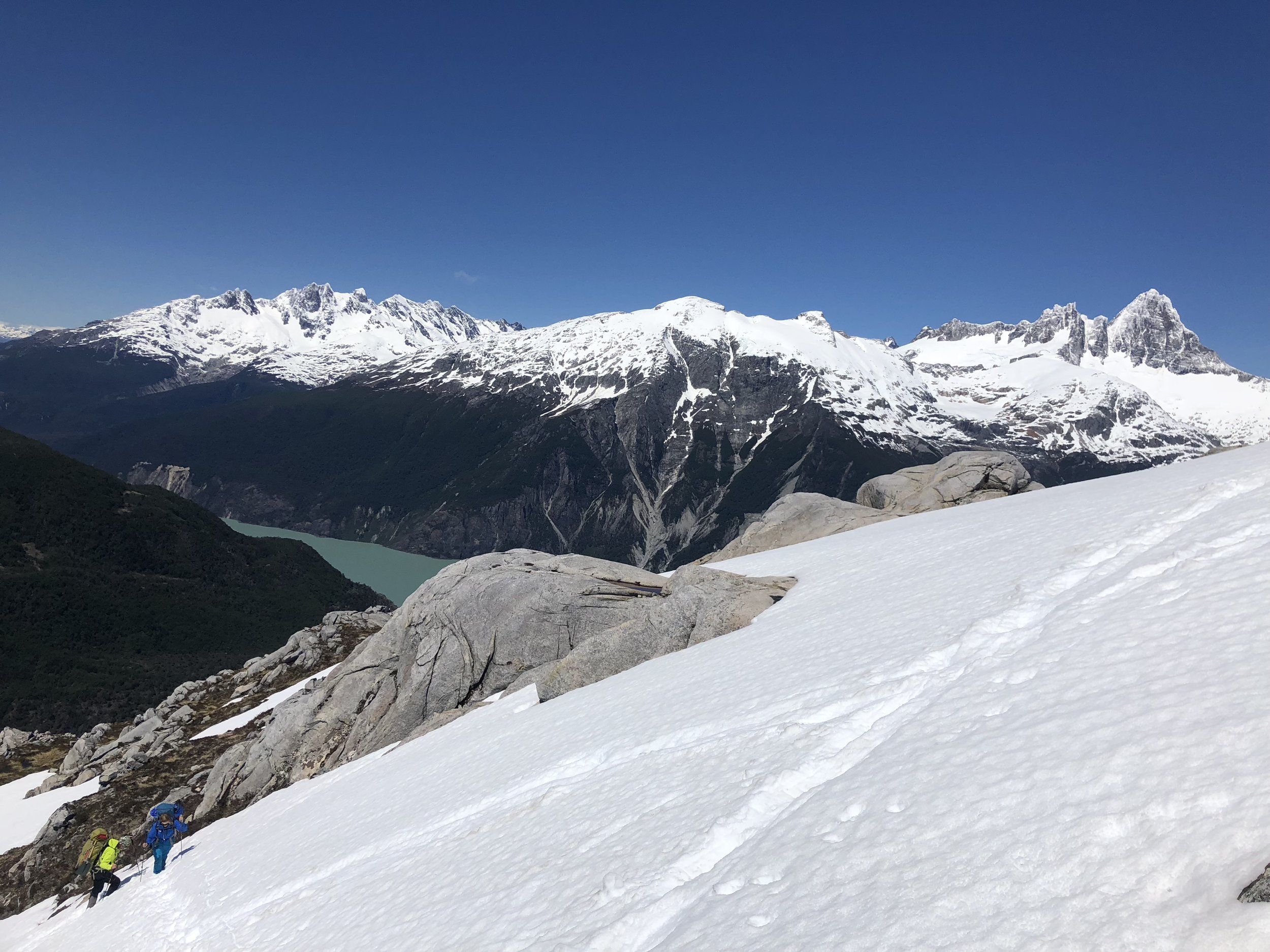
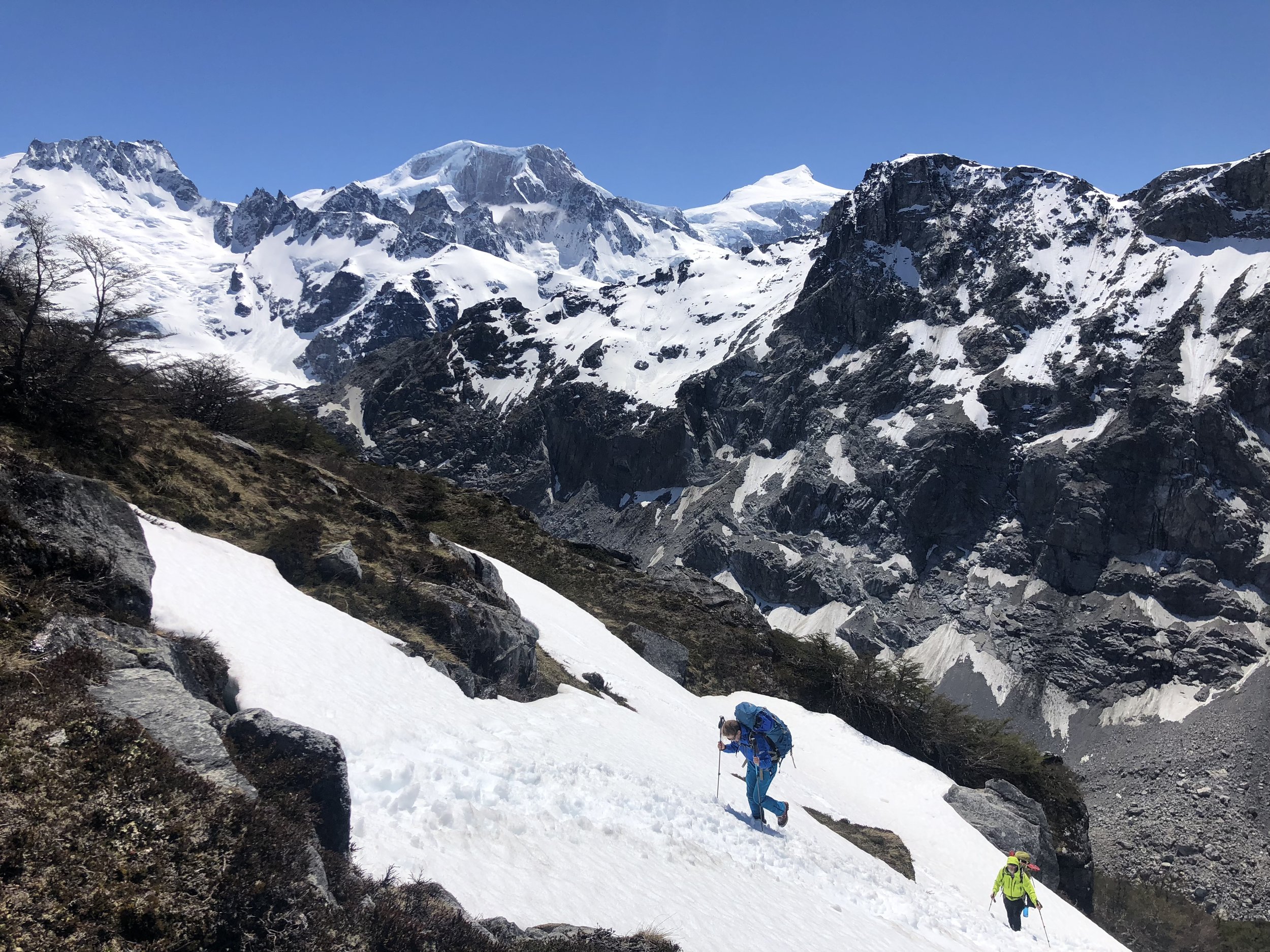
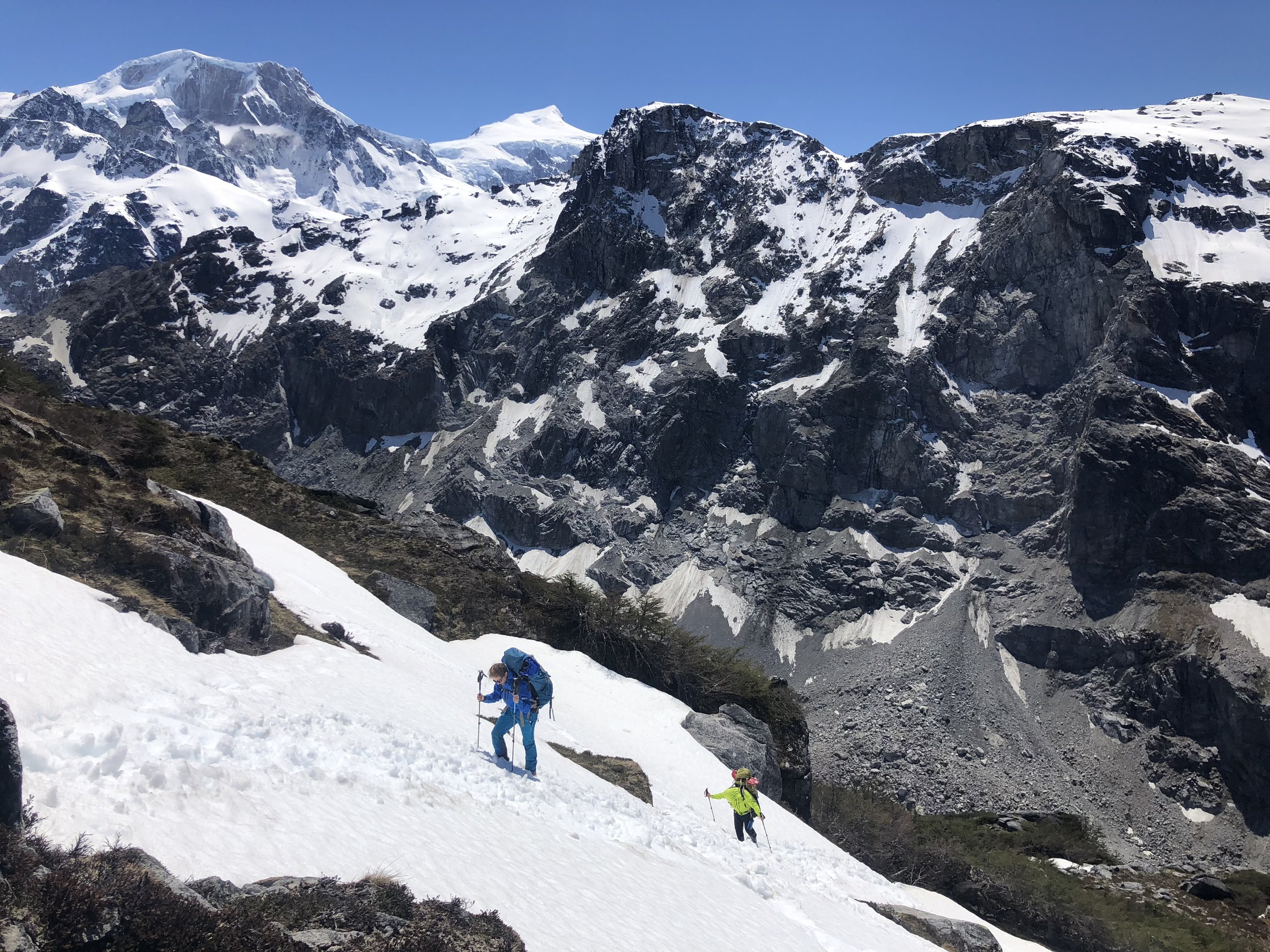
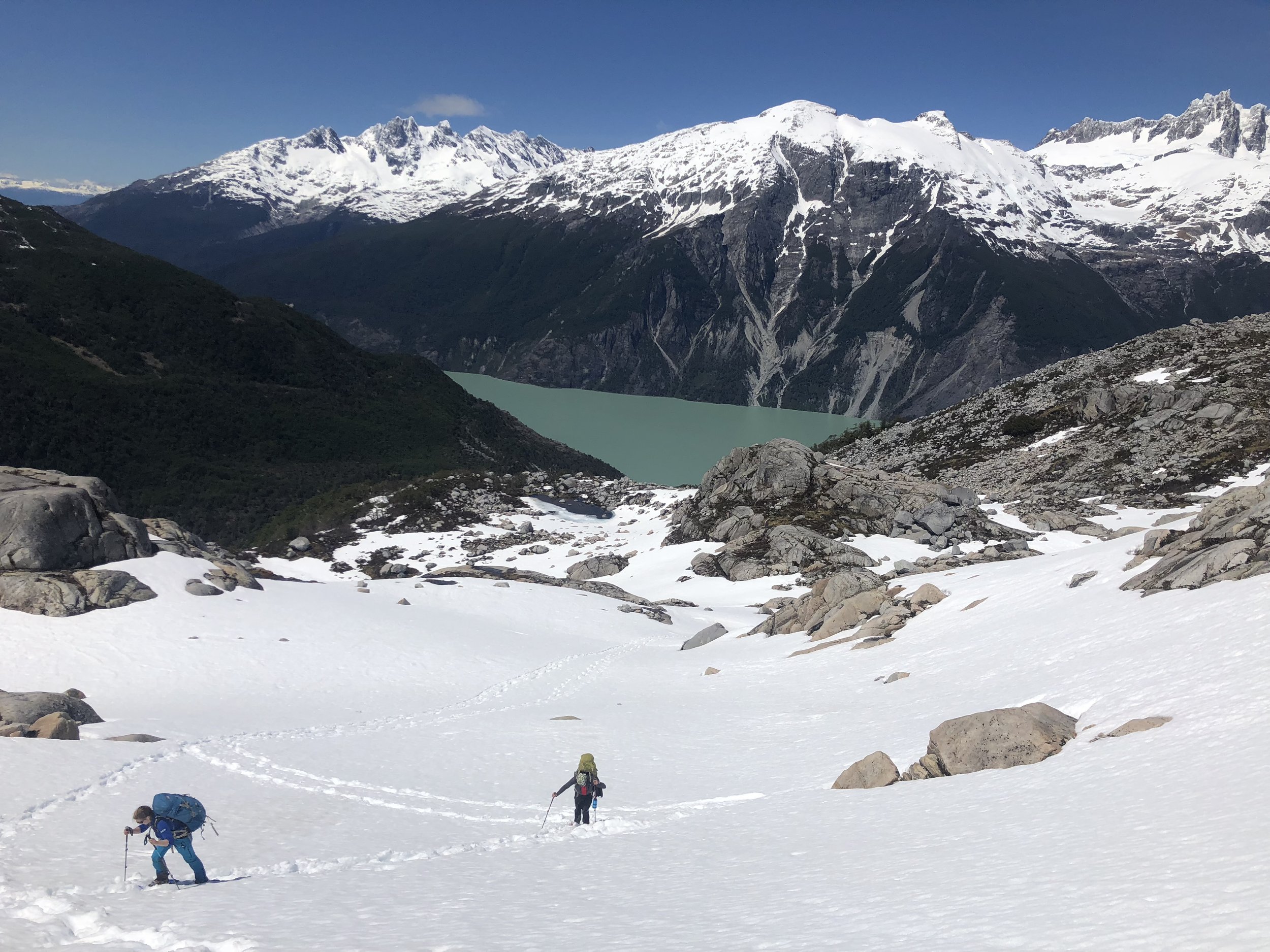
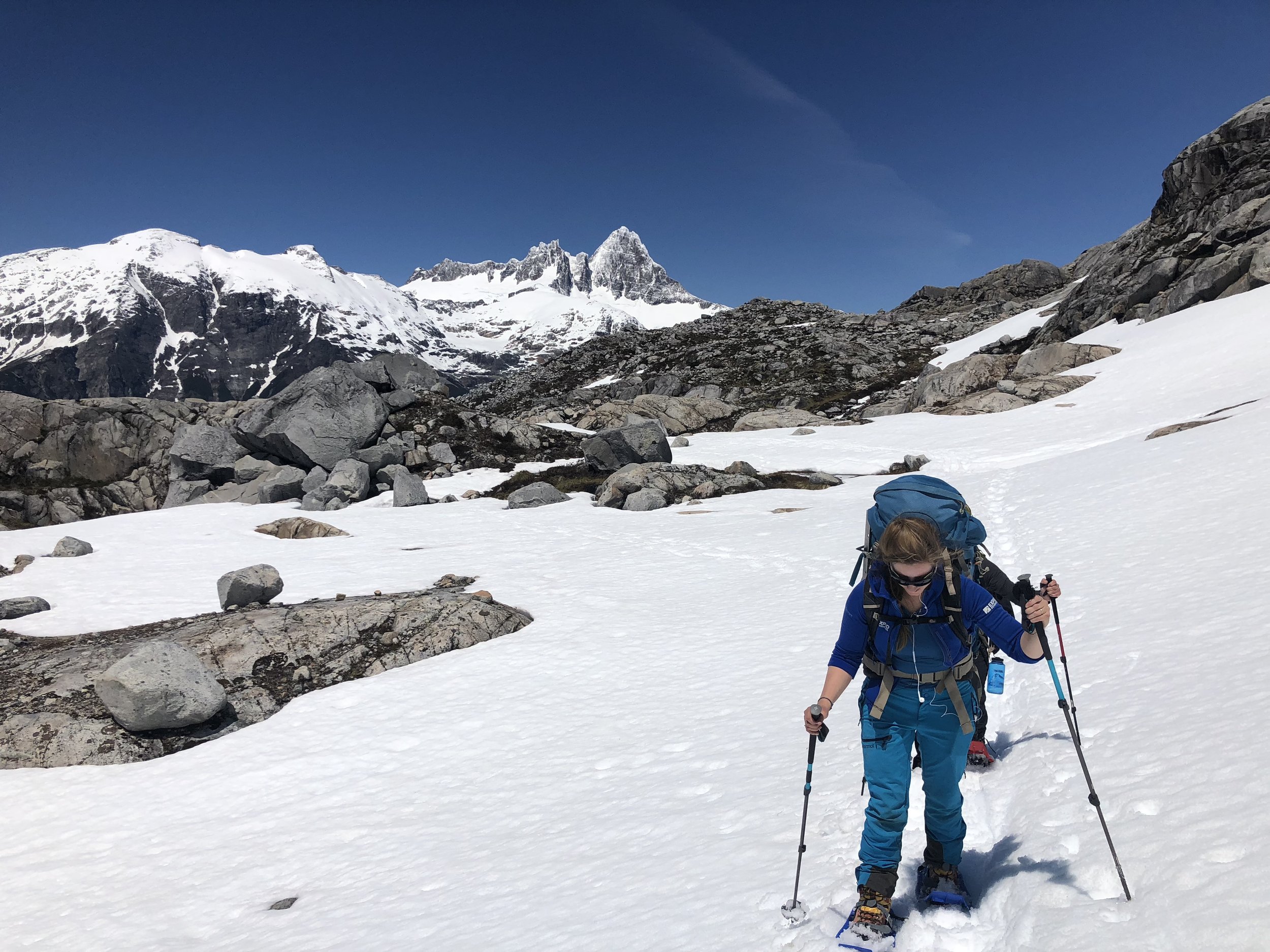
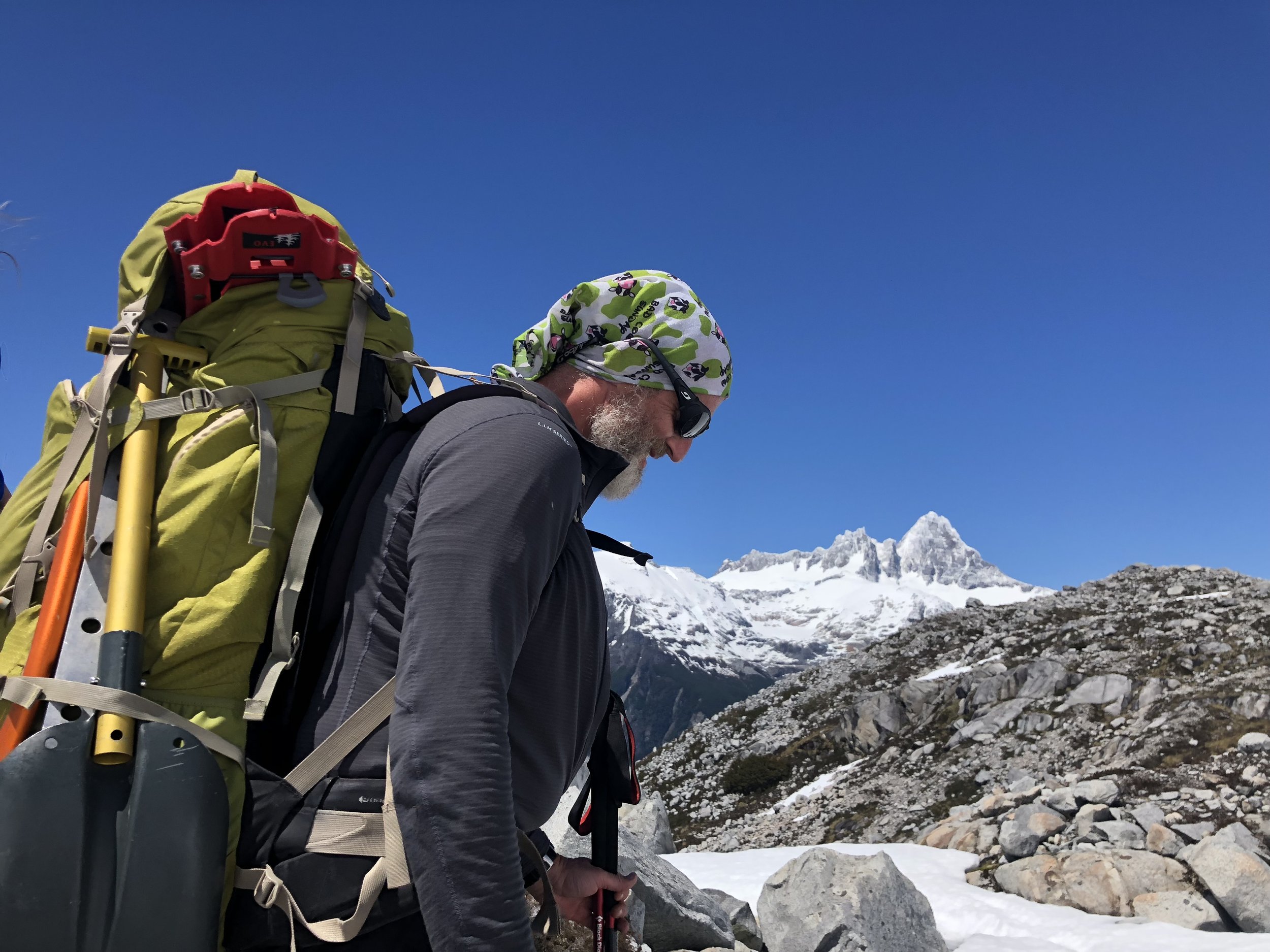
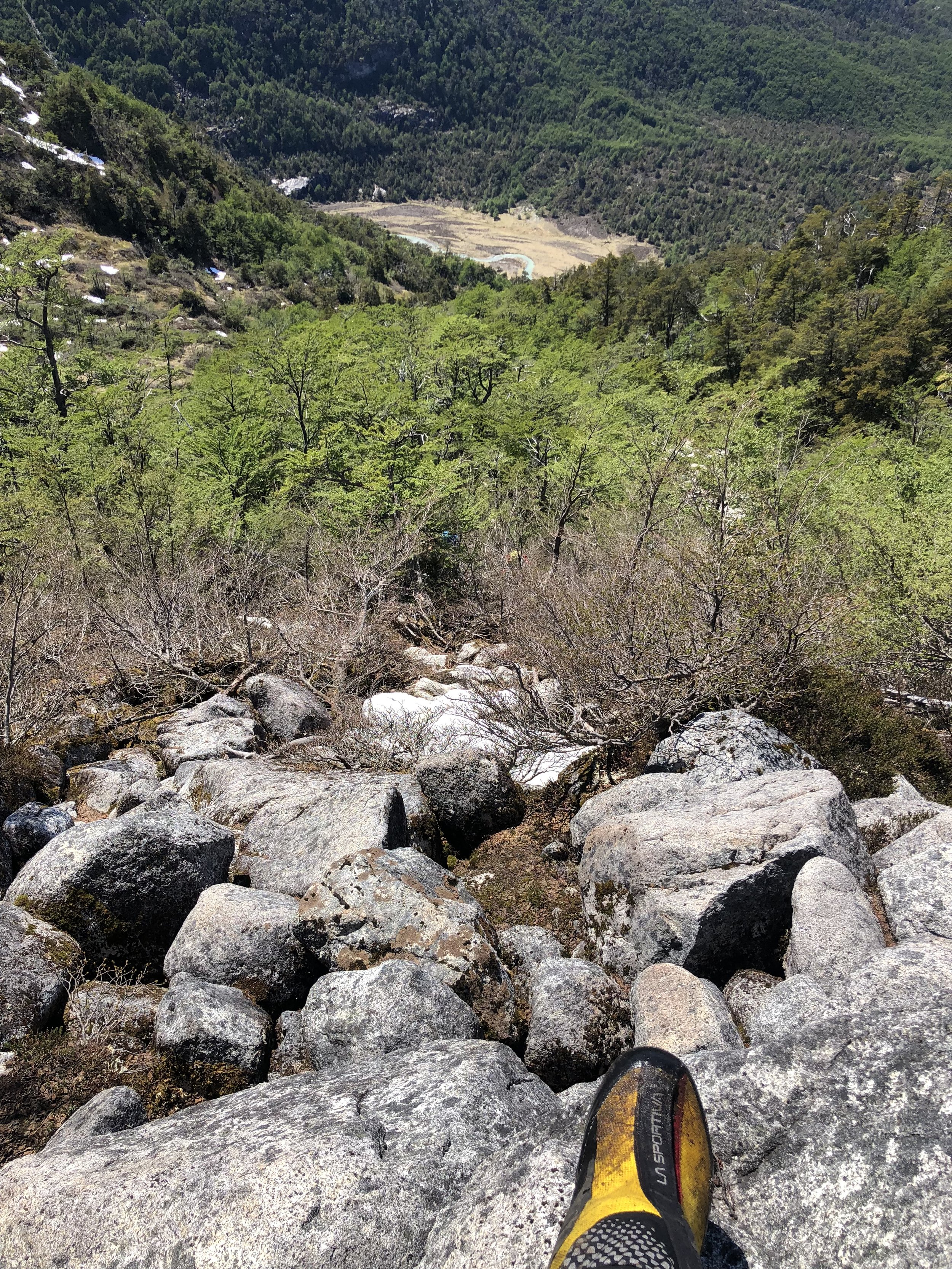
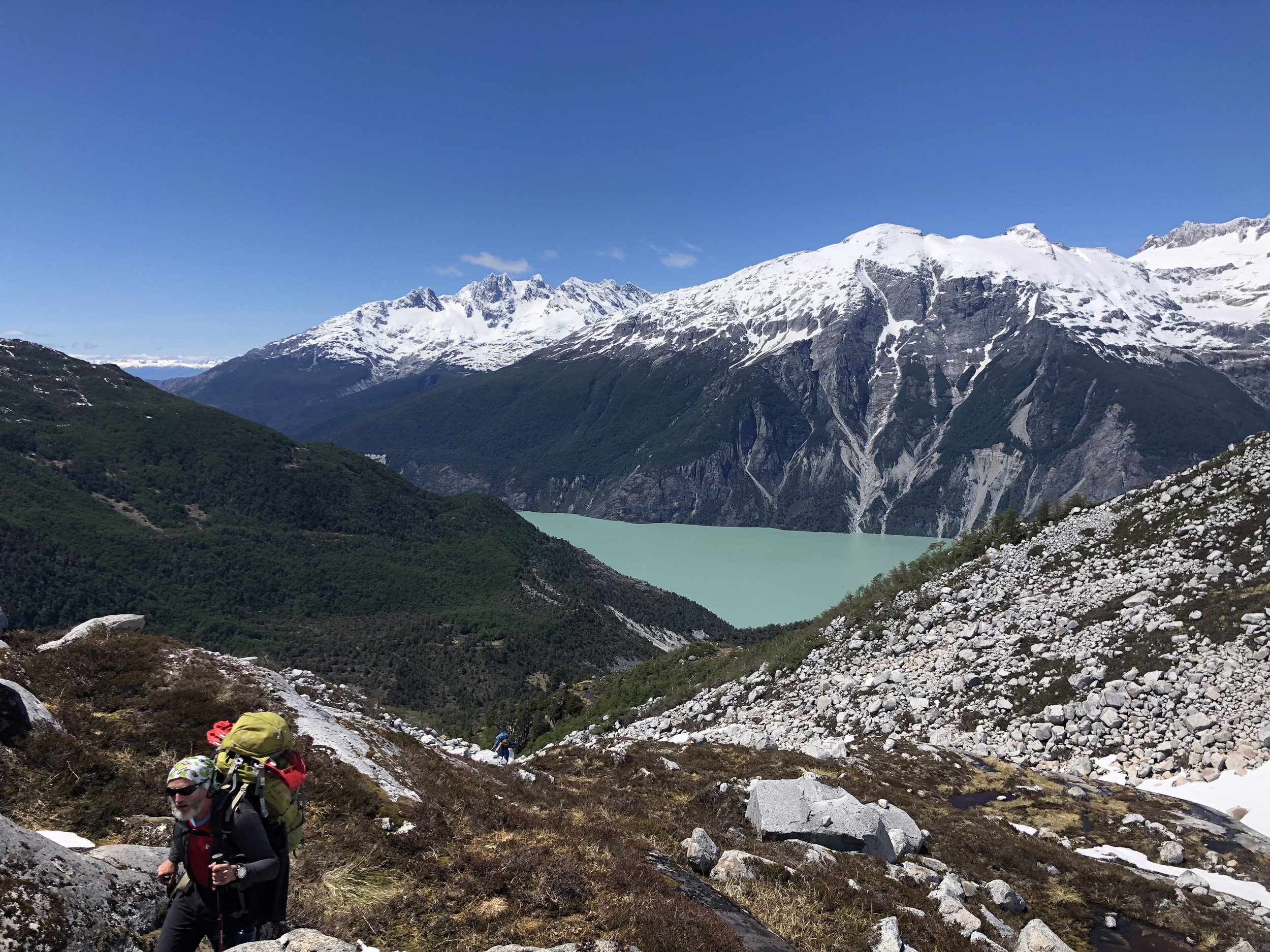
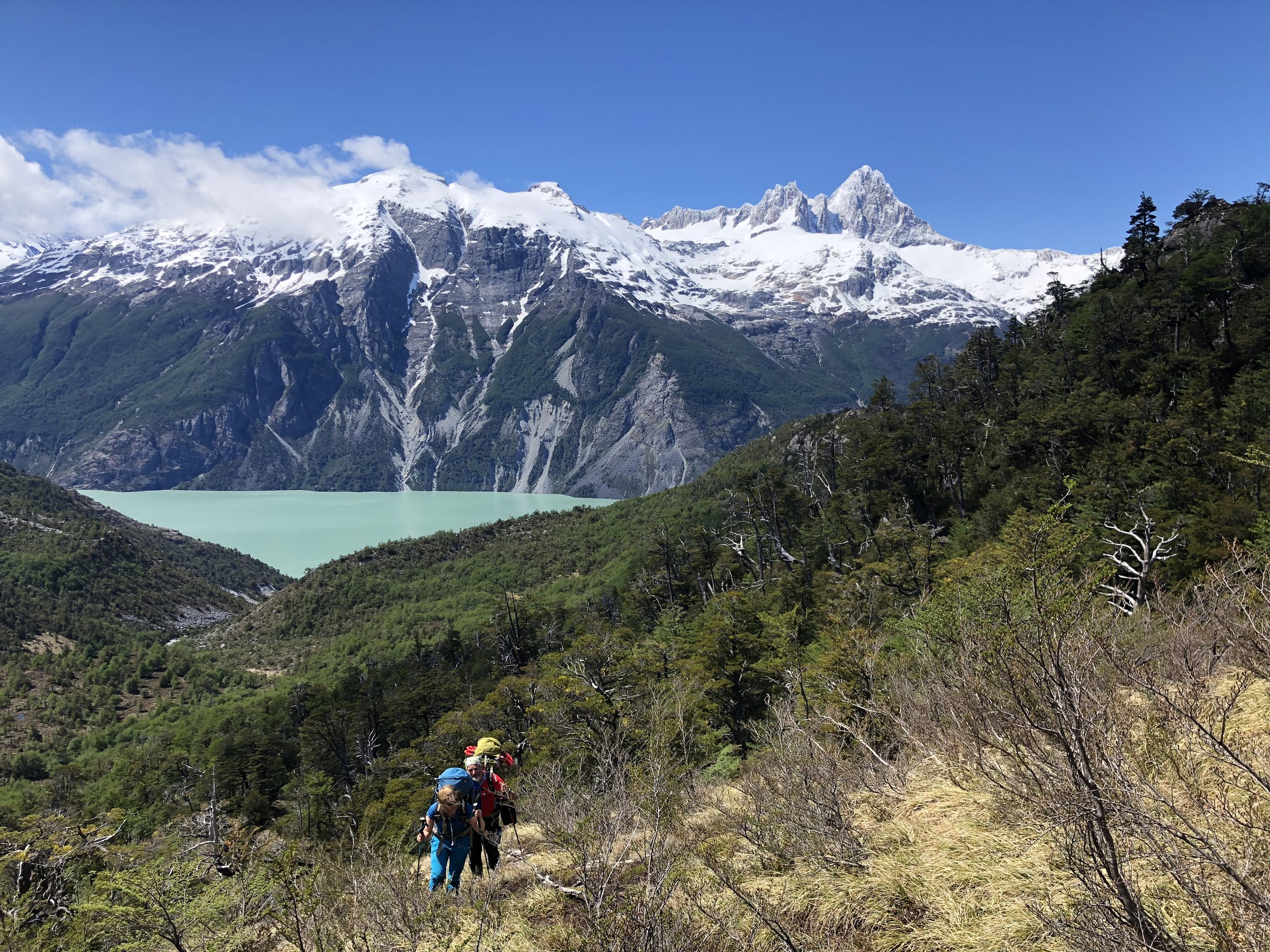

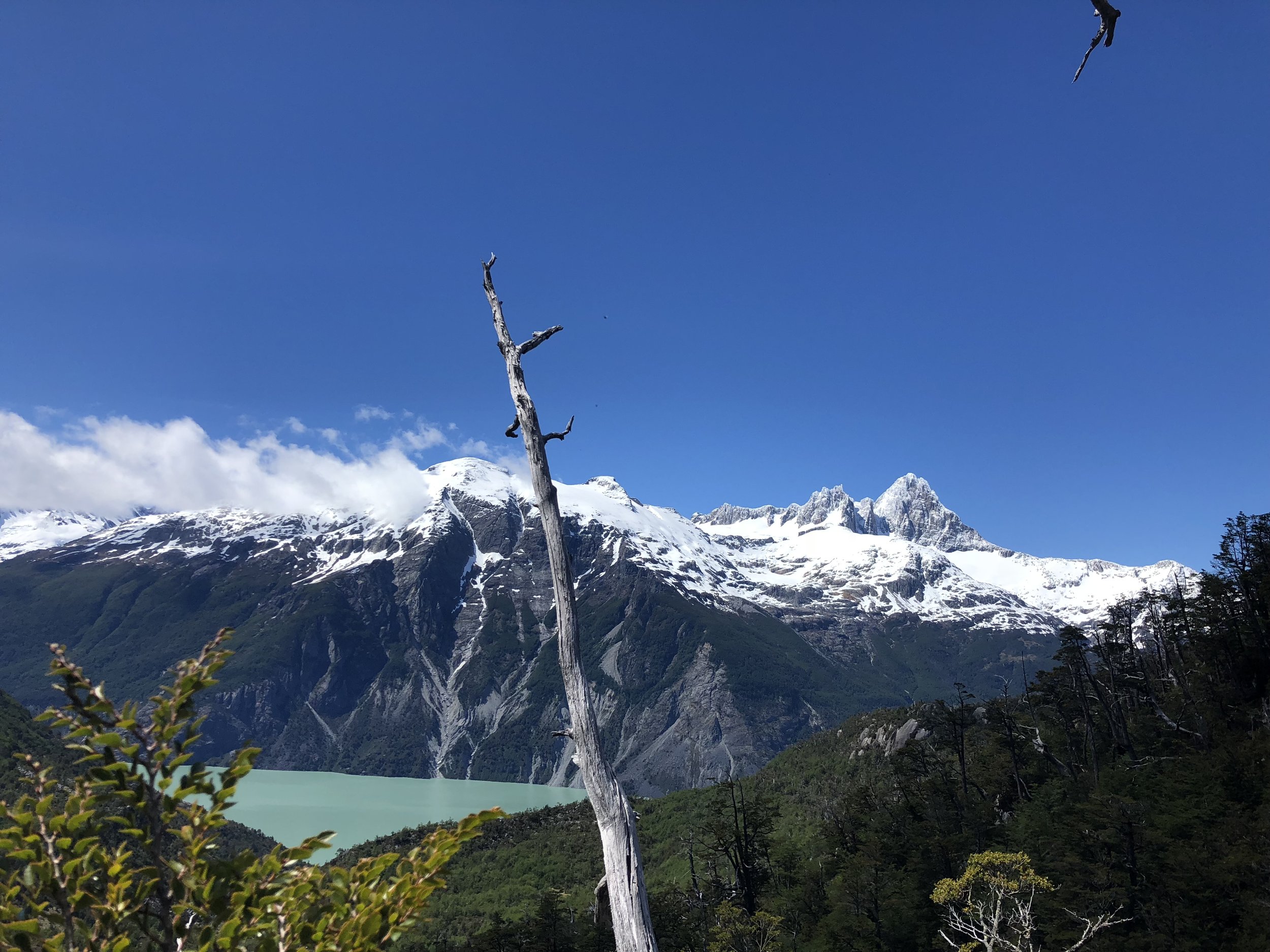
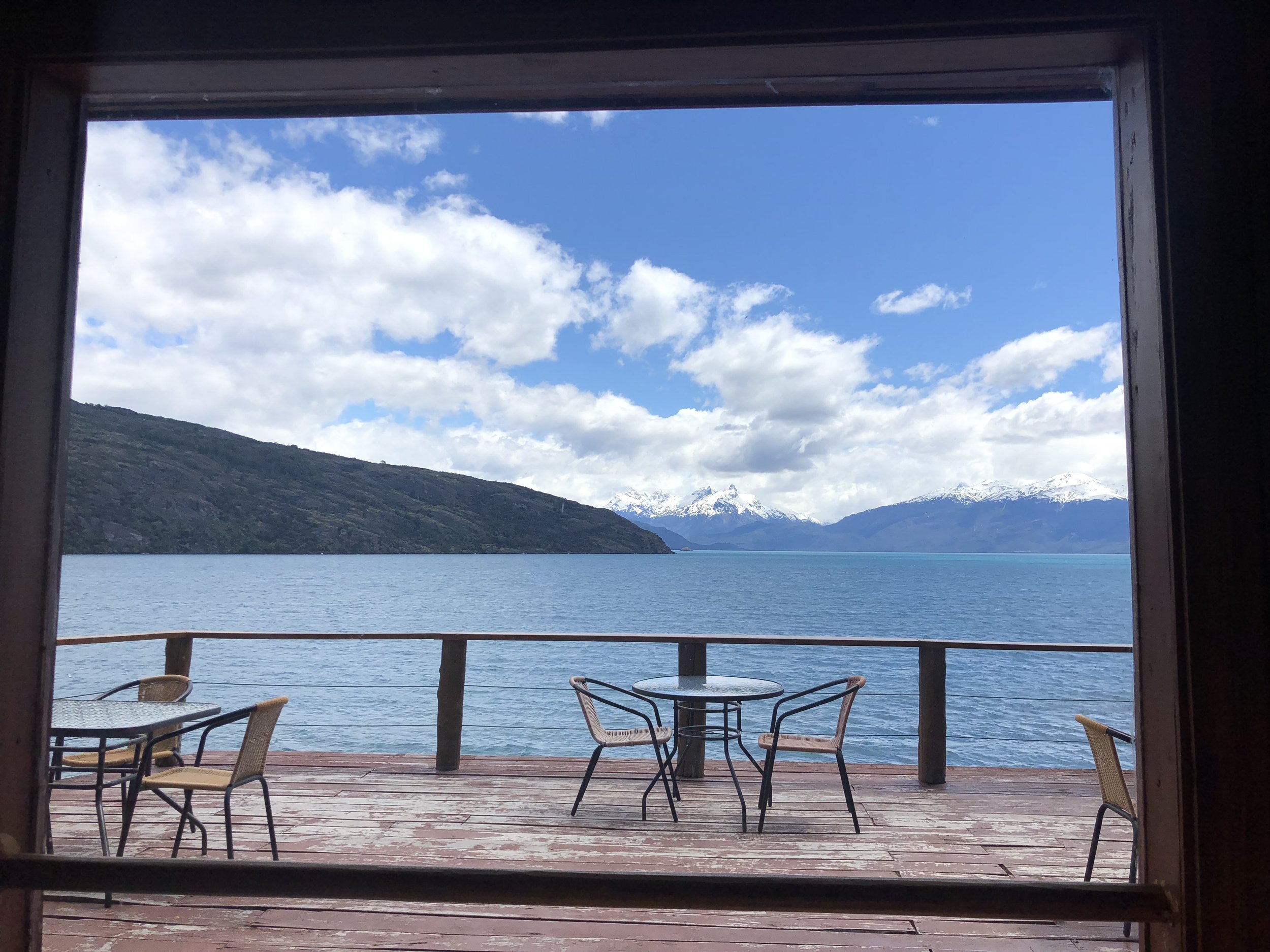
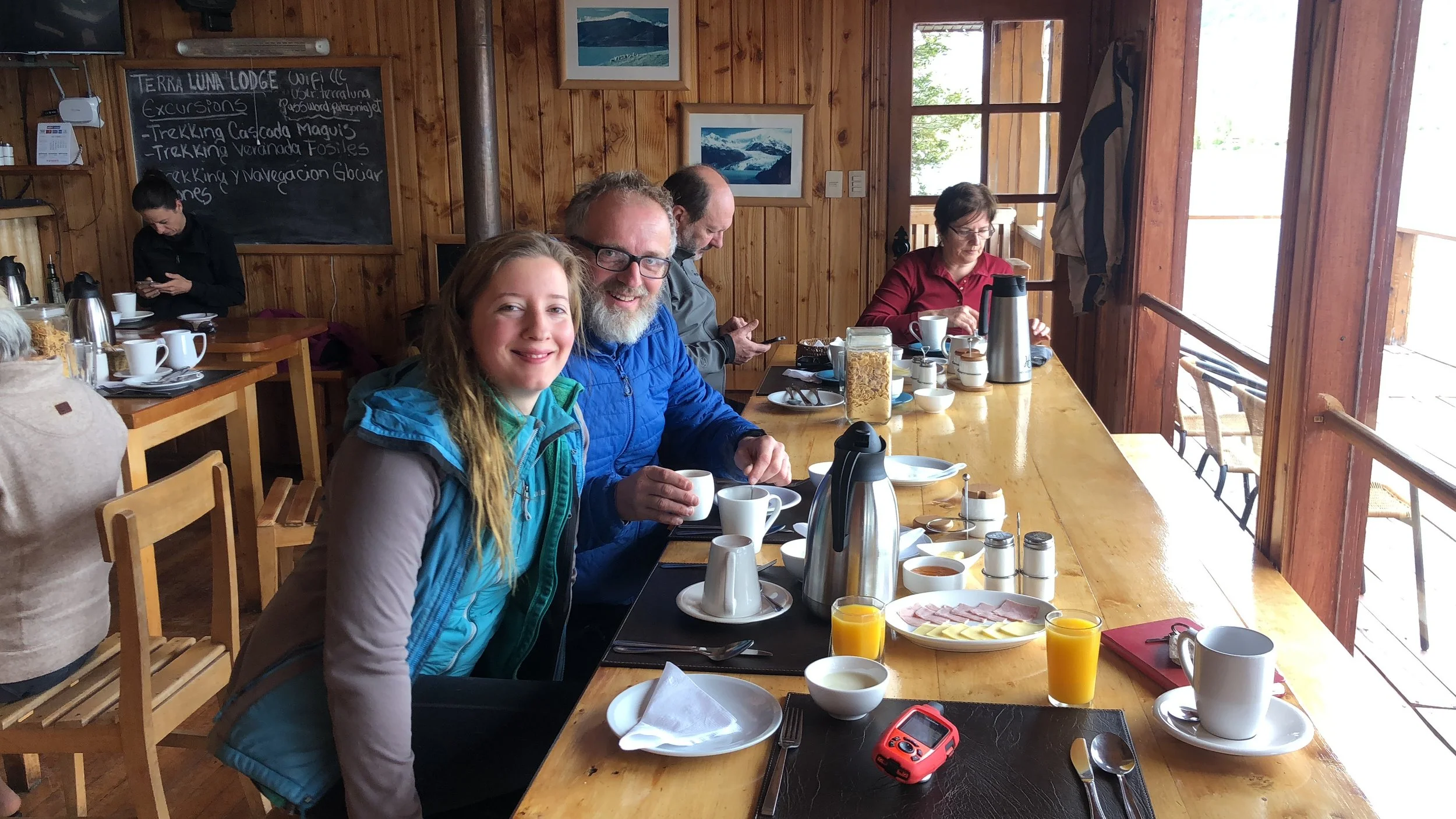

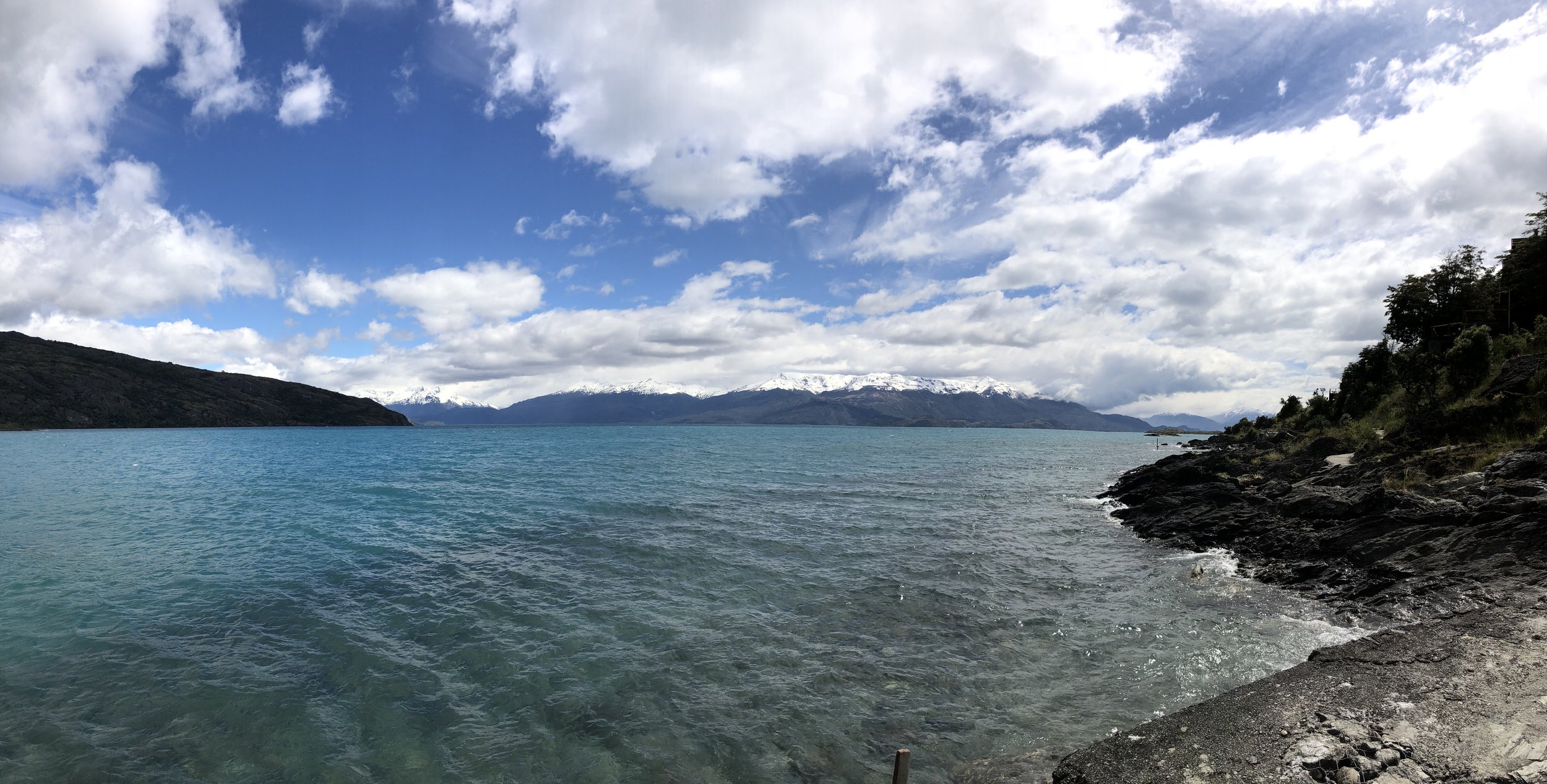



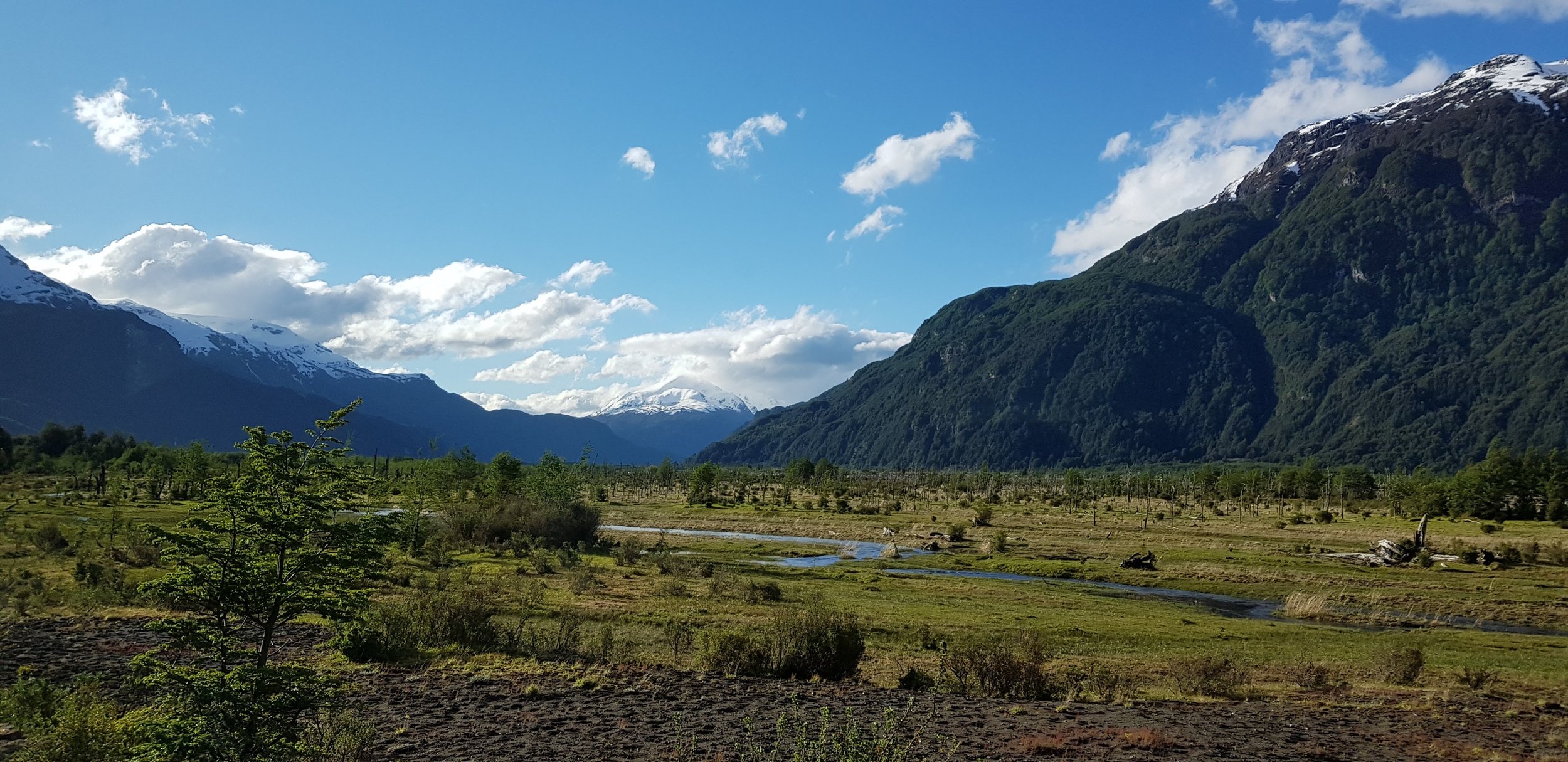
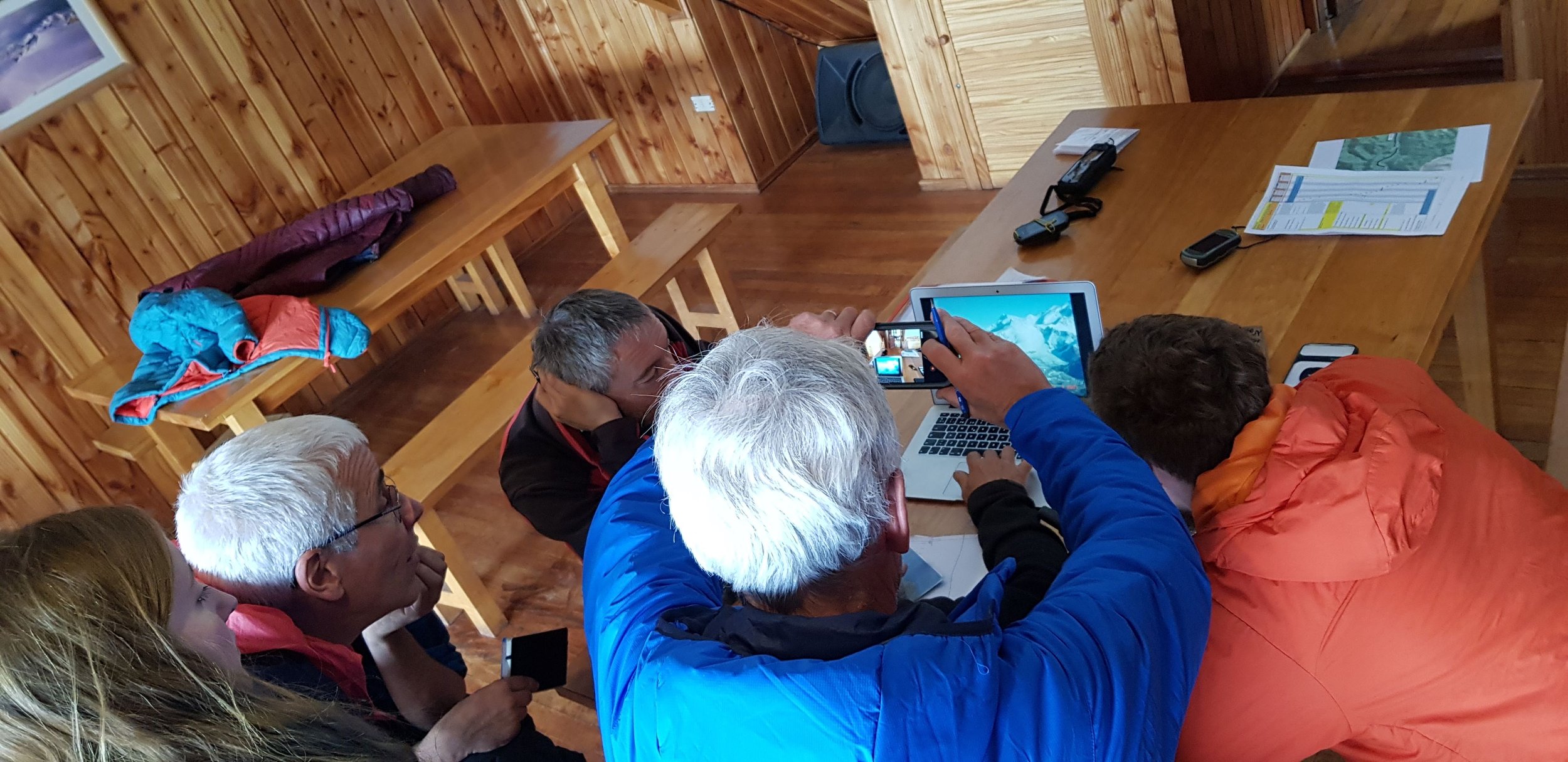

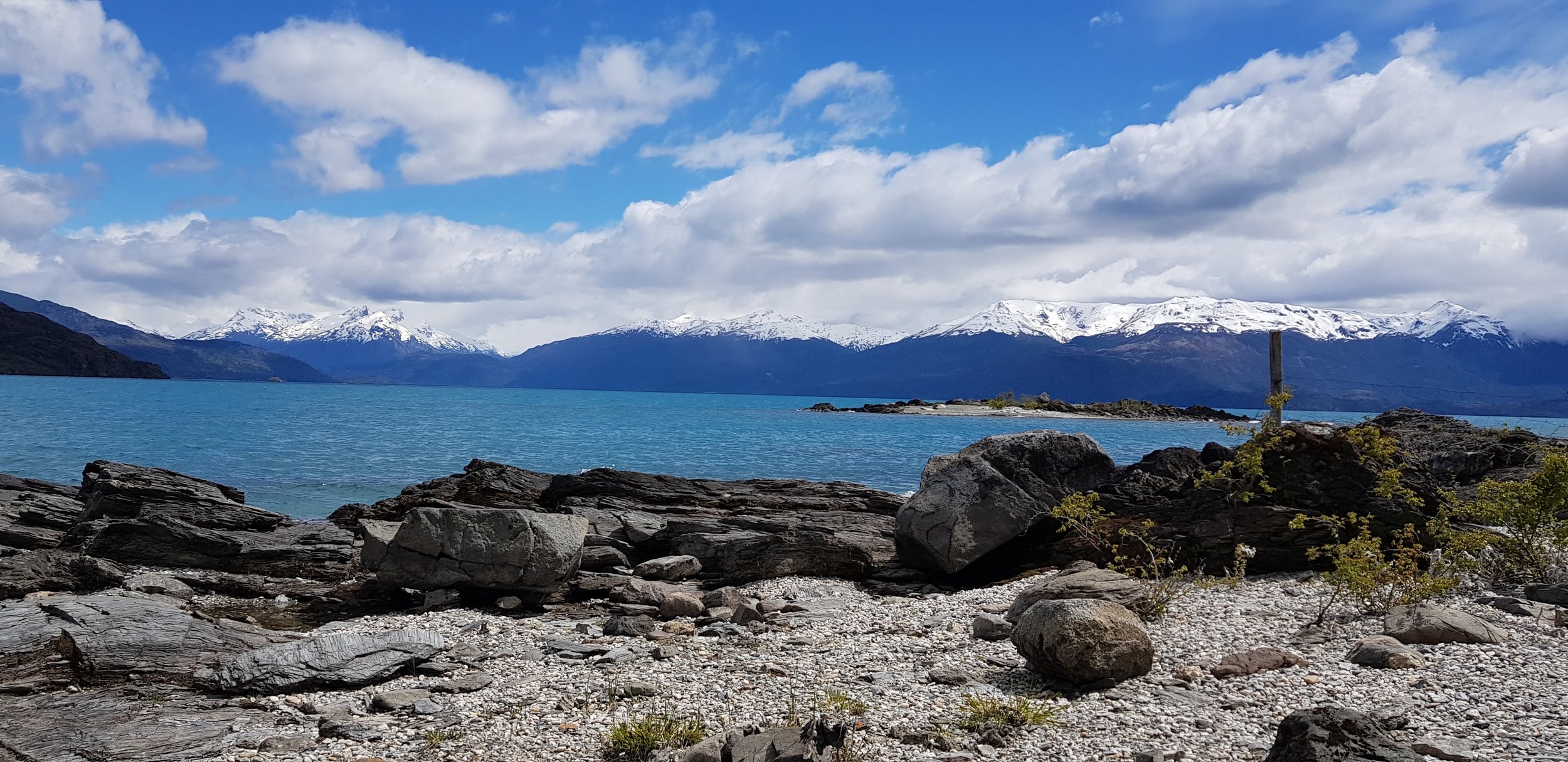
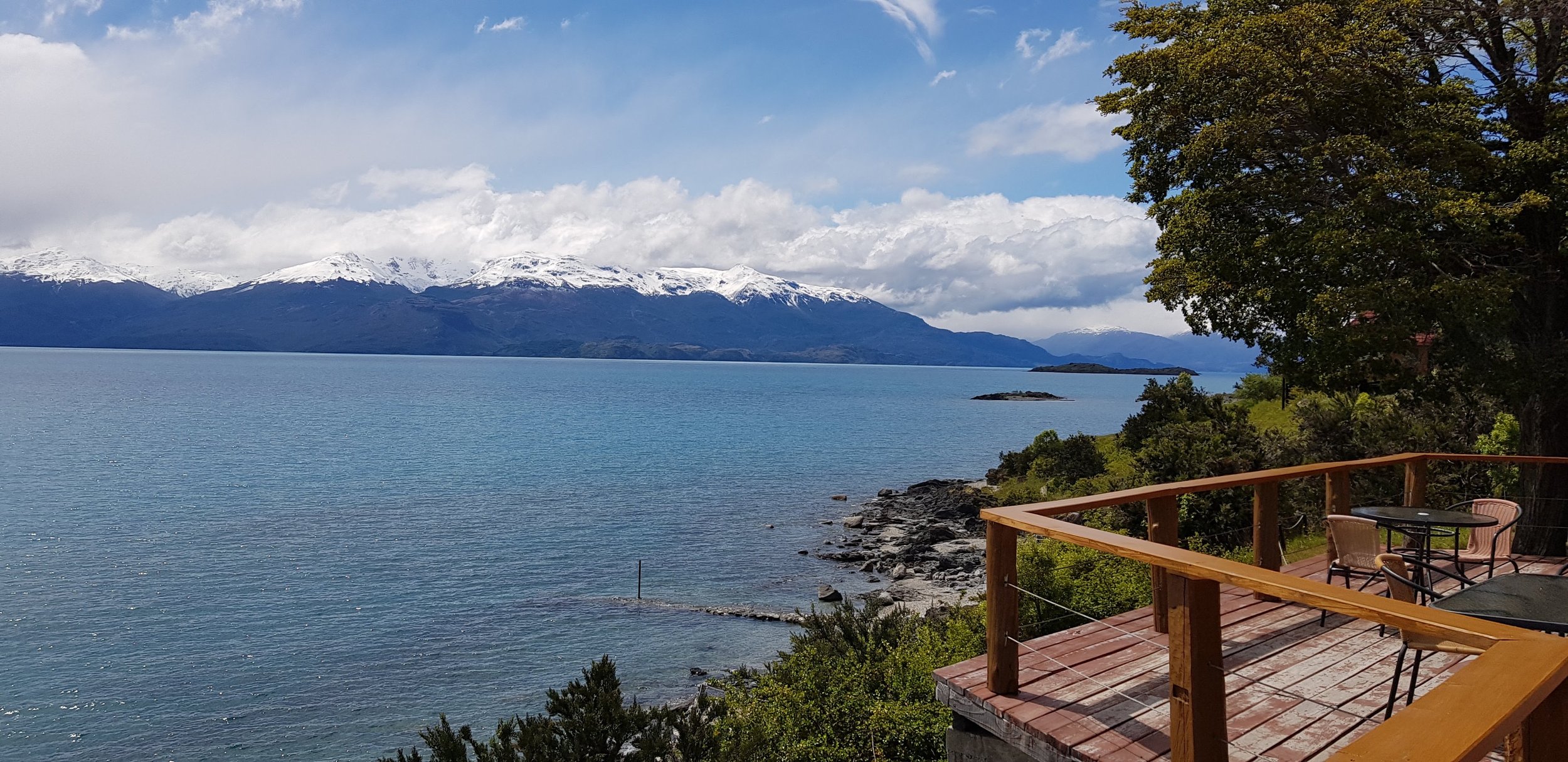

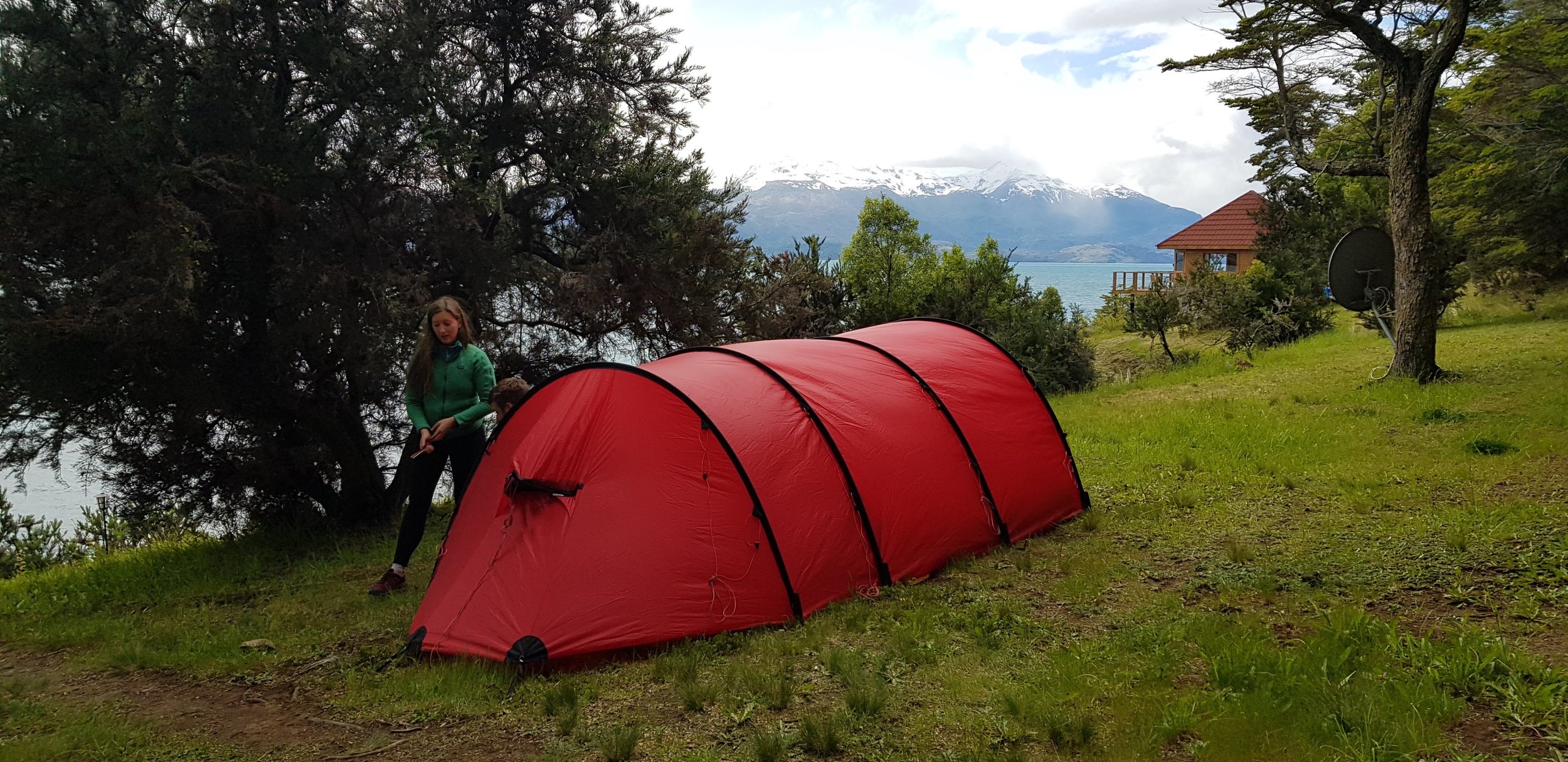
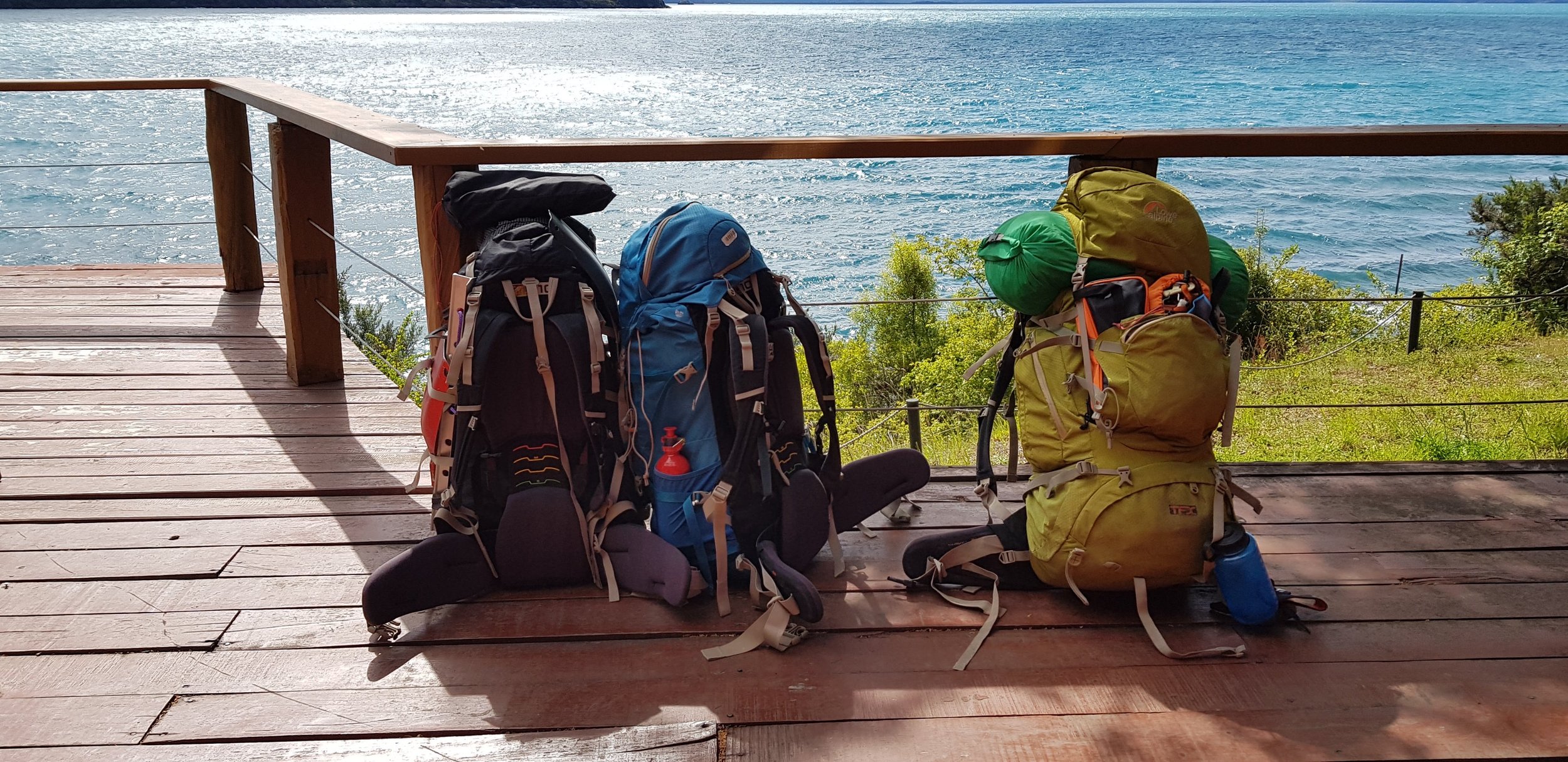


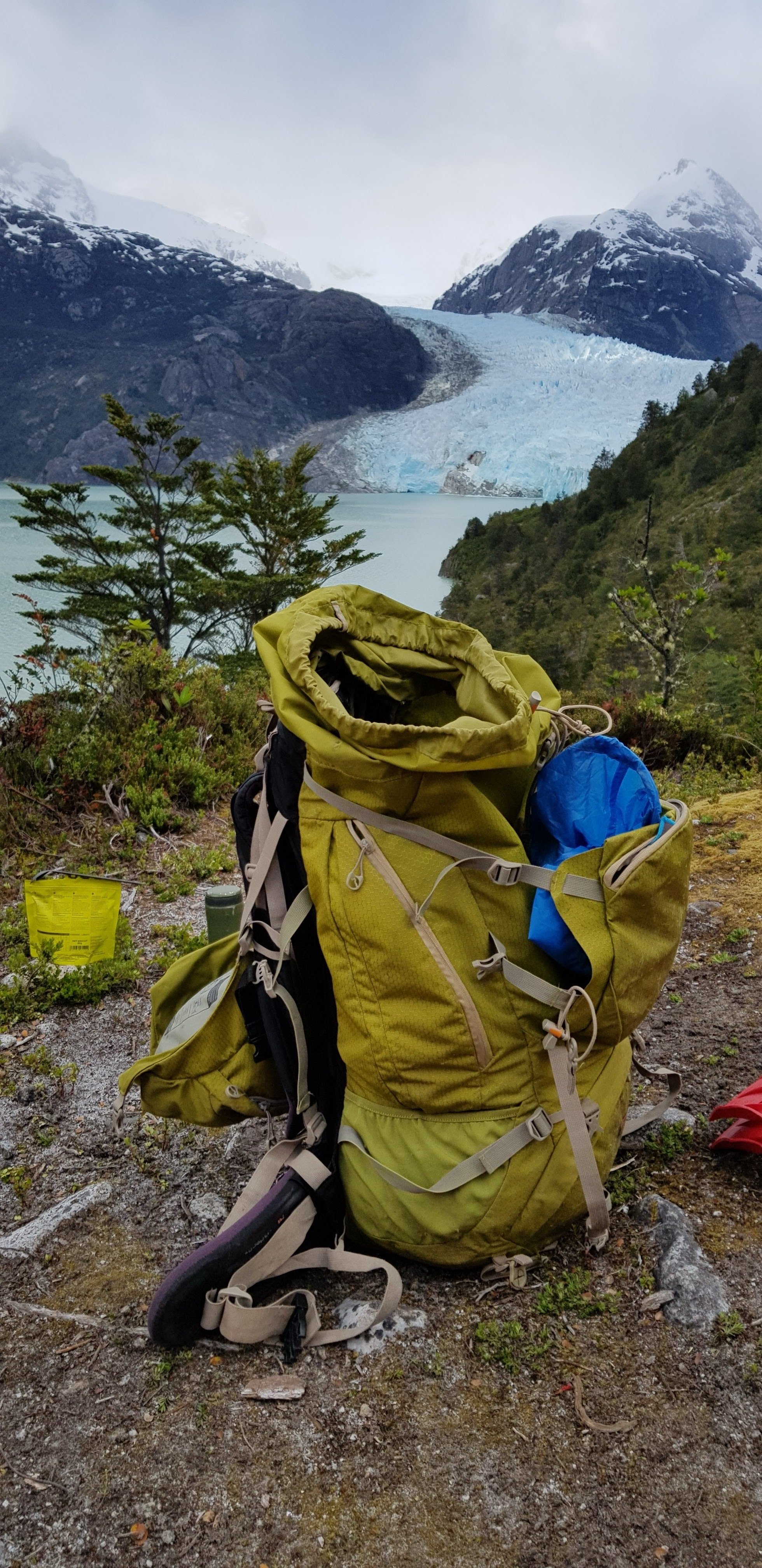












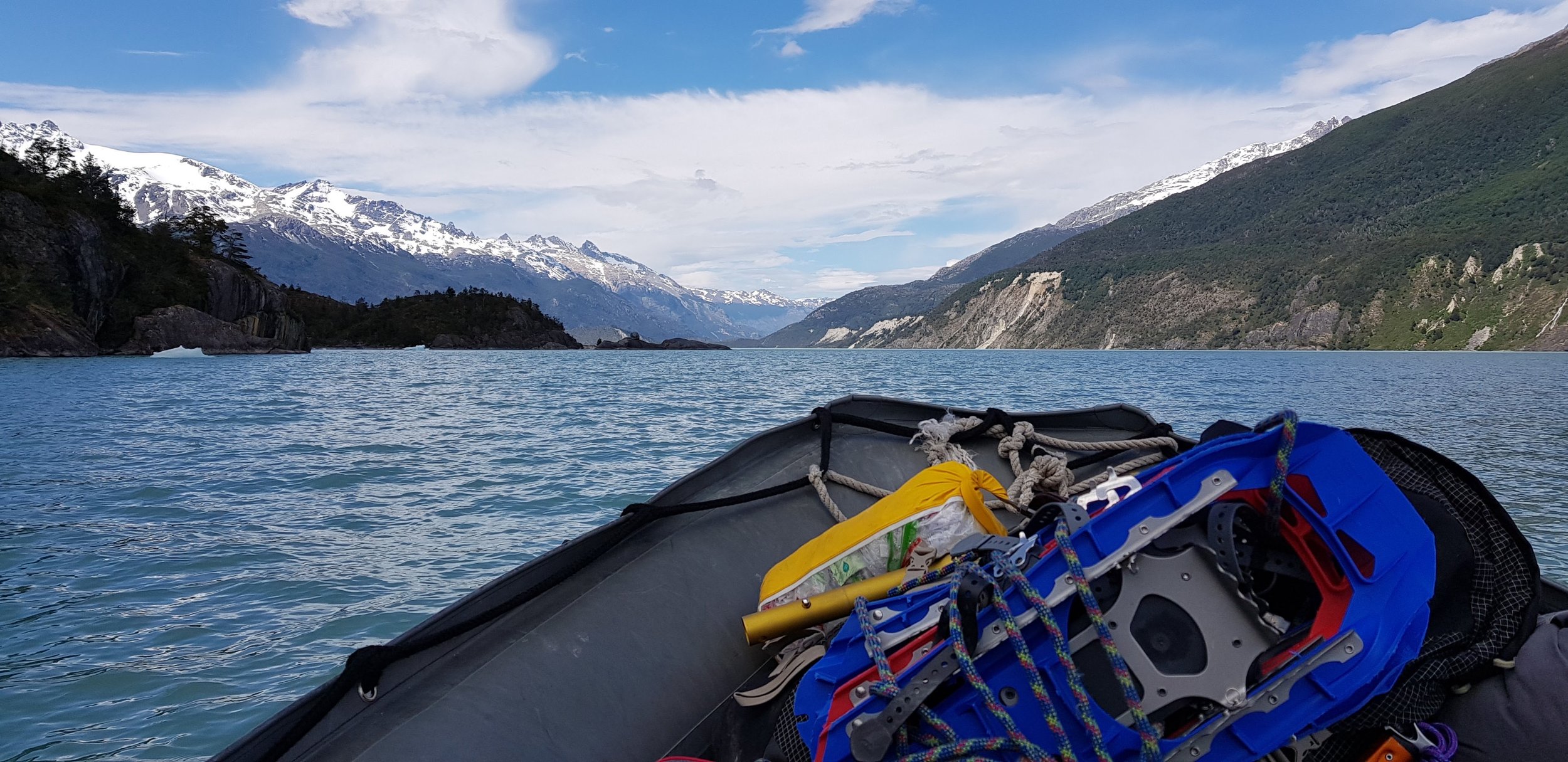
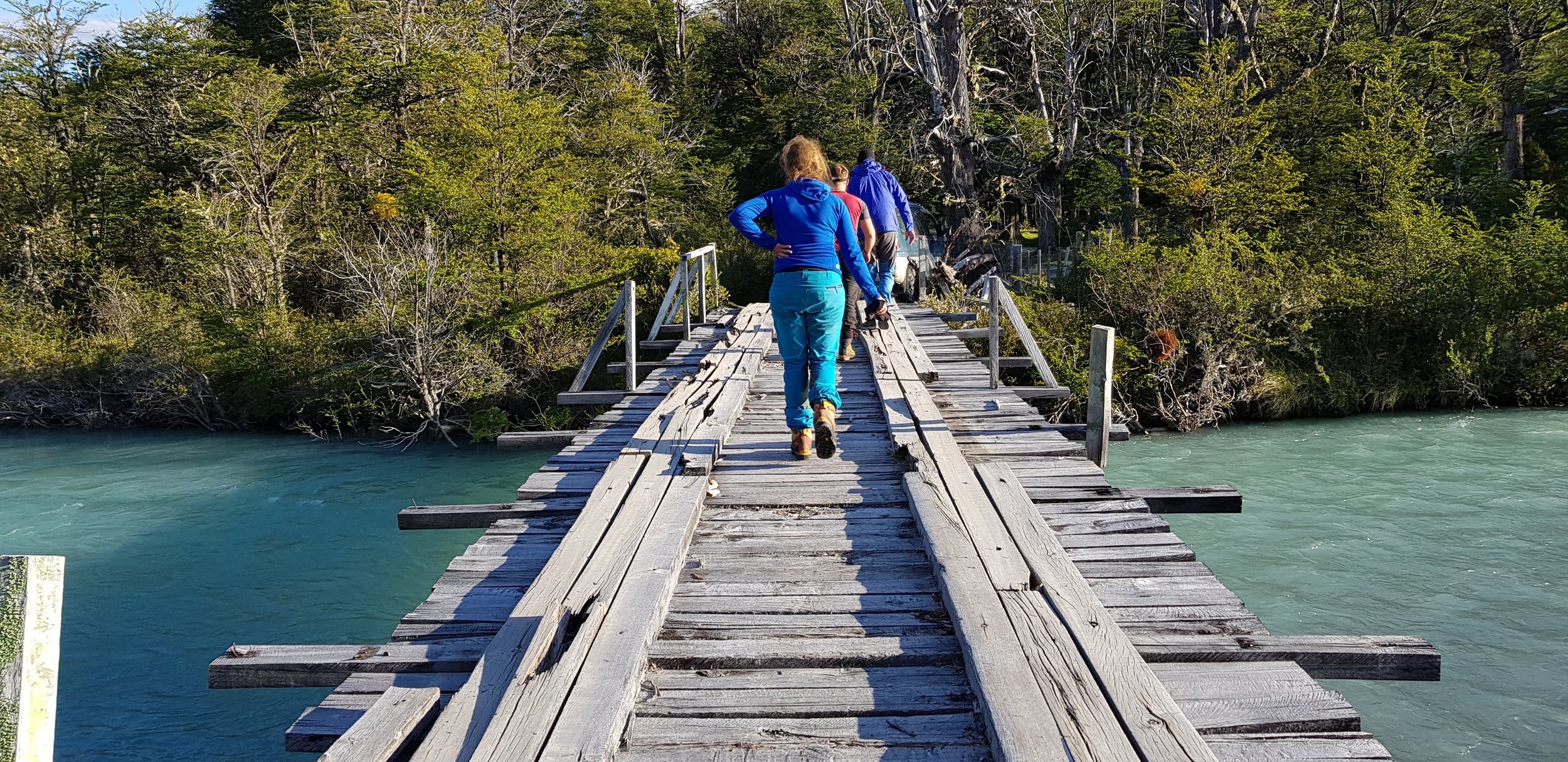




The detail
Cost per place on the expedition: £9995
-
Accommodation – 4 nights hotel/hostel style accommodation. 15 nights on the ice camping in Hilleberg tents.
All in-country transfers, including airport transfers.
Meals – All meals the ice.
Use of pulk system
Mountain tents, stoves + cooking equipment.
Crevasse Safety equipment.
Emergency communication systems(sat phone, Inreach)
Expedition food and fuel
Medical safety equipment and supplies
Expedition team leader 1:3 max ratio.
Access to our RMS team of doctors (please see website information for more details)
2 UK training courses one based around winter movements, equipment and crevasse rescue. Second course based around scrambling and rock climbing techniques.
-
-
The North Patagonian Icefield is a serious, committing expedition into one of the most remote and challenging environments on earth. To join this trip, you must have:
• Good fitness: You must be capable of sustained movement for up to 10+ hours a day while carrying a heavy rucksack or pulling a loaded pulk across glaciated terrain on snowshoes. This includes the physical and mental capacity to set up and break camp each day, even in poor weather.
• Prior winter expedition experience: You must have completed at least one multi-day, self-supported expedition in winter conditions, including living and camping in the cold.
• Mountaineering background: Ideally, you should have outdoor rock climbing or scrambling experience. If not, additional training to develop confidence on steep ground and in technical terrain will be required before departure.
• Winter skills: You must be comfortable using crampons, ice axes, and moving as part of a roped team on glaciated ground. Familiarity with crevasse rescue techniques is strongly recommended.
• Mental resilience and flexibility: Conditions vary widely across the Icefield. The east coast tends to be colder with snow conditions, while the west coast is often milder, wetter, and exposed to heavy rain. A flexible approach is essential — planned movements may be delayed for several hours or more due to weather, poor visibility, or difficult ground. Sections of steep, technical terrain will be encountered, where lowers and abseils will be required.
If you are unsure whether your experience is suitable, we are happy to discuss it with you and advise on training or preparation where needed.
-
In Coyhaique, we start with basic hotel accommodation on a twin-shared basis, offering a comfortable place to prepare for the expedition ahead.
Once out in the wild, we camp in Hilleberg Keron 3GT tents, with two people per tent to ensure plenty of space. These tunnel tents are part of Hilleberg's Black Label range, the most robust on the market, and have been a cornerstone of our expeditions for over 15 years. Designed for extreme conditions, they include features such as double pole sleeves for added strength in high winds and a ventilation system that minimises snow accumulation by encouraging the outer material to shake off snow buildup. These small but vital details make the Keron 3GT a world-class choice for the harsh environment.
-
On a polar expedition, the body requires an average of 4,000 to 6,000 calories per day to fuel the physical demands of trail breaking, pulling a pulk, and enduring sub-zero temperatures. Balancing energy needs with food you enjoy is essential—not just for performance but for morale.
We provide bespoke rations tailored not only to meet your nutritional needs but also to include foods you genuinely enjoy. Before departure, you’ll receive a comprehensive food list to review. If there’s something you’d like to add, we’re happy to accommodate—your input helps ensure everything is just right. (Don’t worry—there won’t be any pemmican or seal fat in there!)
Once finalised, your rations will be carefully packed and waiting for you in-country, ready to be loaded into your pulk for the journey ahead. This attention to detail ensures that when you’re out in the wilderness, you’ll have everything you need to stay fuelled and focused.
-
Please scroll down and you will see the dates :)
Available Trip departures
07th - 31st November 2026
07th - 31st November 2027

Giving You Unmatched Expertise and Personalisation on Your Trip
Why Choose Nordur for Your Scottish Highland Adventure
Local knowledge
Nordur stands apart in the world of adventure travel with its deep-rooted local expertise. Led by our founder, Jamie, a seasoned guide with over 17 years experience, and is not only a local but a huge enthusiast of the Scottish wilderness, Nordur offers an authentic experience that larger, outsourced tours simply cannot match. We know every hidden trail and secret spot that makes Scotland unique, offering you a richer, more immersive experience.
Sustainability and Respect
At Nordur, we are deeply committed to preserving the stunning landscapes we explore. We practice Leave No Trace principles and engage in efforts to maintain the natural beauty and integrity of the Scottish wilderness. Choosing Nordur means supporting eco-friendly tourism and contributing to the conservation of these magnificent areas for future generations.
Tailored Adventures
Each expedition is carefully crafted to match the desires and abilities of our guests. Nordur specialises in creating personalised experiences that cater to your interests, whether you're seeking thrilling mountain ascents or serene moments by secluded lochs. Our small group sizes ensure that your journey is attentive and responsive to your pace and preferences.
All-Inclusive Expeditions
From high-quality camping gear to expert navigation and safety equipment, everything you need for your journey is provided. Our packrafts are state-of-the-art and we provide you with full training, ensuring that you can navigate the lochs with ease and safety. With Nordur, you can focus fully on your adventure, knowing that all logistical details are expertly handled.
Choosing Nordur means embarking on an expedition where every detail is designed to offer a profound connection with Scotland's natural wonders and cultural heritage. It’s more than just a trek —it’s an expedition into the heart of the wild, guided by those who call it home.
Join us for an unforgettable adventure that pushes your limits and takes you beyond the ordinary, into the extraordinary landscapes of the Scottish Highlands.
Ready for an adventure?
When you come on an expedition with Nordur, it’s not just a trip; it’s a pivotal life experience.
Spaces are limited to maintain the quality and intimacy of the expedition. Reserve your place on this extraordinary adventure today and discover why Nordur's Fannichs and Fisherfield expedition is the ultimate Scottish highland adventure.
Not sure this adventure is right for you? Contact us to discuss our LITE version of this trip.
We also offer a whole range of other bucket list adventures, both in Scotland and Internationally. Check out our other expeditions here or give us a call to discuss your perfect adventure.







